- Skip to primary navigation
- Skip to main content
- Skip to footer
Green Global Travel
World's largest independently owned Ecotourism / Green Travel / Sustainable Travel / Animal & Wildlife Conservation site. We share transformative Responsible Travel, Sustainable Living & Going Green Tips that make a positive impact.

Ecotourism in Costa Rica: The Ultimate Eco Travel Guide
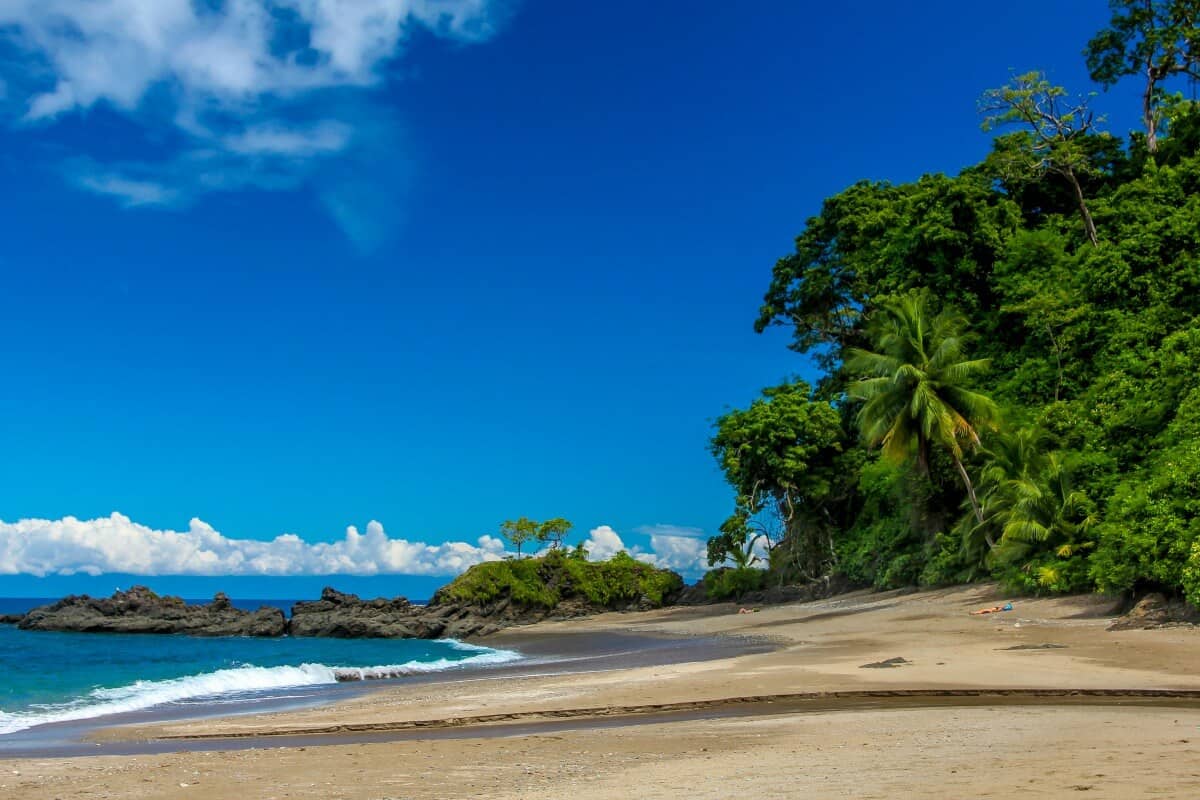
Things To Do In Costa Rica
Where to stay in costa rica , culture & food in costa rica , costa rica travel tips , fun facts about costa rica, stories about costa rica .
Costa Rica has been ranked among the world’s best ecotourism destinations on more than one occasion, and became the first country in the Americas to ban hunting in 2012. As a result, its biodiversity is virtually unparalleled.
The first European to explore Costa Rica was Christopher Columbus, who arrived in 1502. By the time he arrived, there were four indigenous tribes in Costa Rica– the Caribs, Borucas, Chibchas, and Diquís tribes.
Few of these indigenous peoples survived the dawn of Spanish colonialism, and African slaves were brought in to work the land.
Despite its colonial past, Costa Rica eventually managed to achieve a lasting democracy. Unique among its Central American neighbors, it’s a peaceful country with no army, excellent infrastructure, a high standard of living, and impressive conservation efforts.
Check out our extensive guide to Costa Rica Ecotourism:
Things To Do In Costa Rica
Costa Rica boasts 26 National Parks , 58 wildlife refuges, 32 protected zones, 15 wetland areas, 11 forest reserves, and 8 biological reserves.
Over 25% of the country’s 19,730 square miles is protected from future development.
Ecotourism in Costa Rica encompasses a diverse array of ecosystems, from cloud forests and rainforests to wetlands and coastal marine areas.
With so many different things to do in Costa Rica, it can be difficult to narrow them down. However, there are certain places that should be a must-see on every eco-traveler’s itinerary.
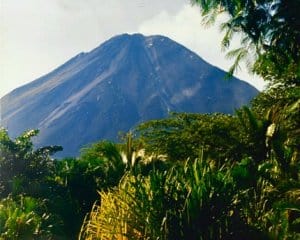
1. Arenal Volcano National Park
One of the most active volcanoes in the world until 2010, the 5,480-foot Arenal Volcano dominates the landscape of northwestern Costa Rica. Located near the tiny town of La Fortuna, the volcano has been dormant for years. But the area remains a popular ecotourism destination thanks to Lake Arenal, La Fortuna Waterfall, and various hot springs. And of course the mountain still looms ominously over the verdant landscape, like a sleeping giant just waiting for the opportune moment to re-awaken.
2. Ballena Marine National Park
Ballena Marine National Park , one of the newest national parks in Costa Rica, is widely considered among the best places in the Americas for whale-watching. This is due to the fact that both Northern and Southern Humpback Whales migrate through this area. The park also offers 8.69 miles of beautiful beaches, a small estuary, and snorkeling Central America’s largest coral reef on the Pacific Ocean.
3. Caño Island
Located off the coast of the Osa Peninsula, Caño Island became a biological reserve in 1978. Among the island’s towering evergreens, the Diquís tribe’s hand-carved stone spheres have baffled archeologists for years. Caño Island is considered one of the world’s best Scuba diving spots: It’s surrounded by five platforms of coral reefs. Divers have the chance to see Eels, Lobsters, Sharks, Sea Turtles, and possibly Whales during winter.
4. Corcovado National Park
Described by National Geographic as “the most biologically intense place on earth,” Corcovado National Park is the largest in Costa Rica . Located on the Osa Peninsuala, it’s a haven for bird-watchers, hikers, and wildlife photographers. There are 13 different ecosystems here, with extensive trails through highland cloud forest, mangrove swamps, lowland rain forests, and sandy beaches. The biodiversity in Corcovado is remarkable, ranging from Monkeys and Sloths to rare species such as Jaguars and Baird’s Tapirs.
5. Manuel Antonio National Park
Ranked among the world’s most beautiful national parks by Forbes , Manuel Antonio annually attracts around 150,000 visitors. They’re drawn by its beautiful beaches and hiking trails through primary forest, secondary forest, mangrove swamps, and lagoons. The park boasts 184 species of birds and 109 species of mammals. The most frequently sighted are the Monkeys. But beware: They’ve become so habituated, they’re renowned for stealing food and other items!
6. Monteverde Cloud Forest Reserve
When it comes to ecotourism in Costa Rica, Monteverde ranks among the most beloved attractions. It’s easy to see why: With six different ecological zones, the reserve boasts extraordinary biodiversity. There are around 100 mammal species, 120 reptilian and amphibian species, 400 bird species, and more than 2,500 plant species. It also has a Nature Center, bat jungle, butterfly gardens, frog pond, and many hiking trails, suspension bridges, and ziplines.
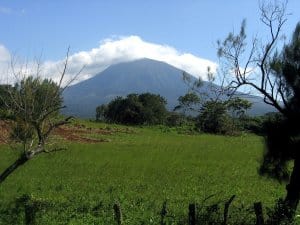
7. Rincón de la Vieja
Located 17 miles north of Liberia, Rincón de la Vieja National Park is named after its main attraction– a 6217-foot cinder volcano with nine craters. The Senduro Encantado hiking trail cuts through lowlands and into cloud forest, allowing visitors to spot abundant flora and fauna along the way. It also connects with the Pailas circuit trail, which passes sulphuric hot springs. Hikers can relax in the pools, which are naturally heated, before cooling off in the stream. For those in the mood for swimming, the Sendero Congreja trail leads to several cascading waterfalls and cool lagoons.
8. TABACÓN HOT SPRINGS
Long, hot days of ecotourism in Costa Rica can be exhausting. Sooth your aching bones in these naturally-heated thermal springs, which are surrounded by lushly landscaped gardens offering a picturesque view of Arenal Volcano. The strongest stream flows over a sculpted waterfall, providing a wonderfully intense hydraulic shoulder massage. There’s also an impressive spa here that offers professional massages and mud masks.
9. Tirimbina Biological Reserve
Located about 2 hours by car from San Jose, Tirimbina Biological Reserve is one of the most educational experiences of ecotourism in Costa Rica. It’s got a prime location in Sarapiquí, between the forests and rivers of Costa Rica’s northern region. With nearly six miles of trails, there are opportunities for hiking through cacao plantations, wetlands, and secondary forests. There are also numerous guided tours available, offering visitors a chance to learn more about bats, birds, frogs, and chocolate.
10. Tortugero National Park
Located on the Caribbean coast, this pristine 77,000-acre protected area is a poster child for Costa Rica’s ecotourism efforts. Accessible only by boat or plane, Tortugero National Park boasts 11 different habitats within its boundaries. The best way to explore it is by boat, due to the dense network of creeks and lagoons. Tortuguero is famous for its sea turtle nesting beaches. With a hired guide, you can visit the beaches at night, which is the best time to see Green, Hawksbill, Leatherbacks, and Loggerhead turtles laying their eggs.
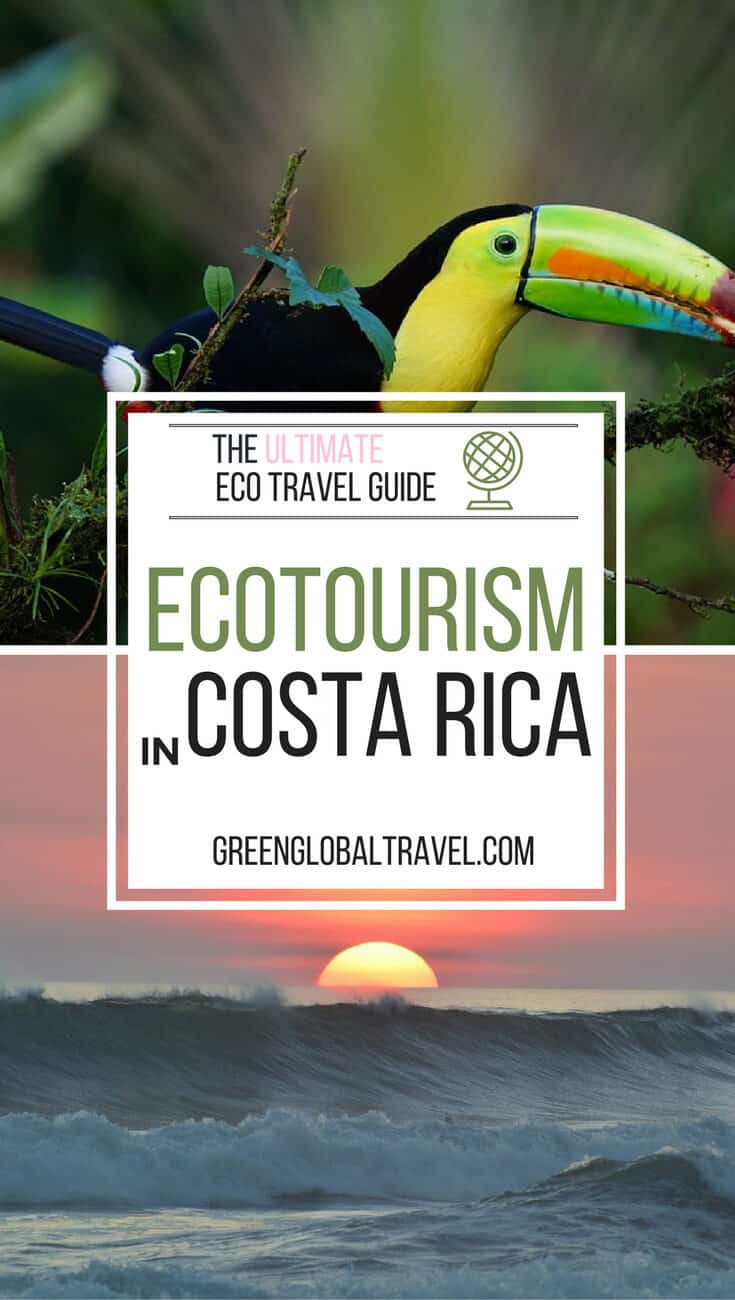
Where To Stay In Costa Rica
The numbers next to the hotels correspond to the attractions on the list above.
Tabacon Grand Spa Thermal Resort (La Fortuna #1,#8)
This family-friendly resort in La Fortuna offers a full-service spa, relaxing hot springs on-site, and tour packages to nearby attractions such as Arenal Volcano and Arenal Natura Ecological Park. The resort participates in the Sustainable Tourism Education Program (STEP), and is a member of the Leading Hotels of the World. Check Rates
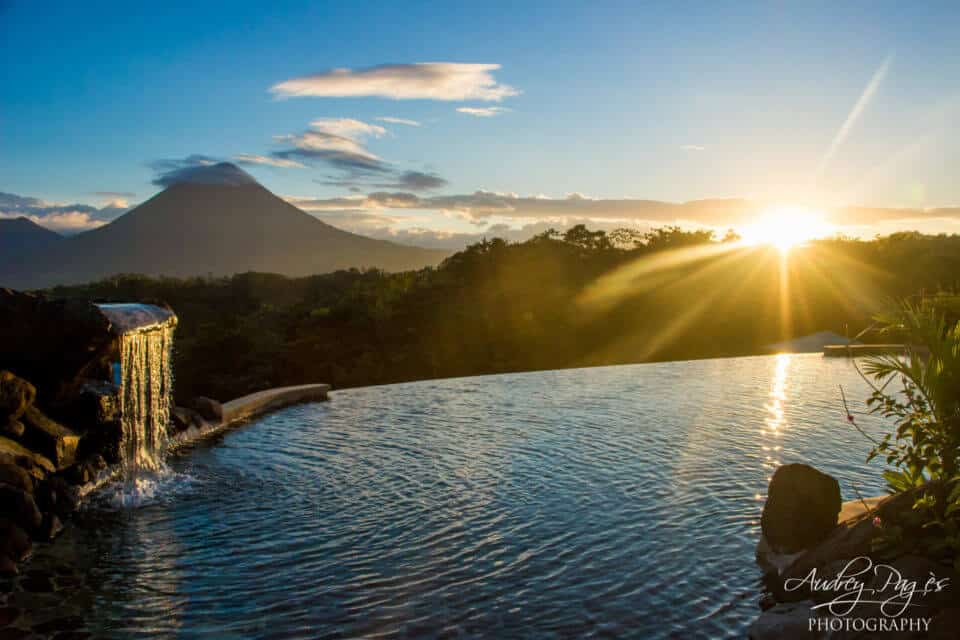
Leaves and Lizards Retreat (Arenal Volcano #1, #8)
This rustic retreat offers stunning panoramic views of Arenal and the surrounding mountains. Choose from cozy cabins, spacious villas, and the one-of-a-kind Hobbit House, all of which feature quaint, eco-friendly decor. The property is a working farm, with horseback riding, yoga, and a farm-to-table restaurant on-site. Check Rates

Kurá Design Villas (Uvita #2, #5)
Located high in the hills above Uvita, this posh boutique hotel offers a blend of upscale design, traditional cultural influences, and a wealth of sustainability initiatives. There’s an excellent restaurant on-site, and a gorgeous L-shaped infinity pool affording exceptional views of Ballena Marine National Park. Check Rates READ MORE: Review of Kura Design Villas
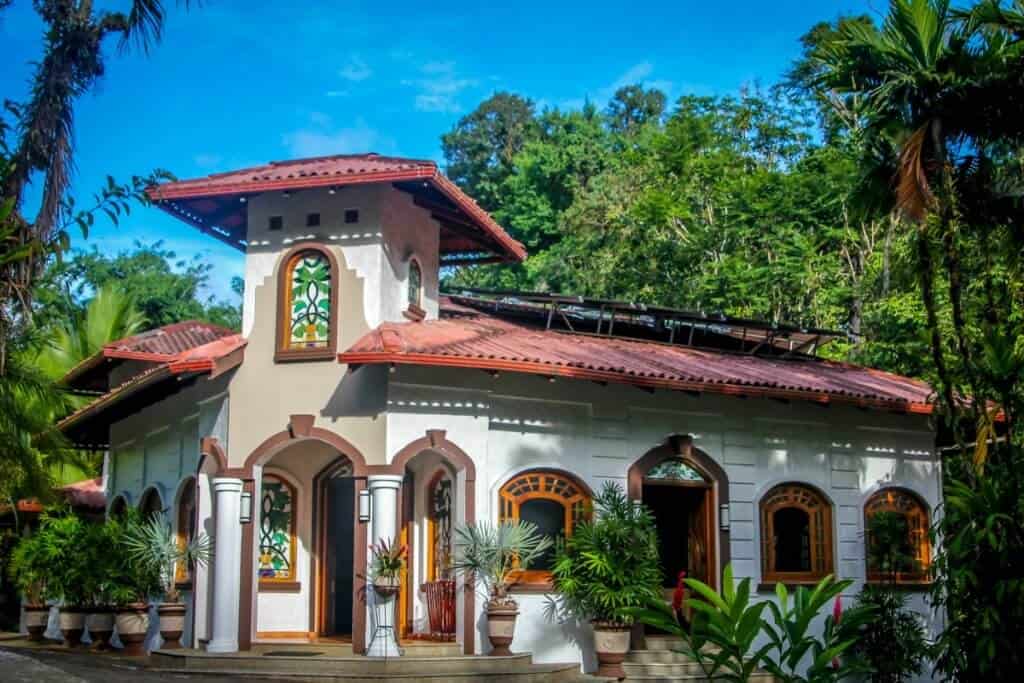
Casa Corcovado Jungle Lodge (Osa Peninsula #3, #4)
With no roads, no airport, and the nearest town two hours away, Corcovado National Park is REALLY “away from it all.” Located on its border, this eco-lodge is as close as you can get to Corcovado without sleeping in a tent. It’s also one of the few hotels awarded “Five Leaves” for sustainability by the Costa Rican Tourism Institute. Check Rates READ MORE: Review of Casa Corcovado

Hotel Belmar (Monteverde #6)
A pioneer of ecotourism in Monteverde, Hotel Belmar was the second hotel ever built in the cloud forest. Recent renovations marked a major upgrade, with sustainability initiatives earning 5-Leaf recognition from CRTI. Their Chalet rooms put guests in the heart of the forest, with a spa, farm-to-table food, and nature hikes making the hotel a Monteverde must-see. Check Rates
Tango Mar (Tambor #7)
Located on the Nicoya Peninsula, this beachfront boutique hotel offers a remote romantic getaway that mixes nature and luxury in equal measure. Amenities include restaurant, spa, several pools, and an uncrowded, picturesque beach. Families can rent out their spacious villas, which offer stunning views of the Pacific’s crashing waves. Check Rates
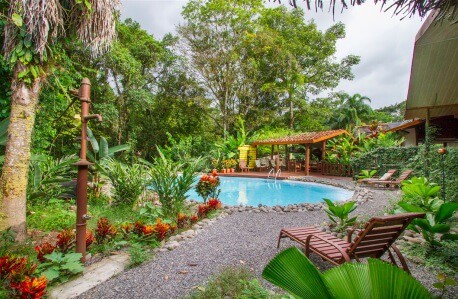
Located on 10 acres near Tirimbina Biological Reserve, this rustic eco-lodge is a nature-lover’s haven. Their spacious, thatched-roof bungalows all have porches with hammocks and rocking chairs. Walking trails lead to ponds, a butterfly garden, and a frog habitat. Massages and local tours are also available. Check Rates
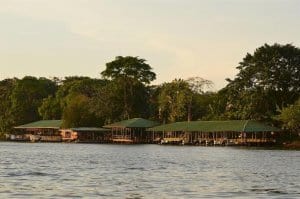
Mawamba Lodge (Tortuguero #10)
Nestled between the Caribbean and canals of Tortuguero National Park, Mawamba is where the idea for GGT was born. There are no roads, and the river feels like a mini-Amazon. From boat rides through wildlife-rich canals to nighttime hikes to see nesting Sea Turtles, it’s a perfect place to see how ecotourism and conservation connect. Check Rates
Hotel Parque del Lago (San Jose)
Located 20 minutes from the airport, this boutique hotel makes a great base for exploring San Jose. They’ve earned a 3-Leaf rating for sustainability, and the ICONOS Restaurant was among our favorite in Costa Rica. Best of all, it’s next to the Parque Metropolitano La Sabana, the city’s “Central Park”– 72-acre urban forest with a lake. Check Rates
Disclaimer: Green Global Travel uses affiliate links within our articles (no additional cost to you). Above you’ll find our affiliate links to the Hotels and Eco Lodges that we recommend.
Culture & Food In Costa Rica
Costa rica food & restaurants.
Costa Rican food shares similarities with other types of Latin American cuisine. But the inclusion of ample exotic fruits and fresh vegetables makes it a little healthier.
The increasing number of tourists visiting Costa Rica’s larger cities has resulted in a greater variety of restaurants, from Japanese sushi bars to Italian cafés. Still, there are plenty of traditional dishes on offer.
Costa Rican food tends to be mild, with rice and black beans forming the basis for most dishes.
Casado is a traditional lunch dish and the most common meal in Costa Rica. It consists of rice and beans, served with a choice of meat and grilled onions.
Another popular traditional dish is Ceviche , which consists of raw fish and seafood, marinated in lemon juice and herbs.
Costa Rica Arts & Culture
Over recent years, artists in Costa Rica have become bolder and braver, taking more risks in their work. Escazú, in the province of San José, is home to many contemporary artists.
In 1991 the Centre for Creative Arts, which runs various courses and offers studio space for artists, opened in Santa Ana.
Costa Rica has no army. But it does boast a National Symphony Orchestra, a Youth Symphony Orchestra, and two government-funded universities with respected music programs.
As a result, the country has produced many contemporary classical composers, including Alejandro Cardona, Bernal Flores, Benjamín Gutiérrez and Luis Diego Herra.
While the country’s most popular musical forms– calypso, disco, pop, salsa, and merengue– were all imported, there has been a resurgence of interest in the nation’s pre-Columbian folk traditions.
Local bands such as Gandhi and Evolución emerged as part of the Rock en Español movement, while Malpaís has had great success mixing Costa Rican folk with rock and jazz influences.
Costa Rica Recreation
Soccer is the national sport of Costa Rica, and a beloved community activity. Casual pick-up games happen so often that visitors are likely to get the chance to join in, if they know where to look.
Games often take place in public parks in small towns and cities.
Ecotourism in Costa Rica is world-renowned for good reason. There are plenty of adventurous outdoor activities to choose from.
Hiking trails cross the national parks, allowing visitors to hike through numerous different ecosystems in one day. Whitewater rafting on the Rio Pacuare is also a popular pastime.
Watersports can be enjoyed all along the coast of Costa Rica. Kayaking is a great way to explore the rivers and mangrove estuaries, and sea kayaking has become increasingly popular.
Underwater visibility in some areas is murky at best. But excellent Scuba diving opportunities can be found off Caño Island, the Catalina Islands, and Cocos Island.
Fun Facts About Costa Rica

3 Fantastic Costa Rica Photo Opportunities
- La Selva Biological Station is a birdwatchers paradise with over 400 species, including hummingbirds and tanagers.
- Head for the hills above Uvita at low tide to get a stunning photo of the Whale Tail-shaped sandbar at Ballena Marine National Park.
- Tenorio National Park’s Celeste River is a brilliant turquoise color due to a chemical reaction caused by volcanic minerals.
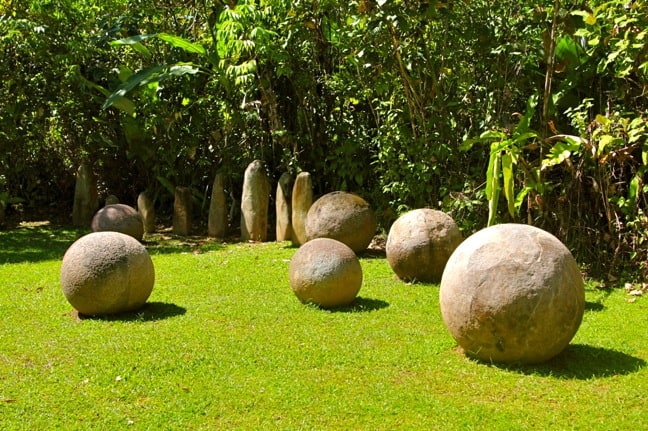
Only in Costa Rica
• “Pura Vida” is Costa Rica’s unofficial slogan. Used often by locals to summarize their happy philosophy, it means “pure life.”
• Costa Rica is home to the biggest oxcart and yoke in the world, which is currently on display at the Oxcart Factory in Sarchi.
• The hand-carved stone spheres of Costa Rica are one of the country’s biggest mysteries. Nobody is quite sure of their original purpose.
• Locals refer to themselves as “Ticos” (male) and “Ticas” (female).

Costa Rica Fun Facts
- Costa Rica is home to over 52 different species of hummingbird.
- Costa Ricans have a life expectancy of 79 years, which is ranks as one of the highest in the world.
- There are over 100 protected areas in Costa Rica, including both land and marine reserves.
- Tree frogs account for about one-third of the frog population in the country.

Costa Rica Travel Tips
Capital: San José
Language: Spanish (official); English
Population: 4,755,234 (est 2014)
Area: 51,100 square km (19,730 square miles)
Currency: Costa Rican colón
Timezone: CST UTC/GMT – 6 hours
Calling codes: +506
Electrical voltage: 120V/60hz. You don’t need a power plug adapter in Costa Rica, when living in the United States of America.
In Costa Rica the power sockets are of type A (2 holes) and B (3 holes).
Climate: The climate of Costa Rica is tropical, but many different microclimates exist. The average temperature is 70 to 81 F (21 to 27 C) and rainy season is May – November
Airports: Aeropuerto Internacional Juan Santamaria (San José) is the main airport. Domestic flights go from San José to Bahía Drake, Barra del Colorado, Golfito, Liberia, Palmar Sur, Playa Nosara, Playa Sámara/Carrillo, Playa Tamarindo, Puerto Jiménez, Quepos, Tambor and Tortuguero.
Tap water in urban areas is usually safe to drink. However, be cautious in rural areas with questionable water sources.
Costa Rica has one of the highest levels of medical care in the world. Its doctors are known as some of the best.
Transportation
Some Costa Rican roads are rough, so short distances can take a long time. If you see something poking out of the road, there’s probably a deep sinkhole. Stay away from it . Don’t drive at night if you can avoid it.
Taxi rates are reasonable, and most hotels can arrange a driver. The meter is called la maria: Ask the driver to turn it on immediately upon getting in the car to ensure fair pricing for your ride.
Money exchange is provided at most banks, but state banks such as Banco Nacional have lower rates. Always insist that your change be in small bills, as large bills are difficult to change in small towns.
Tipping
Tipping tour guides, drivers, and maids is always appreciated. Restaurant bills often include a 10% gratuity, but you can leave an extra tip for good service.
Stories About Costa Rica
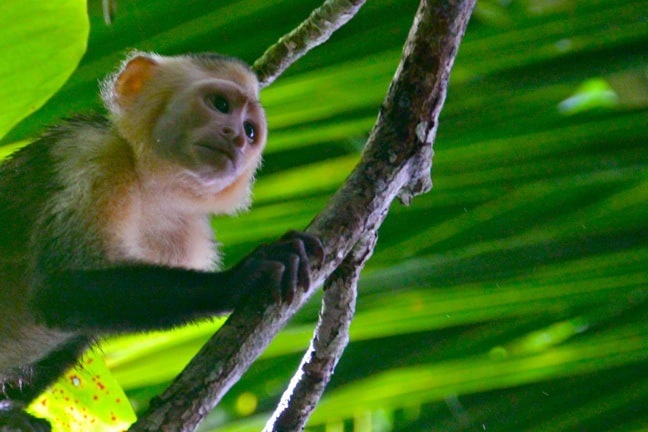
40 Amazing Costa Rican Animals
Costa Rica is a wildlife-lover’s dream come true. This epic photo gallery should give you a taste of why we keep going back to see Costa Rica’s animals over and over again. Read More
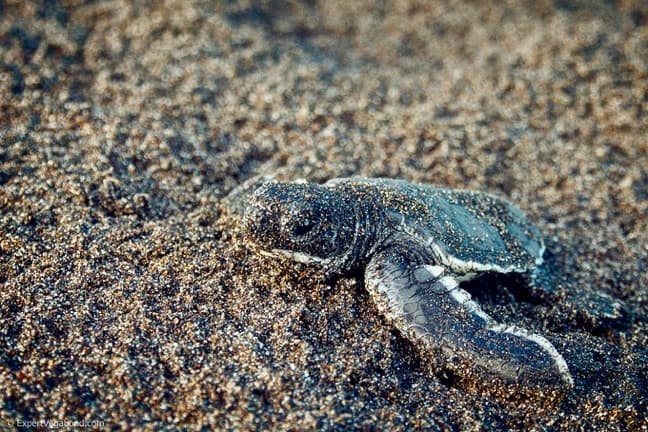
Tortuguero National Park
Tortuguero is a nature lover’s paradise, with nighttime tours in search of sea turtles coming on the beach to nest producing spectacular views of star-lit skies. Read More
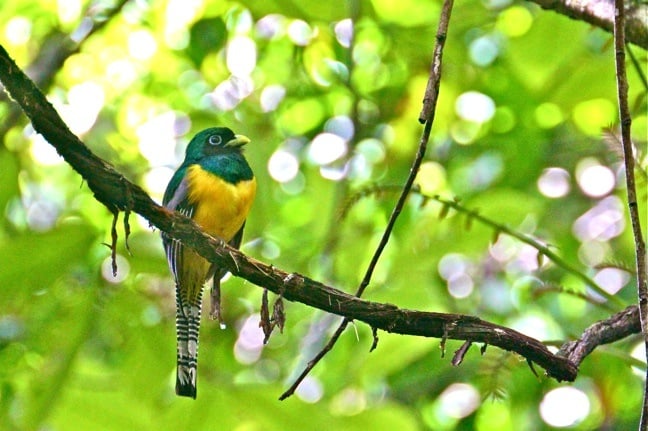
Corcovado National Park
My Stupid Mistake in Corcovado National Park Costa Rica. How one lame-brained decision nearly sent me to the hospital in the remote Osa Peninsula. Read More
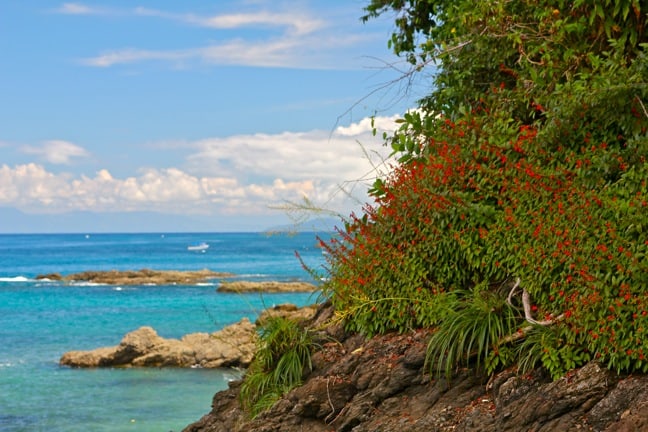
Scuba Diving Caño Island
Caño Island boasts some of the planet’s healthiest coral reefs, and provides birthing and mating waters for humpback whales. In terms of mainland Costa Rica scuba diving, its bounty of blessings is unparalleled. Read More

Corcovado National Park: A Journey Into Remote Costa Rica
A story about leaving the city, heading into wilderness & finding yourself in the process. Read More
The Stone Spheres of Costa Rica
The Mystery of the Stone Spheres of Costa Rica: Visiting Finca 6 Archaeological Site in the Diquís Delta of Costa Rica. Read More
Top 20 Things To Do in Costa Rica (for Nature & History Lovers)
The top 20 Things to Do In Costa Rica (For Nature & History Lovers), including Arenal Volcano, Caño Negro Wildlife Refuge, Corcovado National Park, Manuel Antonio National Park, Monteverde Cloud Forest, Playa Montezuma, mysterious stone spheres, Tabacón Hot Springs, Tortuguero National Park, and much more. Read More
Kurá Design Villas (Uvita) – Located high in the hills above Uvita, this posh boutique hotel offers upscale design, traditional cultural influences, and a wealth of sustainability initiatives. There’s an excellent restaurant on-site, and a gorgeous L-shaped infinity pool affording exceptional views of Ballena Marine National Park. READ MORE: Our Review of Kura Design Villas
Casa Corcovado Jungle Lodge (Osa Peninsula) – With no roads, no airport, and the nearest town two hours away, Corcovado National Park is REALLY “away from it all.” Located on its border, this eco-lodge is as close as you can get to Corcovado without sleeping in a tent. It’s also one of the few hotels awarded “Five Leaves” for sustainability by the Costa Rican Tourism Institute. READ MORE: Our Review of Casa Corcovado
As Seen On…

Join the 300,000+ people who follow Green Global Travel’s Blog and Social Media
Seeker is the social platform to find and share the places you love.
0 Places . 0 Trips and Guides.
Please enter your email
- Seeker for Brands
- Become a Brand Ambassador
- Let’s connect
New to Seeker? Join for free
Already have an account? Login
- Central America
Ecotourism in Costa Rica: the Ultimate Eco Travel Guide
Sustainable travel expert, adventure seeker
Punta del Este, Maldonado Department, Uruguay
¡Pura Vida! Costa Rica is the perfect destination for ecotourism: ethical tourism designed to respect and protect threatened natural areas and wildlife. Twenty-five percent of the country is a protected with over 32 beautiful national parks within just 19,730 sq. miles. Four percent of all species on Earth live within Costa Rica’s lush, verdant landscape.
Ecotourism in Costa Rica is quickly growing in popularity, making it easier than ever to find your perfect tour. But how do you differentiate between ethical eco-friendly experiences and others that aren’t so earnest? If you’re headed to the tropical biodiverse land of sloths and macaws and are considering booking a tour, we’ve got you covered with everything you need to know (and more).
Authentic ecotourism will prioritize people, planet, and wildlife. Fortunately, Ticos have a deep respect for Tierra Madre (Mother Nature) and support the nationwide efforts to make the country more sustainable. I was fortunate enough to spend two months in Costa Rica and fill my days with sustainable —and unforgettable— travel experiences. Here’s what I learned.
Ecotourism in Costa Rica is small (but packs a lot of adventure)
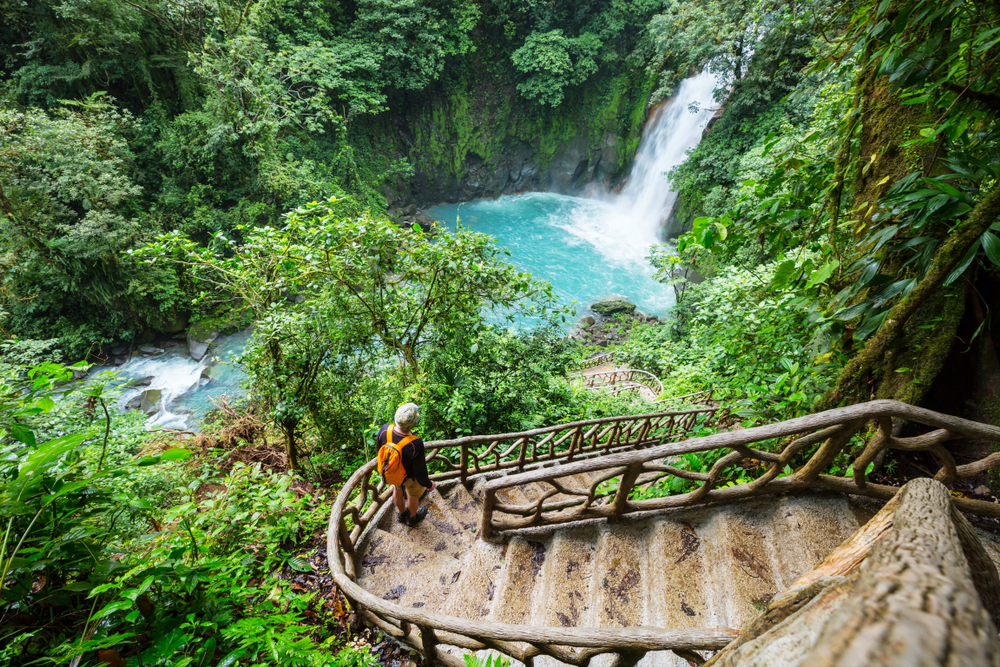
According to The Costa Rican Tourism Institute , nearly half of all international visitors participate in ecotourism. Ecotourism tours in Costa Rica usually focus on prolific wildlife observation, epic adventures in the great outdoors, or a mix of the two. Before you’re ready to book a tour, decide which areas of Costa Rica you’d like to explore and determine the wildlife you’d be thrilled to encounter.
As a rough guide, ecotours in Costa Rica usually are in these geographical areas:
Monteverde, Costa Rica

For canopy walks in Monteverde Cloud Forest and encounters with 52 different types of hummingbirds.
Manuel Antonio, Costa Rica

Manuel Antonio is a hotbed for many of Costa Rica’s more than 500,000 species, including elusive Costa Rican sloths, colorful tree frogs, and beautiful-yet-deadly eyelash vipers, making it the idea spot for ecotourism.
Uvita, Costa Rica
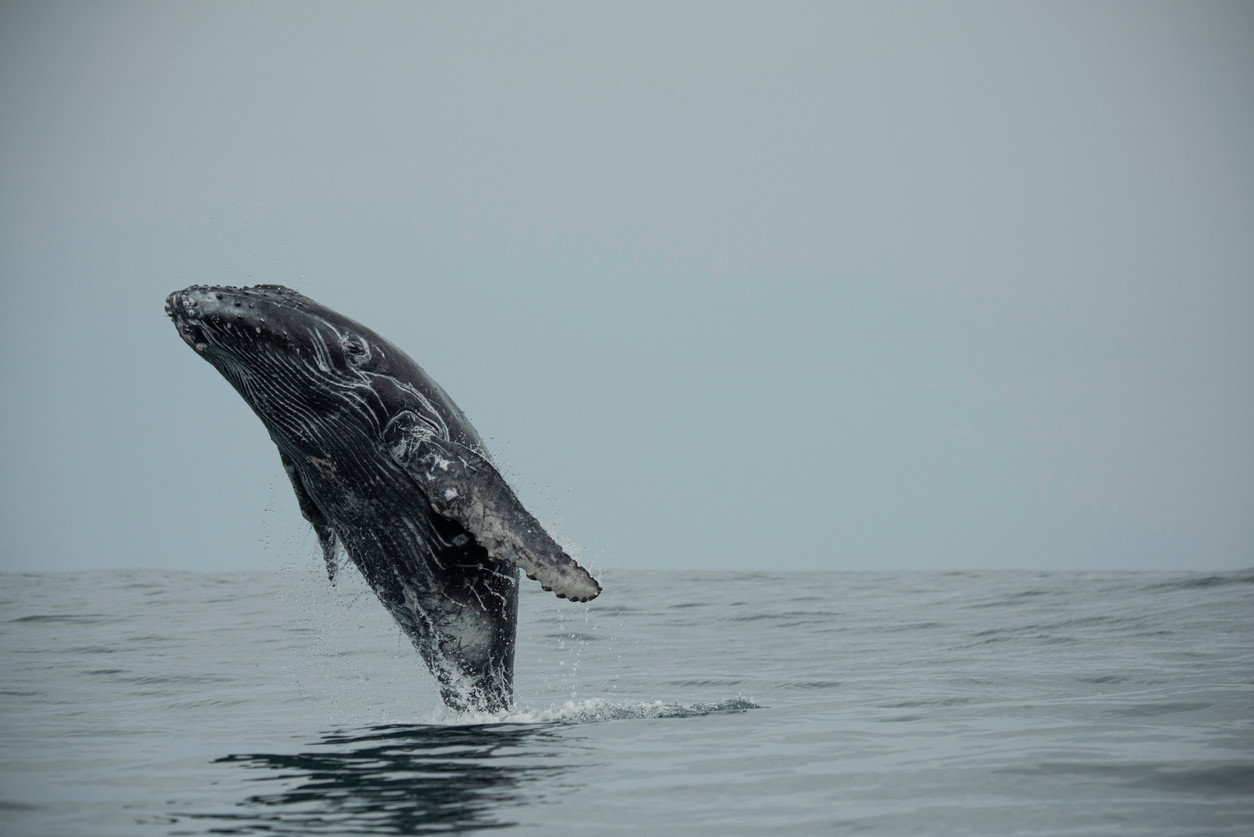
Head to Uvita , Costa Rica for surfing, spotting sloths, seasonal whale watching, and gorgeous rainforest mountain treks.
The Osa Peninsula, Costa Rica

The Osa Peninsula where the tropical rainforest contains 2.5% of the world’s biodiversity on less than one-millionth of the planet’s surface. You may even see jaguars in Corcovado National Park and will very likely see macaws.
La Fortuna, Costa Rica

Hop over to La Fortuna for vistas of one of Costa Rica’s active Volcanoes : Arenal Volcano , plus endless opportunities for canyoning, rappelling down waterfalls, and soaks in natural hot springs.
Tortuguero National Park, Costa Rica
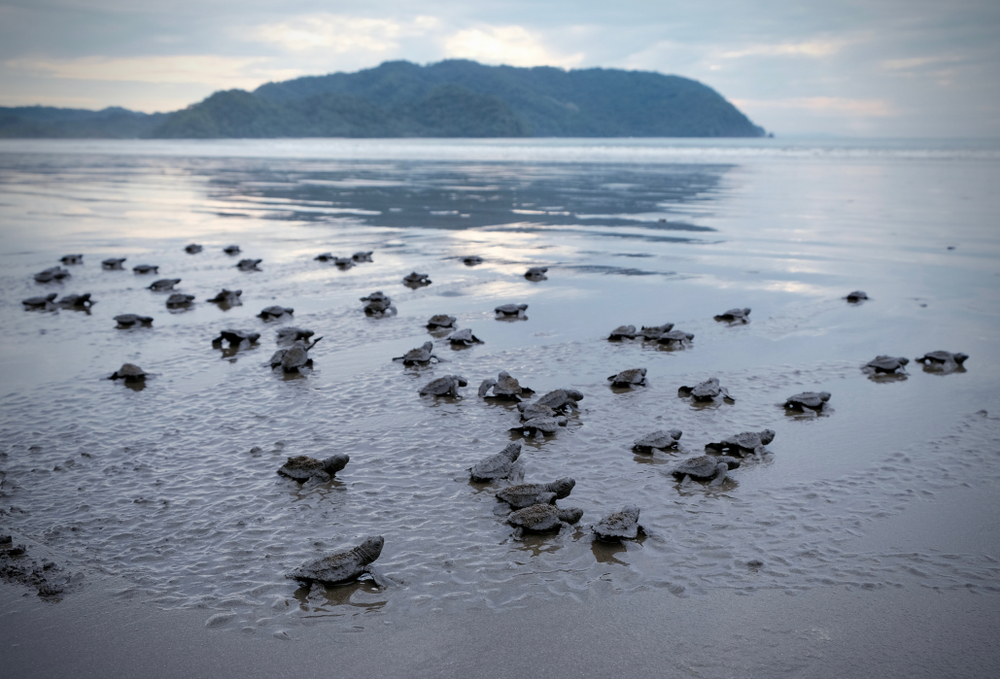
Tortuguero National Park has a 77,000-acre protected area and is the place to go for the best of ethical animal volunteer vacations , including seasonal sightings of sea turtles laying eggs and hatching.
How to identify a reputable ecotourism tour provider in Costa Rica:
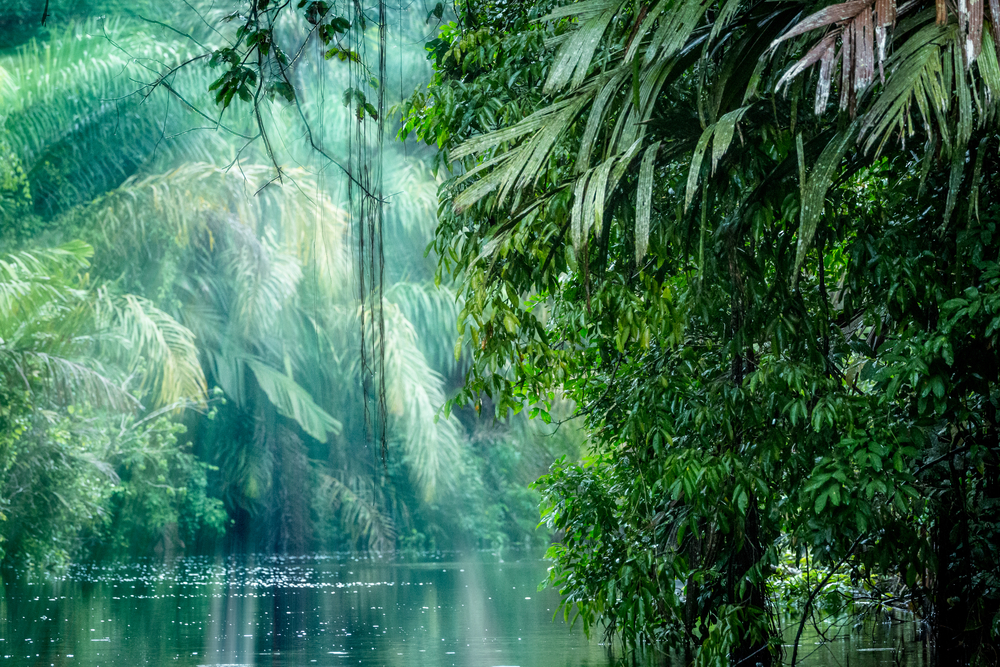
The Costa Rica Tourism Board created the Certificate for Sustainable Tourism to evaluate businesses in the travel sector regarding sustainable practices concerning the environmental, social, and economic policies of the company. Many reputable tour operators in the country have received the Certificate of Sustainable Tourism , but don’t rule out a company just because they haven’t yet been recognized.
Sadly, Impact Travel Alliance reports that greenwashing has led to sustainable places undergoing green hushing, which is described as the “deliberate under communication of sustainable initiatives.” Greenwashing has made eco-friendly businesses wary of backlash due to potential skepticism. Booking ecotourism tours in Costa Rica can be a bit challenging.
During my two months exploring Costa Rica, I booked ecotourism experiences with Desafio Adventure Company and Tucanes Tours . I also went on many eco-conscious tours offered by the eco-resorts where I stayed including Finca Rosa Blanca , Cala Luna , Rancho Margot , and The Retreat .
Greenwashing is minimally regulated, so responsible travelers will have to do their research and watch for red flags, such as phony jargon and slick advertising meant to fool the consumer.
Red flags to keep an eye out for when researching potential ecotourism tours in Costa Rica:

● Are there photos of people holding or feeding wildlife? If so, this is not genuine ecotourism as travelers should never interact with wildlife.
● Are there photos of animals in cages? Sadly, Costa Rica has very few genuine conservation projects for ill or injured wildlife, so it’s best to avoid any place with animals in captivity.
● Does the website or staff have readily available details on the tour’s eco efforts? If you’re noticing a lot of buzzwords but no concrete information as to why the tour is eco, then it probably isn’t.
● Do the staff get annoyed if you ask a lot of questions? It’s your right to get the full picture of the extent of what makes the tour eco.
Some questions to ask when booking ecotourism tours in Costa Rica:

● Are the majority of employees local, even in upper management positions?
● What sort of training or licenses do the tour guides and operators have?
● How does the tour operator minimize its plastic waste?
● Do they guarantee animal sightings? This should never be done as we can’t promise when wild animals will come out and say hello.
● If you’re going on a multi-day experience, what kind of accommodations are you staying in? Costa Rica has so many eco-friendly hotels and local guesthouses and true ecotours will support these like-minded businesses.
Going on an ecotourism tour in Costa Rica is sure to be a memorable experience. Eco tours focus on local culture and people and ensure your money goes to businesses that support animal conservation and preservation of nature. By supporting conservation efforts, you’ll be a part of the ongoing efforts to preserve the phenomenal nature and animal kingdom in Costa Rica.
You might like
Costa rica volcanoes: visit these 5 active volcanic spots, things to do in costa rica's monteverde cloud forest.
- Bucket List
10 Amazing Volunteer Vacations for Animal Lovers
- South America
6 of the Best Places to See Sloths in Central and South America
- Content Marketing Services
Ecotourism In Costa Rica: Where to Go and Things to Do
- By: Conor Armor
With its incredible biodiversity and a commitment to protecting its natural resources, Costa Rica has become one of the world’s premier destinations for ecotourism, a sustainable, responsible form of travel that emphasizes environmental conservation, cultural appreciation, and support for local communities. In this article, we will delve into the rich history of ecotourism in Costa Rica, explore its top destinations and must-experience activities, and learn how travelers can make a positive impact during their visit.
Costa Rica’s Commitment to Sustainable Tourism
Pioneering ecotourism in costa rica.
Costa Rica’s emergence as an ecotourism powerhouse can be traced back to the 1960s when the country’s government began to recognize the importance of preserving its diverse ecosystems. Over the years, the government has established national parks, wildlife refuges, and biological reserves, protecting nearly 25% of its land area. The country’s focus on sustainable tourism has not only helped preserve its natural wonders but has also allowed its economy to flourish, with tourism being one of the major contributors to its GDP.
In addition to its extensive protected areas, Costa Rica has also implemented a range of sustainable practices and initiatives that have bolstered its reputation as an ecotourism leader. These efforts have been integral to attracting environmentally conscious travelers who wish to enjoy the country’s stunning landscapes while minimizing their negative impact on the environment and local communities.
Certifications and Initiatives
The Certification for Sustainable Tourism (CST) is a voluntary program developed by the Costa Rican Tourism Board to evaluate and recognize sustainable tourism businesses. The CST assesses various aspects of a company’s operations, such as waste management, energy conservation, and community engagement, and rates them on a scale of one to five leaves. Businesses with higher leaf ratings are considered more sustainable and environmentally friendly.
Another noteworthy initiative is the Blue Flag Ecological Program , which promotes sustainable development in coastal areas, including beaches and marinas. The program awards Blue Flags to communities that meet strict environmental, safety, and accessibility criteria, ensuring that these locations are ideal for ecotourists seeking pristine, well-maintained environments.
Top Ecotourism in Costa Rica Destinations
There are an impressive array of destinations for ecotourism in Costa Rica, catering to a wide range of interests and preferences. From lush rainforests teeming with wildlife to tranquil beaches where sea turtles nest, the country offers countless opportunities for nature lovers and adventure seekers alike.
National Parks in Costa Rica
Corcovado national park.
Located on the remote Osa Peninsula, Corcovado National Park is often considered the crown jewel of Costa Rica’s park system. This biodiverse paradise is home to countless plant and animal species, including jaguars, tapirs, and scarlet macaws. Visitors can explore the park’s vast trail network, which winds through various ecosystems, such as primary rainforests, mangroves, and coastal habitats.
Tortuguero National Park
Situated on the Caribbean coast, Tortuguero National Park is a haven for sea turtles, as its beaches serve as nesting grounds for endangered green, leatherback, and hawksbill turtles. The park’s extensive network of waterways and canals also supports a diverse array of wildlife, including monkeys, caimans, and over 300 bird species. Travelers can explore the park via guided boat tours, which offer a unique perspective on this vibrant ecosystem.
Wildlife Refuges
Gandoca-manzanillo wildlife refuge.
Gandoca-Manzanillo Wildlife Refuge, located on the southern Caribbean coast, protects a diverse range of habitats, from pristine beaches to dense rainforests. The refuge is particularly
noted for its nesting sea turtles, as well as its vibrant coral reefs, which are home to an array of colorful marine life. Visitors can explore the refuge’s beautiful hiking trails or embark on guided snorkeling excursions to observe the underwater wonders.
Ostional Wildlife Refuge
Ostional Wildlife Refuge on the Pacific coast is renowned for its arribadas, or mass nesting events, during which thousands of olive ridley sea turtles come ashore to lay their eggs. These remarkable events typically occur between July and December, and visitors can witness this spectacle on guided nighttime tours led by local experts.
Biological Reserves
Monteverde cloud forest reserve.
Monteverde Cloud Forest Reserve, nestled high in the Tilarán Mountains, is an enchanting destination known for its unique cloud forest ecosystem. This mist-shrouded paradise is home to over 400 bird species, including the elusive resplendent quetzal, and offers an extensive network of trails for visitors to explore. The reserve also features canopy walkways and suspension bridges, providing a bird’s-eye view of the forest’s diverse flora and fauna.
Cabo Blanco Absolute Natural Reserve
Cabo Blanco Absolute Natural Reserve, situated on the southern tip of the Nicoya Peninsula, is the country’s first protected area and a testament to Costa Rica’s commitment to conservation. This pristine reserve features a variety of habitats, from lush forests to rugged coastlines, and is home to a diverse array of wildlife, such as white-faced capuchin monkeys, coatis, and countless bird species. Visitors can enjoy hiking the reserve’s well-maintained trails, which offer stunning vistas and ample wildlife-spotting opportunities .
Must-Experience Ecotours
Ecotourism in Costa Rica is not limited to passive observation of nature; the country offers numerous immersive and exhilarating experiences that allow visitors to explore its diverse ecosystems up close and personal.
Rainforest Tours
Arenal hanging bridges.
The Arenal Hanging Bridges offer a unique perspective on the rainforest canopy, as visitors traverse a series of suspension bridges and walking trails through the lush vegetation. This thrilling experience provides ample opportunities to spot wildlife, such as sloths, monkeys, and a variety of colorful birds, while enjoying panoramic views of the iconic Arenal Volcano.
La Fortuna Waterfall
The La Fortuna Waterfall, located near Arenal Volcano, is a stunning 230-foot cascade that plunges into a crystal-clear pool, perfect for a refreshing swim. A hike through the verdant rainforest leads visitors to this spectacular natural wonder, where they can enjoy a serene and picturesque setting amidst the surrounding flora and fauna.
Marine Life and Coral Reefs
Cano island.
Cano Island, situated off the Pacific coast, is a premier snorkeling and diving destination, renowned for its vibrant coral reefs and abundant marine life. Visitors can embark on guided tours to explore the island’s underwater treasures, including sea turtles, dolphins, manta rays, and even the occasional whale shark.
Cahuita National Park
Cahuita National Park, located on the Caribbean coast, features a stunning coral reef that is home to a wide variety of marine species, such as colorful fish, sea turtles, and nurse sharks. Guided snorkeling and diving excursions offer visitors a chance to explore this underwater paradise while learning about the park’s unique ecosystems and conservation efforts.
Birdwatching
Quetzales national park.
Quetzales National Park, situated in the Talamanca Mountains, is a prime destination for birdwatching enthusiasts, as it is home to the elusive resplendent quetzal, along with over 200 other bird species. Guided tours led by expert birdwatchers provide visitors with the opportunity to spot these magnificent creatures in their
natural habitat, while also learning about the park’s unique ecosystems and conservation efforts.
Palo Verde National Park
Palo Verde National Park, located in the Guanacaste province, is a haven for birdwatchers, boasting over 300 bird species, including herons, egrets, and jabiru storks. The park’s diverse wetland habitats attract migratory birds and provide ample opportunities for visitors to observe these feathered residents on guided tours or while navigating the park’s network of trails.
Adventure Tours
Rappelling and zip-lining.
Costa Rica’s lush rainforests and dramatic landscapes provide the perfect backdrop for adrenaline-pumping adventure tours. Rappelling and zip-lining are popular activities that allow visitors to experience the country’s stunning scenery from unique vantage points while also enjoying a thrilling, immersive experience. Several reputable companies offer guided tours in various locations, ensuring a safe and unforgettable adventure.
Whitewater Rafting
Whitewater rafting is another exhilarating activity that allows visitors to explore Costa Rica’s pristine rivers and vibrant ecosystems. With a range of difficulty levels available, from gentle Class I rapids to challenging Class IV rapids, there is an option suitable for all ages and skill levels. Guided tours led by experienced rafting guides ensure a safe and exciting journey through the country’s breathtaking landscapes.
Supporting Local Communities
Ecotourism in Costa Rica is not only about preserving the environment but also about uplifting local communities and promoting cultural exchange. Several initiatives and destinations allow visitors to engage with local people, learn about their traditions, and contribute to their well-being.
Community-based Ecotourism in Costa Rica
Bribri indigenous reserve.
The Bribri Indigenous Reserve, located in the Talamanca region, offers a unique opportunity for visitors to learn about the rich culture and traditions of the Bribri people. Guided tours led by community members provide insight into the tribe’s customs, history, and traditional way of life, while also supporting their sustainable livelihoods.
Caminos de Osa
Caminos de Osa is a community-based ecotourism initiative in the Osa Peninsula that seeks to empower local communities while promoting sustainable tourism . The project offers a range of immersive experiences, such as homestays, guided hikes, and wildlife observation, allowing visitors to connect with the region’s natural beauty and support local development initiatives.
Volunteering Opportunities
Wildlife conservation projects.
For those looking to make a more substantial impact during their visit, various wildlife conservation projects in Costa Rica offer volunteer opportunities. These initiatives often focus on endangered species, such as sea turtles, and provide hands-on experience in monitoring, data collection, and habitat restoration.
Reforestation Initiatives
Reforestation efforts in Costa Rica aim to combat deforestation and restore the country’s precious ecosystems. Several organizations offer volunteer opportunities for travelers to participate in tree planting activities, helping to ensure the long-term health and sustainability of the country’s forests.
Tips for the Responsible Ecotourist
Being a responsible ecotourist in Costa Rica involves respecting local culture, reducing one’s environmental impact, and supporting local businesses. By following these guidelines, visitors can ensure that their travel experiences contribute positively to the environment, the local economy, and the communities they visit.
Here are some practical tips for responsible ecotourism in Costa Rica:
- Respecting local culture: Make an effort to learn about Costa Rican customs, traditions, and etiquette. Dress modestly, especially when visiting indigenous reserves or rural communities. Always ask for permission before taking photos of people or their property.
- Reducing environmental impact: Practice the “leave no trace” principles by disposing of waste properly, staying on designated trails, and avoiding the collection of natural souvenirs such as shells or plants. Conserve water and energy in your accommodation by taking short showers and turning off lights and appliances when not in use.
- Supporting local businesses: Choose locally-owned accommodations, restaurants, and tour operators whenever possible. This helps keep the money you spend in the local economy and contributes to the well-being of the communities you visit. Additionally, purchase handmade souvenirs from local artisans rather than mass-produced items.
- Protecting wildlife: Keep a respectful distance from wild animals and never feed them, as this can disrupt their natural behavior and diet. If participating in a wildlife tour, choose operators that prioritize the well-being of the animals and adhere to responsible wildlife viewing guidelines.
- Educating yourself: Learn about the environmental and social issues facing the places you visit. This knowledge will help you make informed decisions about the activities you engage in and the organizations you support during your trip.
Costa Rica is a shining example of how ecotourism can contribute to the preservation of the environment and the well-being of local communities. By exploring the country’s diverse ecosystems, engaging with its people, and supporting sustainable initiatives, visitors can enjoy a truly transformative experience while making a positive impact. Whether you’re an adventure seeker, a nature enthusiast, or a responsible traveler, ecotourism in Costa Rica offers something for everyone, and it will surely leave you with unforgettable memories and a deep appreciation for the natural world.
Frequently Asked Questions (FAQs)
- What is the best time of year to visit Costa Rica for ecotourism? Costa Rica’s weather varies throughout the year, but generally, the dry season (December to April) is the best time to visit for outdoor activities and wildlife viewing. However, the green season (May to November) offers lower prices, fewer crowds, and a lush, verdant landscape, making it an attractive option for some travelers.
- Is ecotourism in Costa Rica suitable for families? Yes, ecotourism in Costa Rica is typically suitable for families with children. Many national parks and reserves have well-maintained trails and visitor centers with educational exhibits, while adventure tours, such as zip-lining and rafting, often cater to different age groups and skill levels.
- What are the accommodation options for ecotourists in Costa Rica? Costa Rica has a variety of eco-friendly accommodations, ranging from budget-friendly ecolodges to luxurious eco-resorts. Many of these properties hold a Certification for Sustainable Tourism (CST) rating, which ensures that they adhere to high standards of environmental responsibility and social commitment.
- How can I ensure that I choose a truly sustainable ecotourism provider? Look for businesses with a CST rating or other recognized sustainability certifications, and research their environmental policies and practices. Read reviews from previous customers and consider recommendations from trusted sources, such as guidebooks or travel forums.
- What are some essential packing tips for ecotourism in Costa Rica? Bring lightweight, quick-drying clothing, a reusable water bottle, and a waterproof bag for electronics. Opt for biodegradable toiletries and sunblock to minimize your environmental impact. Don’t forget a hat and sunglasses.
Conor Armor
- / Uncategorized
Join the Hidden Lemur Mailing List
Related posts, best dark sky locations for stargazing, ultimate guide to reef safe sunscreen, 10 interesting facts about vietnam , best travel rain ponchos [sustainable materials], ultimate guide to hiking mount olympus, greece, solo female travel: how to stay safe, how to experience epic animal migrations around the world, how to travel on a budget sustainably, guide to unesco world heritage sites, things to do in raleigh, durham, & chapel hill, nc, best things to do in thessaloniki, greece, cultural tours: what to look for, things to do in jungfrau region, switzerland, ultimate guide to slow travel, 16 best hiking boot brands for outdoor enthusiasts, best things to do in tanzania, 8 of the best travel luggage brands (eco-friendly), things to do in são paulo, brazil, things to do in chicago, illinois (sustainable travel guide), the ultimate guide to ethical coffee, what is greenwashing, the ultimate guide to sustainable travel terms, 100+ travel statistics and facts to know for 2023, best things to do in paris [sustainable travel guide], 7 incredible sustainable yoga clothes brands [2023 edition], 70+ of the best travel quotes for 2023, best nyc day trips by metro-north railroad, best things to do in santa fe, new mexico, 14 new year resolutions for 2023 [eco-friendly edition], 12 ethical photography tips for travelers, the ultimate guide to vegan traveling, 10 sustainable things to do in edinburgh, scotland, complete busuu review: a worthy language learning app, best virtual experiences for adrenaline junkies, ultimate guide to edible insects around the world.

Eco-Tourism in Costa Rica: Sustainable Adventures in the Heart of the Tropics
Nestled between two oceans, Costa Rica is a beacon of sustainability and biodiversity, offering a myriad of eco-tourism possibilities.
From verdant rainforests to ethereal cloud forests and untouched beaches, this Central American paradise showcases nature in its purest form. Yet, it’s not just the stunning landscapes and rich biodiversity that captivate travelers—it's Costa Rica's unwavering commitment to conservation and sustainable tourism.
While mass tourism often leaves an indelible carbon footprint, Costa Rica has consistently championed a different path. As an eco-tourist, you get to explore nature's magnificence without compromising its integrity. But how does one ensure that their journey through this tropical haven genuinely aligns with the principles of eco-tourism?
Table of Content
Preserving Paradise: The Backbone of Costa Rican Tourism
Since the 1980s, Costa Rica has been paving the way in eco-tourism, combining environmental protection with community development.
The nation designates over a quarter of its land to national parks, reserves, and wildlife sanctuaries, showcasing its commitment to preservation. These protected areas not only serve as a haven for flora and fauna but also as living classrooms for visitors to learn about tropical ecology and the importance of conservation.
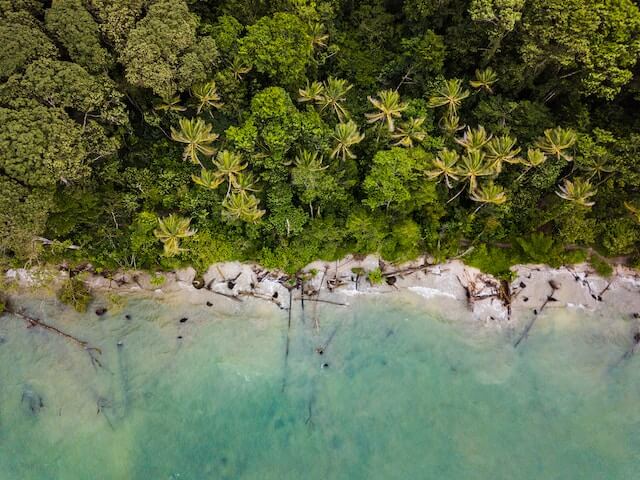
Eco-Lodges: Living in Harmony with Nature
One of the hallmarks of Costa Rica’s eco-tourism is its array of eco-lodges . These establishments prioritize sustainability, from their construction materials to their daily operations.
Solar energy, rainwater harvesting, and organic farming are often incorporated into their practices. Staying in such lodges ensures that your accommodations have a minimal ecological footprint, all while offering an authentic immersion into the country's lush landscapes.
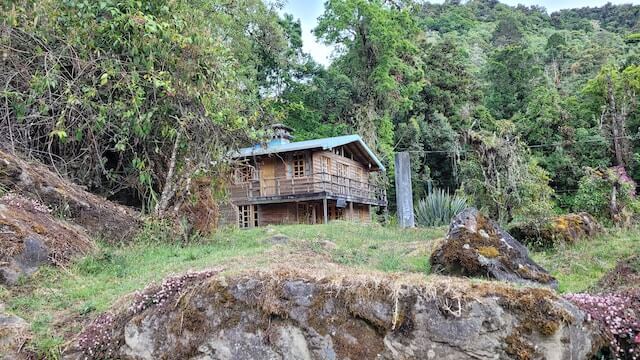
Wildlife Encounters: Ethical and Enriching
Costa Rica is a treasure trove of biodiversity, home to 5% of the world’s wildlife species. However, truly sustainable wildlife encounters require careful consideration.
Feeding wild animals, using flash photography, and straying from marked paths can be detrimental. By engaging in guided wildlife tours, you ensure that your interactions are both respectful and educational. Knowledgeable guides provide insights into animal behaviors and habitats, ensuring a deeper appreciation of Costa Rica's natural inhabitants.
Eco-Activities: Adventure with Awareness
Costa Rica brims with thrilling activities that seamlessly merge adventure with sustainability. Zip-lining through rainforest canopies, white-water rafting along untamed rivers, and diving into the marine-rich depths—each experience is heightened by the nation's commitment to eco-awareness.
But to truly embrace this ethos, travelers must prioritize operators who champion environmental practices. Whether it's a zip-lining company that ensures minimal disruption to trees or a diving outfit that emphasizes coral reef conservation, the choices matter.
Often, these certified operators also offer enriched experiences, pairing exhilarating adventures with insights into local ecosystems. In Costa Rica, eco-activities are not just about the thrill; they’re a profound connection to nature, achieved with utmost respect and consciousness.
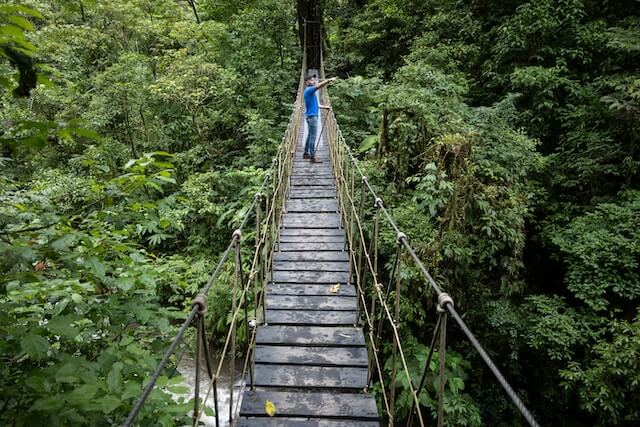
Traveling Responsibly: Beyond the Basics
For those considering tours to Costa Rica , a genuinely sustainable journey goes beyond selecting eco-friendly accommodations and activities. It encompasses every aspect of the travel experience:
- Transport: Whenever possible, opt for public transportation or shared shuttles. Not only is this eco-friendly, but it's also an excellent way to immerse oneself in local culture.
- Pack Light: Less baggage means less fuel consumption during travel. Plus, Costa Rica's tropical climate doesn't necessitate heavy clothing.
- Support Local: From dining to shopping, choose local. This infuses money directly into the community and supports sustainable growth.
- Reduce, Reuse, Recycle: These principles aren't just for home. Carry reusable water bottles, avoid single-use plastics, and respect the environment.

The Future of Eco-Tourism in Costa Rica
Costa Rica's commitment to sustainability isn't a fleeting trend. With the country aiming for carbon neutrality by 2050, eco-tourism's role is more crucial than ever. As travelers, our choices can support this vision, ensuring that Costa Rica remains a lush, vibrant, and eco-friendly destination for generations to come.
Eco-tourism in Costa Rica is more than a travel trend—it's a reflection of the country's soul. As the world becomes increasingly aware of the impacts of tourism, destinations like Costa Rica stand out as pioneers, showing that it's possible to explore and appreciate the world without causing harm.
A journey here is not just about witnessing nature's wonders, but about becoming an advocate for its protection and preservation.
Every choice, from where you stay to the activities you partake in, echoes a commitment to the environment and the future. In the heart of the tropics, Costa Rica beckons not just as a getaway but as a lesson in harmonious living.
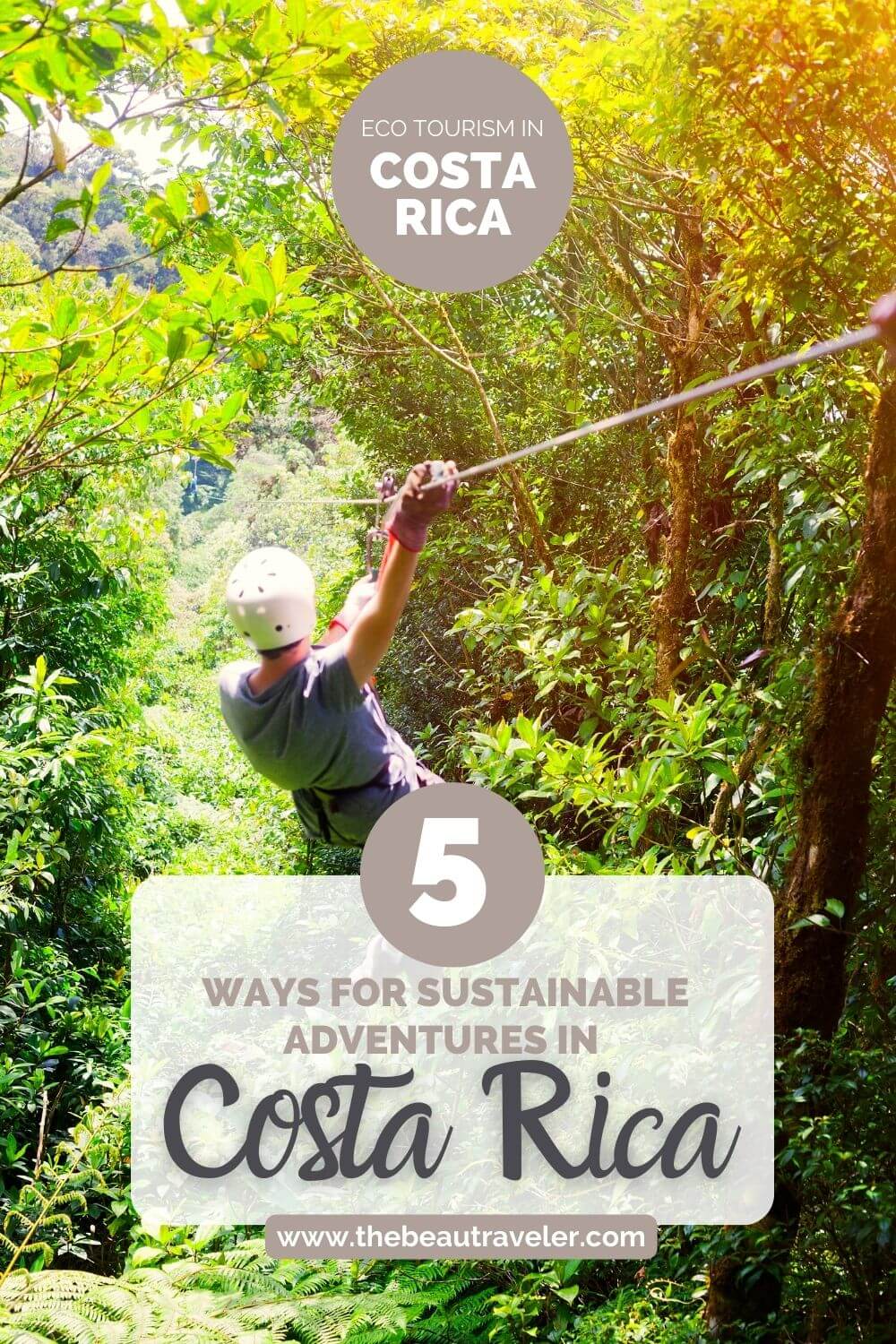
Disclaimer:
This post may contain affiliate links. I receive a small commission at no cost to you when you make a purchase using my link.
Like my post?

Costa Rica’s Keys to Success as a Sustainable Tourism Pioneer
How the country went from a deforestation crisis to becoming a global leader in sustainability
- Chapman University
OGphoto / Getty Images
- Sustainable Fashion
- Art & Media
In 2019, Costa Rica was named “ Champion of the Earth '' by the United Nations for its direct role in protecting nature and fighting climate change. The country, which is home to just over 5 million residents, was already known as a world leader in sustainability for putting environmental concerns at the forefront of its political and economic policies.
Over 98% of Costa Rica’s energy has come from renewable sources since 2014 (in 2017, the country ran a full 300 days solely on renewable power) and 70% of all public transport is expected to turn electric by 2035. Through a combination of protected areas, ecosystem services programs, and ecotourism, Costa Rica has successfully restored its forest cover from 26% in 1983 to over 52% in 2021 — proving to the rest of the world that reversing deforestation is possible with the right approach.
Where Is Costa Rica?
Costa Rica is located in Central America, between Nicaragua and Panama. It is known both for its stable, democratic government (the country hasn’t had an army since 1948) and for its incredible natural beauty. A whopping 25% of its territory is comprised of protected lands , ranging from tropical rainforests and rugged mountain ranges, to stunning coastlines and volcanic landscapes.
What Sets Costa Rica Apart?
Central America and the rest of the tropics are full of rich biodiversity and thriving tourism industries, so what exactly sets Costa Rica's approach to sustainable tourism apart?
“Our sustainable tourism model has allowed us to seek and attract niche groups of travelers that recognize our differences and the quality of experiences in the country,” Costa Rica’s Tourism Minister Gustavo Segura Sancho tells Treehugger. “The key to success has been to target a demand that can adapt to the conditions the country has to offer.”
Kahj19 / Getty Images
The country contains more than 6% of the world’s biodiversity despite covering only about 0.03% of the surface of the globe. Housing so much biological variety doesn’t just make Costa Rica a dream location for nature lovers, it also makes the country especially vulnerable to climate change.
“Despite being a small developing country, Costa Rica has decades of sustainable tourism efforts underway,” says Segura Sancho. “Our work involves the efforts of individuals and organizations throughout Costa Rica’s public and private sector and demonstrates a unified commitment to protecting not only our environment and economy, but that of the world.”
Sustainable Destination Development
Kryssia Campos / Getty Images
The country’s tourism model was developed with three primary factors in mind: sustainability, innovation, and inclusiveness. Costa Rica's tourist attractions focus on activities that respect the environment and offer travelers opportunities to reduce their carbon footprint and contribute to conservation and cultural heritage.
The Costa Rican Tourism Institute (ICT) developed a country-wide Certification for Sustainable Tourism back in 1997, which provides tourism companies with guidelines to manage their business sustainably. The certification program educates local companies on the appropriate use of natural and cultural resources, and provides visitors with an official "CST mark" to identify sustainable tourism operators, accommodations, and attractions. As of 2021, over 400 companies in Costa Rica are sustainably certified, and the program has even been recognized by the Global Sustainable Tourism Council and the United Nations World Tourism Organization .
Focusing on long-term sustainability within the tourism industry involved a few risks, for example by making the country a bit more expensive to visit. In the years since the tourism model’s development, surveys have shown that 63% of United States travelers are more likely to consider destinations making an effort to conserve and protect natural resources, while 75% are more likely to consider sustainable destinations. And a study published in the Proceedings of the National Academy of Sciences found that, by the year 2000, protected natural areas in Costa Rica reduced poverty in neighboring communities by 16% by encouraging ecotourism. It would appear that the country’s decades-long investment in sustainable tourism was a good one.
Sustainable Destinations in Costa Rica: Arenal and Monteverde
Kevin Schafer / Getty Images
Established in 1991, Arenal Volcano National Park protects 29,850 acres and at least 131 species of mammals, including monkeys, sloths , coatis , and jaguars , along with the 5,757-foot Arenal Volcano.
An example of sustainable management in the community, locally owned Arenal Observatory Lodge maintains 270 acres of natural forest and 400 acres of reforestation areas. The hotel donates food waste to local farms as feed for animals, uses biodegradable cleaning products, and contributes to several nonprofit community projects.
Just a few hours away, you’ll find an estimated 50% of Costa Rica’s biodiversity in the Monteverde Cloud Forest Biological Preserve . The preserve is run by the Tropical Science Center, a historic non-government environmental organization that has pioneered conservation efforts, research, ecotourism, and sustainable development initiatives throughout the country.
Manuel Antonio National Park
Mark Downey / Getty Images
A relatively small stretch of Costa Rica’s central Pacific coast home to iguanas, toucans, and monkeys , Manuel Antonio was one of the country’s most visited national parks. In an effort to curb pollution and other consequences of overtourism, the park now limits the daily number of visitors to 600 on weekdays, 800 on weekends and holidays, and completely closes the park once a week. The park was awarded the ICT Elite Certificate of Sustainable Tourism in 2021.
Tortuguero National Park
Located on Costa Rica's north Caribbean coast, Tortuguero boasts the largest green turtle nesting site in the Western Hemisphere. Working alongside the Sea Turtle Conservancy , one of the world's oldest international nonprofits focusing on sea turtles, community stakeholders helped fund the Tortuguero Visitor Center in 1959 to help share information with visitors and locals about threats to sea turtles and their ecosystems. The park protects 46,900 acres and focuses on sea turtle research, also offering a Junior Research Assistant Program for local high school students and educational workshops for younger students.
When's the Best Time to Visit Costa Rica?
Most tourists visit Costa Rica during its high season from November to April to enjoy the sunny, dry weather. However, this time of year can also result in higher costs and overcrowding (which can be harder on the environment). Booking a trip during the shoulder season or low season from May to November also has its advantages, from cheaper accommodations and flights to greener surroundings. Plus, off season is typically when locals who rely on the tourism industry struggle the most, so supporting the economy during this time is a major perk. Keep in mind that Costa Rica has a variety of microclimates, so it's best to consider your specific travel destinations and priorities when researching weather.
The Four Pillars of Sustainable Tourism
By definition, sustainable tourism should not only consider its current economic, social, and environmental impacts, but its future effects as well. This is often achieved by protecting natural environments and wildlife while managing tourism activities, providing culturally authentic experiences for visitors, and creating economic benefits for the local community. According to the Global Sustainable Tourism Council , the four pillars of sustainable tourism include sustainable management, socioeconomic impacts, cultural impacts, and environmental impacts. Costa Rica is a shining example of a destination that prioritizes all four of these aspects successfully.
Sustainable Management
Part of the reason why the ICT’s Certification for Sustainable Tourism standards program has become so successful is because of the multiple certification levels it offers. The tiers inspire tourism attractions and tour operators to work harder in strengthening their sustainability practices in order to work their way up. It has become a model for other countries setting sights on sustainability within their own tourism industries.
In order to diversify the tourism industry, the Costa Rica tourism authority also launched an Integral Management of Tourism Destinations program in 2018, with the goal of helping in the development of 32 tourism centers around the country.
Socioeconomic Impacts
Using a Social Progress Index (SPI), the ICT measures the wellbeing of tourism communities across the country. The SPI considers factors like quality of life, basic human needs, level of opportunities, and social welfare rather than gross domestic product (GDP) or other economic variables, something Segura Sancho says will ensure that tourism remains a positive force for development. “Through the SPI tool, the ICT has discovered the positive effects that our sustainable tourism model has had on local communities, including access to higher education, job opportunities, air quality and waste management, quality of life, improvements in safety and community support networks, women's empowerment, among many others.”
The program also leaves room for plenty of innovation, like the establishment of one of the country’s newest national parks on San Lucas Island . Once containing a wildlife refuge and a former prison building housing some of Costa Rica’s worst criminals, the 1.8-square-mile island is now a cultural heritage and hiking site. Tourists can visit the island to enjoy the vibrant wildlife and take tours hosted by local guides, a feature that has greatly contributed to the area’s socioeconomic development. The ICT also supports the Code of Conduct for the Protection of Children from Sexual Exploitation in Travel and Tourism — an initiative of the World Tourism Organization.
Environmental Impacts
Along with the Certification for Sustainable Tourism, the ICT has also implemented several other programs to encourage and enforce environmental sustainability across the tourism sector. The Ecologic Blue Flag Program , for example, evaluates Costa Rica’s beaches on criteria like ocean water quality, waste disposal, sanitary facilities, environmental education, and community involvement in beach maintenance. Only beaches that succeed in maintaining 90% of the strict criteria receive a distinction and an official Blue Flag to display on the beach. The ICT also advocates for coastal planning and supports programs for small businesses and destination management.
Cultural Impacts
Community tourism, which gives visitors a chance to support indigenous communities, meet local people, and experience authentic cultural heritage, is a growing movement in Costa Rica. Especially in the capital city of San Jose, there are numerous opportunities for tourists to learn about Costa Rica’s architecture, artwork, history, and food. San Jose tourists can purchase a discounted single ticket to visit three of the country’s most popular museums , all within walking distance from each other: the National Museum of Costa Rica, the Museum of the Central Bank of Costa Rica, and the Jade and Pre-Columbian Gold Museum. The ICT also provides resources and maps for self-guided walking tours of the country’s main cities and information on where to find traditional Costa Rican cuisine .
A Commitment to the Environment
In early 2021, the Costa Rica National Forest Financing Fund (Fonafifo) and the ICT launched a carbon footprint calculator to help visitors determine their trip’s carbon footprint and contribute to corresponding carbon offsets. Donations to this program are used to strengthen forest conservation efforts in Costa Rica.
Among other long-term targets, Costa Rica’s National Decarbonization Plan puts the country on track to achieve net zero emissions by 2050 , in line with the Paris Climate Agreement and the UN’s Sustainable Development Goals. Although 98% of the country’s electricity already comes from renewable sources, the plan aims to power 100% of the country’s public transport with electricity by 2050. President Carlos Alvarado Quesada’s Administration plans to work with individuals from both the public and private sectors, scientists, and other industry experts to make this vision a reality.
Establishing parks and refuges in Costa Rica — which now numbers 30 national parks, 51 wildlife refuges, and nine biological reserves — has generated responsible tourism and funded conservation efforts in parts of the country that otherwise may have gone overlooked by visitors. Although a full 25% of Costa Rica is officially zoned as protected territory, local appreciation for nature encompasses the entire country.
“Sustainability has long been embedded in the culture and traditions of Costa Rica,” Segura Sancho explains. “From an early age, children are taught to protect the country’s forests and wildlife, and to appreciate the diverse landscapes and natural beauty that the country has to offer. This inherent love of our surroundings means we want to conserve its many species of animals, insects, trees and birds for decades to come.”
" Renewable Energy - Costa Rica ." International Trade Administration.
" Environment ." Embassy Of Costa Rica In Washington DC.
" Why ‘Going Green’ Pays Off: Sustainable Practices Drive Destination Choice For A Majority Of Travelers, New Research Unveils ." Sustainable Travel International , 2016.
Ferraro, P. J., and M. M. Hanauer. " Quantifying Causal Mechanisms To Determine How Protected Areas Affect Poverty Through Changes In Ecosystem Services And Infrastructure ." Proceedings Of The National Academy Of Sciences , vol. 111, no. 11, 2014, pp. 4332-4337., doi:10.1073/pnas.1307712111
- What Is Ecotourism? Definition, Examples, and Pros and Cons
- What Is Sustainable Tourism and Why Is It Important?
- Regenerative Travel: What It Is and How It's Outperforming Sustainable Tourism
- What Is Overtourism and Why Is It Such a Big Problem?
- Why Are National Parks Important? Environmental, Social, and Economic Benefits
- Best of Green Awards 2021: Sustainable Travel
- Our Favorite Non-Profits for Gifts That Give Back
- What Is Community-Based Tourism? Definition and Popular Destinations
- New Zealand Aims to Become World's Largest 'Dark Sky Nation'
- How to Be a Sustainable Traveler: 18 Tips
- Why Is the Galapagos Penguin Endangered? Threats and How You Can Help
- 8 Incredible Rainforest Destinations Around the World
- 15 of the Most Beautiful Botanical Gardens in the US
- 10 Largest and Most Biodiverse Forests on Earth
- 19 of the Best Environmental Charities to Support
- Costa Rica Tours
- Costa Rica Travel Guide
- Costa Rica Travel Advice
Ecotourism in Costa Rica: 10 Ways to Experience it
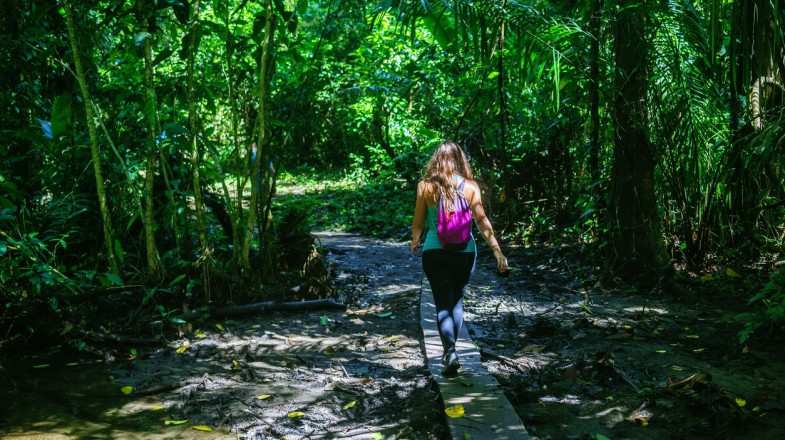
- 9.38K views
- ~ mins read
When it comes to traveling sustainably, travelers often think about the obvious tropes of green travel, such as traveling in eco-friendly vehicles and avoiding the use of plastic water bottles. But there are more ways to reduce a carbon footprint and become a responsible traveler. Welcome to Costa Rica , home to the world’s most enthusiastic tree planters and one of the first countries in the world to promote responsible travel. Costa Rica knew about eco-tourism even before it was cool, so take notes! This country is serious about its efforts for sustainability.
Eco-tourism in Costa Rica doesn't just mean staying in eco-lodges and taking nature walks in its conservation areas, but also supporting local farmers growing indigenous plants or whale watching through tour operators that support marine conservation. While the rest of the world looks for ways to undo the damage it has done to the environment, this Central American destination is already ten steps ahead.
En route to becoming the first carbon-neutral country by 2021, this vibrant destination with a flourishing democracy utilizes eco-tourism to supercharge its economy. If you’re out to experience eco-tourism while on a trip to Costa Rica , you’re in for a treat — there are so many ways to travel sustainably in this gorgeous slice of Central American paradise! Listed here are ten of our favorites.
- Sanjay Sola
1. SLEEP AT AN ECO-LODGE

Eco-tours in Costa Rica are not complete without staying at any of the brilliant eco-lodges. Costa Rica awards accommodations that excel in sustainability and eco-friendliness, promoting healthy competition between local businesses. For the ultimate in sustainable travel, a plethora of eco-lodges are available for anyone looking for a much needed digital detox, from roughing it up to living lux. Costa Rica’s Central Valley features a varied array of rainforest hotels that are cut off from the rest of the world (that’s right, no Wi-Fi or electricity).
If there’s one thing Costa Rica has proven, it’s that sustainability shouldn’t come in the way of providing an upscale experience. Pacuare Lodge, declared one of the world’s best eco-lodges by NatGeo, lies nestled on the banks of Pacuare River and offers luxurious amenities, cultural encounters, rich wildlife, and well-appointed accommodations.
Check out our list of the Best Eco-Lodges in Costa Rica .
2. EXPLORE LOCAL FARMS
Among all the eco-tourism activities in Costa Rica, a tour around Costa Rica’s organic farms is still the best way to not only enjoy local fare but learn about how the nation produces its fresh ingredients. Local farms provide a chance to learn about organic farming and make visitors think twice about where their food comes from. Head to Corsa Lecheria, 50 minutes from San Jose, for a tour that will have you walking through cloud forests and vibrant strawberry fields. Via a tractor ride, you’ll be milking cows, tasting various cheeses at a cheese factory, and hauling organic ingredients. Many eco-lodges also have their own organic farms where guests can volunteer. Perfect for adventurers who want to learn more about local farming while tasting their way through it!
Take a tour to El Trapiche Sugar Mill and explore the plantations in Monteverde.
3. ZIP THROUGH RAINFORESTS

While the rest of Latin America is suffering from marked deforestation, Costa Rica has been working very hard during recent years to sustain and increase its forest cover. The nation’s environmental services payment program established in 1997 has one basic essence: if you leave the forest on your property untouched, the country will pay you — an indication of how ecotourism in Costa Rica is of prime importance.
Zip lining is one of the best ways to experience the country’s lush and thriving forests. Fly from platform to platform while spying on birds, waterfalls, and an impressive array of flora. It isn’t hard to find a hotel or lodge with zip line activities available on-site!
Our article on Ziplining in Costa Rica recommends the best spots in Costa Rica for ziplining.
4. GO WHALE WATCHING

Humpback whales are a popular sight in Costa Rican waters between mid-July to late October and mid-December through late February. Uvita, a small village in Costa Rica, holds a Whale Festival every year to commemorate these mammoth ocean wonders. Tour operators who host whale watching activities must employ 64 practices for responsible whale watching in order to get awarded stars by the Keto Foundation, a non-profit working for marine conservation in Costa Rica.
5. RELAX IN A SPA

Most of Costa Rica's spas are powered by their natural resources, offering you picturesque views while you're enjoying a warm dip. With such a prime focus on sustainability, you can expect natural spa ingredients to be the main focus of your pampering experience. The spa at Tabacon Resorts harnesses the power of the nearby Arenal Volcano, while the Onda Spa at the Andaz Papagayo Resort offers nine spa rooms all tucked away in a forest canopy.
6. ENJOY LOCAL GRUB
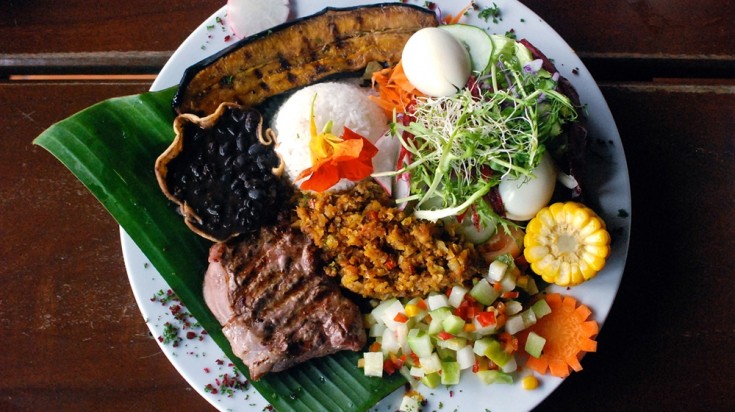
Before we get into the country’s physical beauty, let’s talk about its culinary delights. Family-owned small restaurants are easy to find and are great places to sample local food. Costa Rican food is fresh and pleases the senses — think comfort food with a dash of Latin flair. Eating local means using less carbon emissions to transport the goods, thus reducing its "food miles". Beans, rice, potatoes, pork and beef are commonplace in Costa Rican cuisine. Try a traditional casado , a Costa Rican meal of rice, meat, fried plantains, beans and often much more. Or try gallo pinto , a dish of beans, rice, onions, cilantro and red pepper. Or, order an ice cold beer with a cup of chifrijo , a bowl of rice and beans with pico de gallo, avocado, chimichurri, lime and pork meat. Don’t forget to visit Mercado Central in San Jose for over 200 vendors selling local food!
7. GO VOLCANO HOPPING
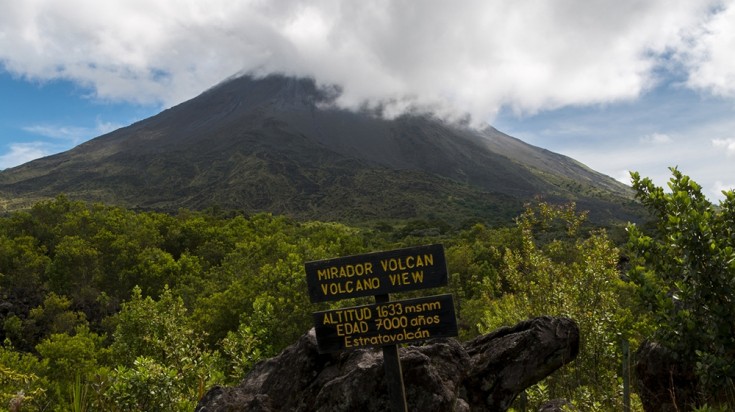
Costa Rica has over 60 volcanos but only six of them are active. With a unique environment created by changes in altitude, areas around volcanoes are a breeding ground for rich biodiversity that you won’t be able to see anywhere else in the world. Visit some of the most popular volcanos in Costa Rica like Arenal Volcano , towers over a lush landscape that’s perfect for adventure touring. Paos Volcano in the Central Valley is one of the world’s biggest active volcanoes and also features one of the world’s most acidic lakes. Bubbling mud pools and hot springs surround the Rincon de la Vieja Volcano , attracting scientists and tourists alike.
Visit the Arenal Volcano, take a Costa Rica Family Vacations tours or hike through Rincon de la Vieja national park.
8. GO ON A HIKE

Around 30% of the total land area in Costa Rica is protected, making the country a prime destination for hikers who want to experience the best of Costa Rica's rainforest. There are many good trails to go hiking in Costa Rica . A variety of wildlife refuges and national parks offer mountain treks for all skill levels. Both newbies and seasoned hikers will enjoy varied landscapes, from lush forest regions to challenging volcanic trails. If you’re new to hiking, signing up for a guided hike is the best way to learn about the environment while going at a comfortable pace.
9. ENJOY A CUP OF LOCAL JOE

Coffee lovers, listen up! Costa Rica isn't Costa Rica without its highly heralded Arabica beans. The country is serious about coffee and as one of its biggest exports, only the highest quality Arabica beans must be produced—by law! Many coffee farms utilize natural compost and solar energy and a variety of tours are available that support organic farming and fair trade. Such tours w ill have you touring roasteries and plantations while sampling only the finest coffee. Visit the Doca Estate to explore the oldest roasting factory in Costa Rica and learn more about coffee production, or just stop by a roadside coffee shop to experience the difference in quality. If you’re a coffee aficionado, Costa Rica will not disappoint.
Alternately, visit Heredia near San Jose or explore and try famous coffees.
10. TAKE A CHOCOLATE TOUR

Costa Rica’s love for coffee is first, but their passion for Cacao comes second. Frequently grown alongside their coffee beans, the nation’s longstanding love for chocolate is evident in their flourishing plantations. Cacao tours will have you learning about Costa Rica’s ancient chocolate history while enjoying a sample of both raw cacao beans and the delicious final product.
Caribbeans coffee and chocolate is a family-owned business in Puerto Viejo that puts a premium on the environment and the community around it. Employing members of local indigenous tribes supports the local economy — a great way to promote eco-tourism in Costa Rica. Tours here will have you learning about the history, growth, and creation of chocolate in the country.
Whether you’re zipping across rainforests, wading through mangroves, prancing along white powder beaches, or charging down a raging river, one thing is for sure — experiencing eco-tourism in Costa Rica means greener travel that gives back to the community and to Mother Earth.
For more tips on how you can make your travel more eco-friendly, check out our travel guide on 10 Awesome Ways You Can Travel Eco-Friendly .
Related Articles
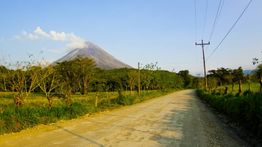
How to Get From San Jose to La Fortuna
One of the Costa Rica’s best-loved protected ... read more

Travel Tips for Costa Rica
In recent years, Costa Rica has established i... read more
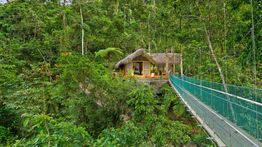
10 Best Eco-Lodges in Costa Rica.
Costa Rica boasts diverse rainforests, dramat... read more
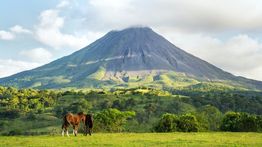
Best Hotels near Arenal Volcano
Lush rainforest, mountain streams loaded with... read more

10 Best Costa Rican Foods to Try
The rain-forested canopies and the remarkable... read more
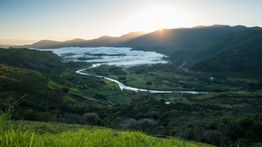
Planning a Trip to Costa Rica: Your Essential Guide to Costa Rica
Costa Rica is well-known as the 'treasure' fo... read more
Related Categories
- How Long To Stay In Costa Rica
- Top Costa Rica Attractions
- What To Do In Costa Rica
- When To Visit Costa Rica
- Where To Go In Costa Rica
- Previous Post

Popular Destinations
- Europe Tours
- Everest Base Camp Trek
- Italy Tours
- Spain Tours
- Argentina Tours
- Canada Tours
- Sri Lanka Tours
- Chile Tours
- Antarctica Tours

Book With Confidence Contact Us Call Our Experts (877) 587-8479

- Alaska: Denali Discovery
- Alaska: Glaciers & Grizzlies
- Alaska: Northern Lights
- Argentina: Patagonia & Mendoza
- Costa Rica: Secluded Wildlife Adventure
- Louisiana: Gators & Gumbo Adventure
- Norway: Western Fjords Adventure
- Rwanda: Gorilla Trekking
- Tanzania: Great Migration Safari
- Travel Journal
- Sustainability
- Book With Confidence
- Contact Gondwana Ecotours
- (877) 587-8479
- SEE DATES & PRICES >
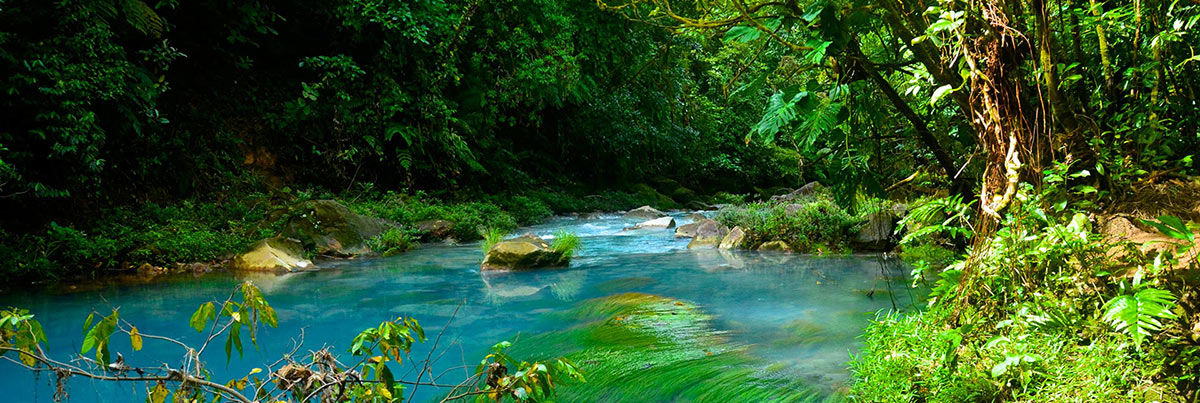
Preserving Pura Vida: Ecotourism in Costa Rica
Costa Rica is world-famous for its extraordinary wildlife, playing home to roughly 5% of the earth’s biodiversity. It is no surprise that this lush country is a hotspot for ecotourism.
Ecotourism is traveling responsibly with a focus on nature and wildlife, and partaking in educational experiences. Ecotourism provides beautiful natural experiences for visitors, sustains the well-being of local people, and increases knowledge and understanding through educational activities to help guests learn about the importance of protecting natural resources. You can learn more about ecotourism in another of our blog posts.
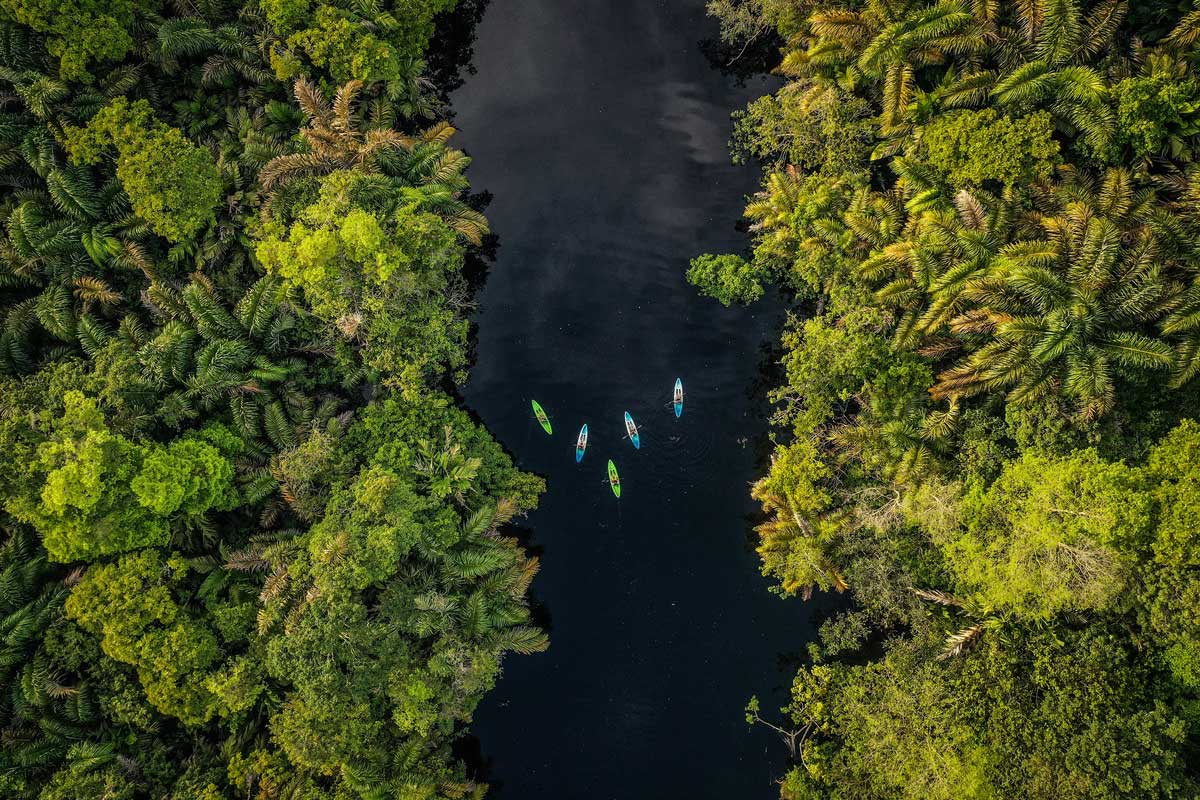
History of Wildlife Conservation and Ecotourism in Costa Rica
With its rich biodiversity and progressive environmental protection policies, Costa Rica is a world leader in ecotourism. Visitors travel to Costa Rica to enjoy volcanoes, beaches, jungles, hiking, and national parks.
More than 25% of Costa Rica’s total land area is protected by the National System of Conservation Areas. This network consists of 29 national parks, 19 wildlife refuges, 8 biological reserves, and a further series of protected areas that help to conserve the precious wildlife that lives there. The Osa Conservation Area on Costa Rica’s Osa Peninsula is one of the country’s most well-known biodiversity hotspots.
Costa Rica is well known for its successful and environmentally friendly ecotourism industry. With nearly ½ million acres of land designated as protected areas, ecotourism draws tourists to visit the extensive network of national parks and protected areas around the country.
Costa Rica was a pioneer in ecotourism. By the early 1990s, ecotourism had become a key component of the tourism industry in Costa Rica. Many of the first ecotourists to visit Costa Rica were academics and field biologists who came to study ecology. The many habitats of Costa Rica, such as rainforests, tropical forests, marine areas and wetlands, are the subject of scientific studies.
The publications generated by these biologists prompted a growing group of ecotourists who wanted to see Costa Rica’s wildlife for themselves. The enrichment of knowledge of these important habitats is an invaluable contribution from the National Parks System of Costa Rica.
Over time, ecotourism has come to be seen as a means to conserve natural areas throughout Costa Rica. Ecotourism provides an incentive for natural resource conservation and an alternative to environmentally damaging industries. Without the ecotourism market encouraging support for environmental protection, the vast network of protected areas in Costa Rica might be much smaller than it is today, and areas that are currently protected may otherwise have fallen to the demands of the logging or mining industries.
The rise of ecotourism in Costa Rica has resulted in an expansion of the job market, allowing local citizens to generate income and employment. Local communities and schools receive significant investments and donations from visitors, helping to improve the living conditions of local people.
Ecotourism in Costa Rica also encourages individuals to take action, and many visitors return home wanting to do more to help protect the environment. Ecotourism emphasizes changing hearts and minds through environmental education. Expert tour guides and educational activities invite visitors to become environmentalists, thereby promoting conservation efforts worldwide.
Costa Rica’s successful environmental and ecotourism policies have regularly been cited as a model for other countries.
The Certification for Sustainable Tourism
The Certification for Sustainable Tourism (CST) was developed by the Sustainability Programs Department of the Costa Rica Tourism Board in 1997, in collaboration with the Costa Rica National Accreditation Commission. The certification is recognized by the Global Sustainable Tourism Council .
The Certification for Sustainable Tourism provides guidelines for companies in the tourism sector to build their business model based on the best sustainable tourism practices. The purpose is to improve the way natural, cultural, and social resources are used, and to promote the active participation of local communities in the ecotourism industry in Costa Rica.
The Certification uses a rating system, on a scale of one to five, to assess businesses on the level of responsible tourism they uphold. The program evaluates tourism companies on four main aspects – physical biological parameters, infrastructure and services, external clients, and the socio-economic environment.
The Certification for Sustainable Tourism Program ensures that activities and services offered by businesses have a minimal negative impact on the surrounding natural environment. The program teaches best management practices, conducts certification assessments, and offers training sessions for businesses.
The Certification for Sustainable Tourism is a seal of approval for demonstrating environmentally and socially sound business practices.
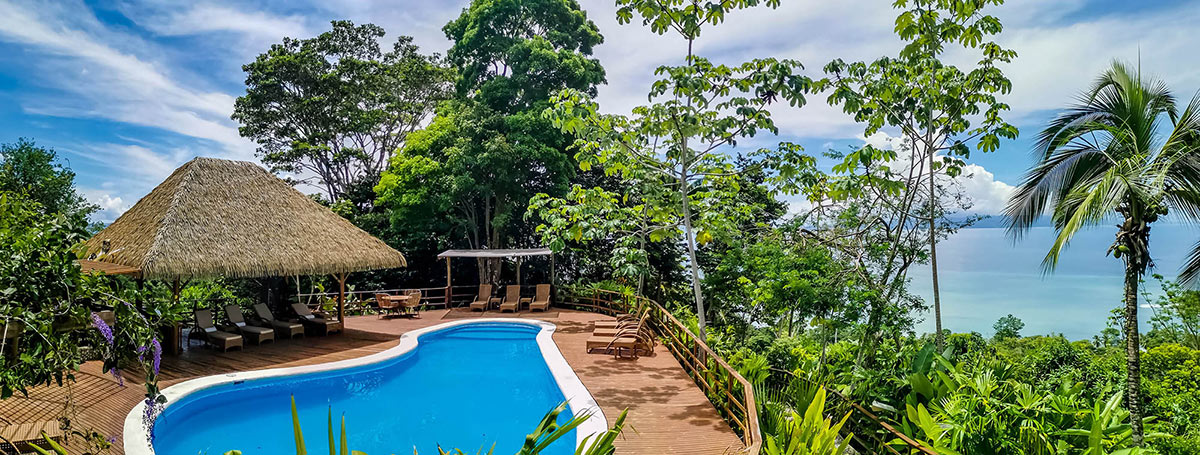
Sights to See and Activities to do in Costa Rica
With majestic volcanoes, Pacific and Caribbean beaches, tropical dry, wet, and rain forests, and dense jungle landscapes, there is always something to do in Costa Rica.
A sunrise birding tour is a guaranteed way to fall in love with birds, whether you’re an avid birder or a novice. In Costa Rica, you can encounter hundreds of bird species, including Scarlet Macaws and toucans.
Coined “the most biologically intense place on Earth” by National Geographic, the Osa Peninsula on the Pacific Coast of Costa Rica is world-famous for its incredible rainforest. The Osa Peninsula offers a fascinating mix of freshwater and marine ecosystems, right next to lush rainforests, which is why such a vast variety of species can call it home.
If you head down to turtle nesting beaches just before sunset, you might be lucky enough to see adult females laying their eggs, or newly hatched turtles making their first trip towards the ocean. Sea turtles are highly protected, so you can only visit the nesting sites with a professional guide. In 25 to 30 years, these turtles will come back to the same beach to lay their own eggs.
There are so many national parks to choose from in Costa Rica’s extensive National Parks system, but Corcovado National Park is considered by some to be the “crown jewel”. Spanning 47,000 hectares, the national park is home to jaguars, peccaries, and tapirs. If that’s not enough, more than 450 species of birds are known to live in the national park, as well as nearly 700 species of plants.
Costa Rica has so many places and experiences to offer. Between the boat rides, walking tours, kayaking, and sea turtle viewing , it’s impossible to be bored in Costa Rica.
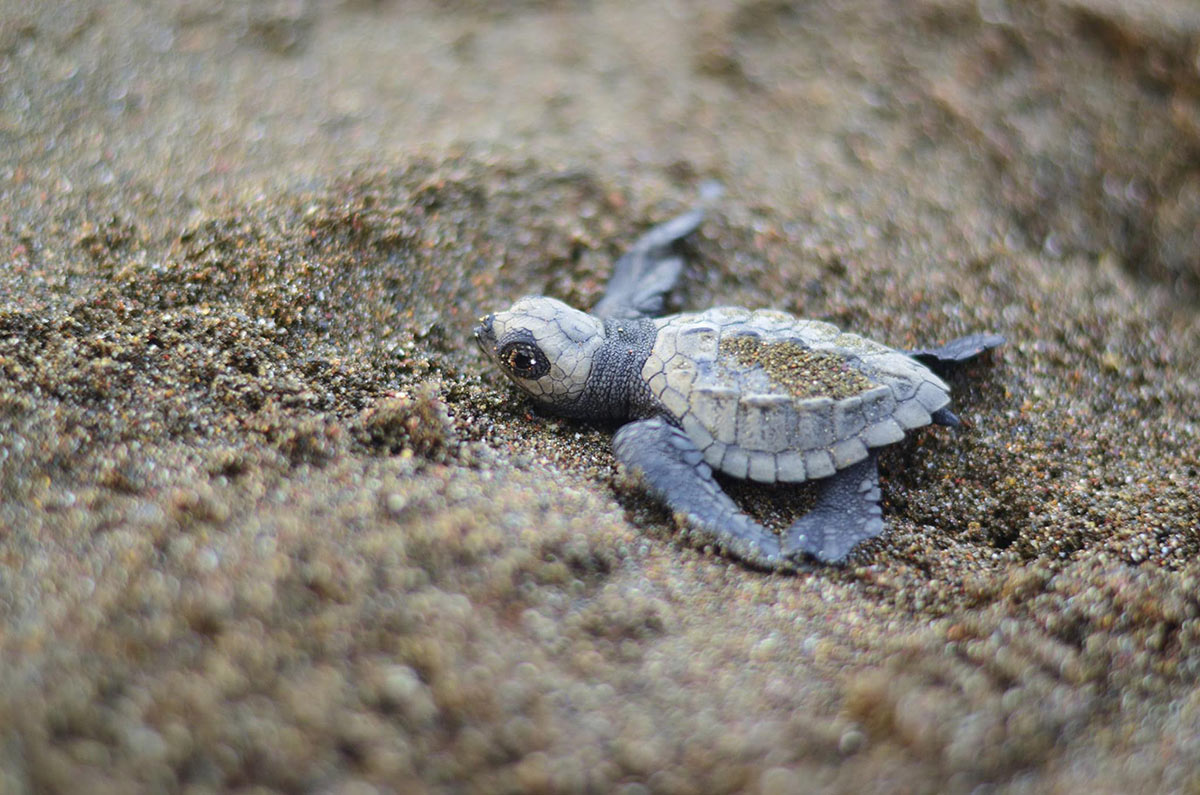
- https://www.ict.go.cr/en/sustainability/cst.html
- https://www.visitcostarica.com/en/costa-rica/things-to-do/ecoturism
- https://www.gstcouncil.org/costa-rica-cst-standard-gstc-recognized-standard/
Explore Topics
- Alaska - Grizzlies & Glaciers
- Amazon Rainforest
- Environment
- Northern Lights
- South America
- uncategorized
- See All Articles
Join The Soul Traveler's Club! See Benefits >

I've got you! Sign up to get My Absolute Favorite Destinations not only to visit but to stay in Costa Rica.
My name is Todd & I am the Founder of GoVistCostRica.com and I will inform you of everything you need to know about Costa Rica.

- Top 10 Destinations in Costa Rica
- Costa Rica Weather
Please remember to add [email protected] to your email whitelist or add me as an email contact to ensure you get all my emails, don't worry I will never spam you.


Welcome to the official site of Costa Rica
Welcome to Costa Rica! This beautiful country is known for its stunning beaches, lush rainforests, and incredible wildlife. Whether you’re looking for adventure or relaxation, Costa Rica has something for everyone.
Some of the top attractions include Arenal Volcano, Manuel Antonio National Park, La Paz Waterfalls, Papagayo Peninsula, Tamarindo beach, Rio Celeste, Monteverde Cloud Forest and Corcovado National Park.
You can enjoy activities such as surfing, snorkeling, fishing, ziplining and hiking. Costa Rica is also home to many unique and diverse animal species such as sloths, monkeys, birds, turtles and more. We hope you enjoy your stay!

The Costa Rica Essentials
Essential Costa Rica is about promoting organic ingredients, unspoiled nature and authentic experiences.

Fill your calendar with the most wonderful natural and wildlife events.

Sun and Beaches
Costa Rica occupies a privileged spot with beaches in the Caribbean Sea and the Pacific Ocean.

Costa Rica is a land of volcanoes, rainforests and cloud forests, huge waterfalls and mighty rivers.

If stress is a part of your daily life, Costa Rica is the cure.

Costa Rica has a great place to experience nature’s wonders with your children; the country is a must for families!

Costa Rica is considered one of the most bio-diverse regions in the world.

Costa Rica in English, means rich coast. Every cruise ship visiting Costa Rica understands why.
Costa Rica has a wholesome environment and is an excellent place for families.

The richness of Costa Rica stems from the cultural diversity of its people.

Honeymoon & Weddings
Costa Rica is waiting for you to live this experience.

Where to Go?
Located on the central Pacific coast, the Puntarenas region extends from Punta Conejo south to Puerto Caldera to the mouth of the Bongo River. The region’s rich coastline overlooks small islands, inlets, beaches and beautiful natural wonders. The port town of Puntarenas serves as the center of the region and is home port to a ferry that carries visitors over to the tip of the Nicoya Peninsula.

South Pacific
The combination of breath-taking white-sand beaches, sweeping mountain views and an ideal tropical climate has made Guanacaste one of Costa Rica’s most popular regions. It boasts many of the country’s popular beaches, including Playa del Coco, Playa Flamingo, Playa Conchal and the Papagayo Peninsula. By day visitors can challenge themselves with a surf lesson, cool off under a waterfall at Rincón de la Vieja National Park, discover the craters of an active volcano with the same name and more before enjoying the active nightlife in Tamarindo.

Northern Plains
Recognized as home of Arenal Volcano National Park, which boasts 75% of Costa Rica’s bird population, the Northern Plains present endless activities for visitors. Excursions range from hiking and waterfall rappelling to canopying and exploring via a hanging bridge tour. Those looking for activities on the water will find that Lake Arenal is an ideal location for canoeing, fishing and kite surfing.

Central Valley
Those in search of cultural and natural attractions will find both in the Central Valley region. Home to the destination’s capital city, San José, many of Costa Rica’s most popular museums can be found in this urban setting including the Gold Museum, Jade Museum, National Museum and Children’s Museum, in addition to the architectural jewel of San José, the National Theatre.

Central Pacific
Beautiful beaches, wildlife sanctuaries, lagoons, rivers and waterfalls make the Central Pacific region an ideal destination for visitors in search of variety. The region stretches from the city of Puntarenas to Dominical de Osa and is made up of some of Costa Rica’s most visited areas including Monteverde, Quepos, Jacó, Bahía Ballena and Manuel Antonio. The region’s climate creates a unique landscape that transitions from tropical wet forest to tropical forest to tropical dry forest, providing the opportunity to observe a wide range of plants and animals.

The diverse coastline of the Northern Caribbean region attracts anglers, naturists and water enthusiasts in search of unique experiences. The North Caribbean region is famous for its interconnected canals and for Tortuguero National Park, where visitors have the opportunity to witness green turtles nesting. Limón City, the largest city on the country’s Caribbean coast, is perched in the center of the coast. The Southern Caribbean boasts some great beaches and picturesque parks, which are complemented by the area’s inviting culture.
Planning your Trip to Costa Rica
Suggested itineraries
Accommodations
Restaurants
Other Activities
Local Travel Agencies
Travel Tips

Costa Rica Blog
Latest news and articles about costa rica.

Costa Rica National Parks
Explore our world famous national parks.

Costa Rica's traveler tips
First hand information for your dream vacaction, #essentialcostarica, share your experience, .


Ecotourism in Costa Rica – Plan a Sustainable Trip
Disclaimer: This article may contain affiliate links. Clicking on them may earn Costa Rica Vibes a commission, at no extra cost to you. Thank you for your support!
Costa Rica prides itself on its environmental and sustainable values. This extends to the entire country running on almost 100% renewable energy and being home to about 5% of the world’s biodiversity despite only taking up a landmass of 1% of the earth’s surface.
With tourism being the biggest income source to the country, it is important for us all to do our part in maintaining and strengthening the eco-friendly classification that Costa Rica has worked so hard to achieve.
We created this guide to ecotourism in Costa Rica to give you some insight on how you can enjoy a sustainable trip, the best places to stay at a variety of price points, and great eco-friendly activities.
What is Ecotourism?
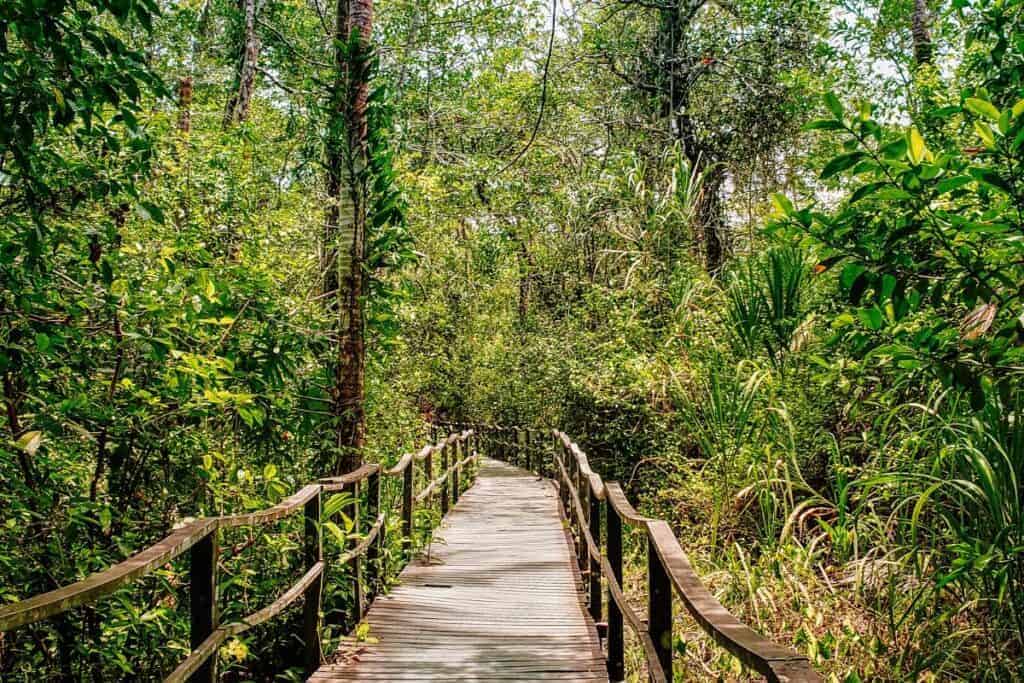
Ecotourism is the idea of creating a travel experience that emphasizes conserving the environment, protecting natural areas through minimal impact travel, education of the traveler, and improving the lives of local people.
Costa Rica has been a popular ecotourism destination since the 1990’s. In fact, the country, with its rich biodiversity and immense ecosystem, is considered a leader in eco tourism and is often considered a positive model for the rest of the world.
How Ecotourism Has Affected Costa Rica
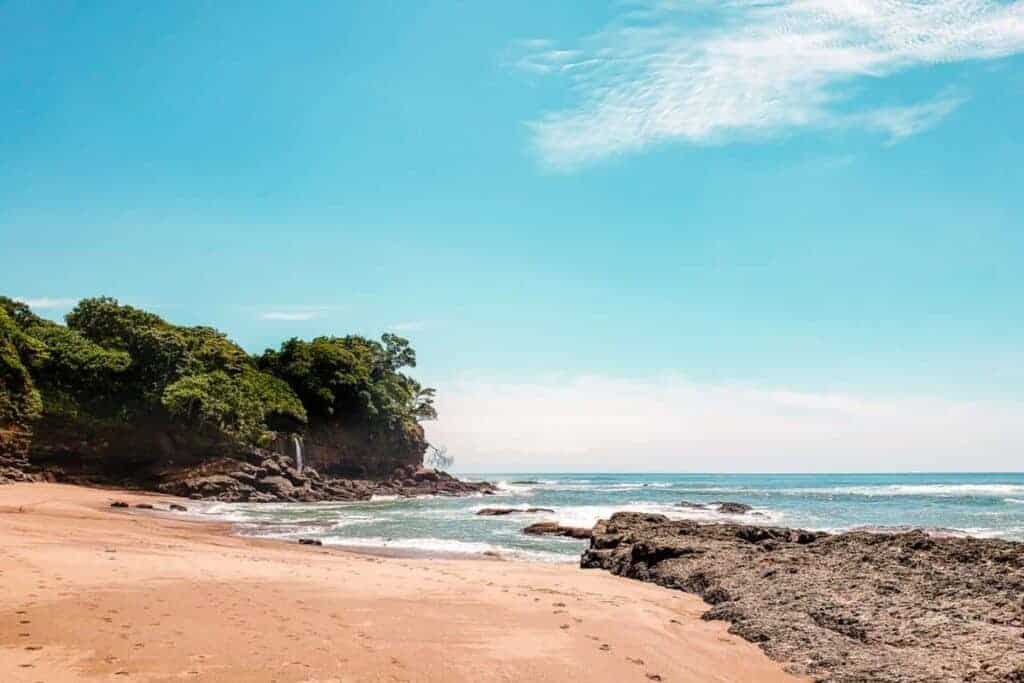
It is hard to balance the pros and cons that the ecotourism model has had on Costa Rica.
Personally, I believe that the eco-friendly travel classification of Costa Rica has had many positive effects on the country. Of course, there are always going to be negatives, but it seems to me that the positives outweigh the negatives.
A lot of this is thanks to the efforts that the Costa Rican government and citizens have put on living up to this ecotourism classification in order to increase tourism while simultaneously preserving the land and culture.
As a result:
– The country is the wealthiest in Central America
– Costa Rica is the most visited country in Central America
– 25% of all areas in Costa Rica are protected through national parks, reserves, and protected areas
– 98% of energy is produced from renewable resources
– The country boasts is a 95% literacy rate
However, although increased tourism and preservation of the environment sound great in theory, the downside is that some citizens feel that it is impossible for them to survive financially if they do not work in the tourism sector. The cost of living has gone up as a reflection of tourism, and not everyone in the country can keep up with that.
Another downside is the increase in foreigners (like us) that move to Costa Rica. Often these foreigners come on a retirement scheme or set up new tourism businesses in the country which can take away from opportunities for locals to reach the same success.
Costa Rica has gained immense popularity for its development of a successful, yet environmentally friendly, ecotourism industry. However, environmentalists and economists alike debate whether an economy centered on tourism produces more harm than good.
It is a tough balance for sure! This is why we try to always recommend companies run by Costa Ricans when possible. But, I don’t always know if we are helping or contributing to problems.
I guess, all we can do is try our best and hope that we are helping rather than hurting.
And this extends to you as a traveler as well. All you can do is your best when it comes to sustainable travel.
And that is my TED Talk on Costa Rica ecotourism. 😉
Now, the fun stuff!
Eco Friendly Activities
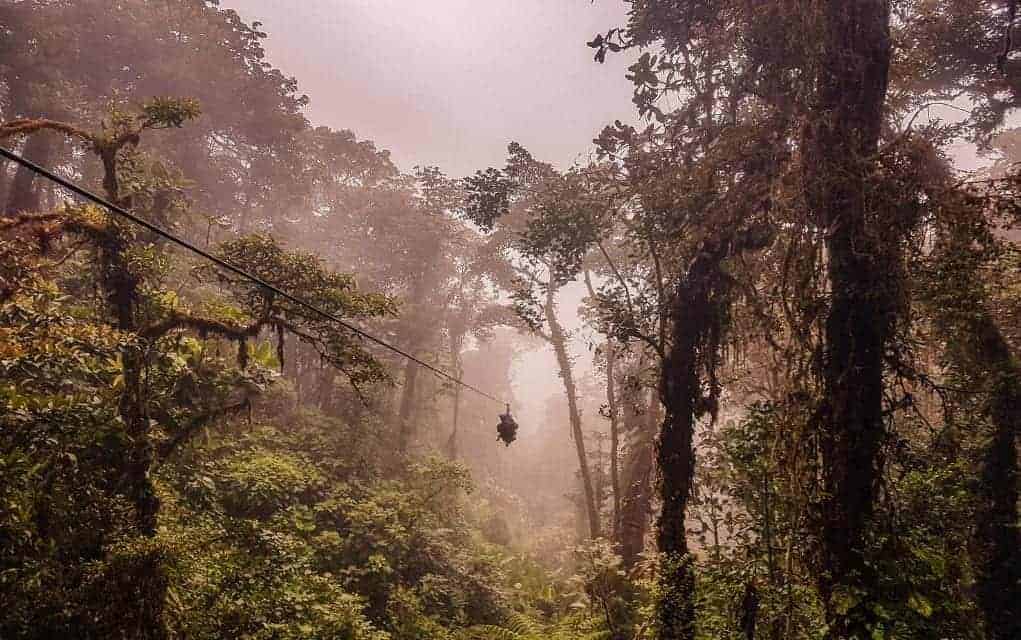
Most activities in Costa Rica are eco friendly because you will likely spend most of your time outside during your travels. Here are some great ideas for things that have minimal environmental impact and also help support locals.
Hike in a National Park
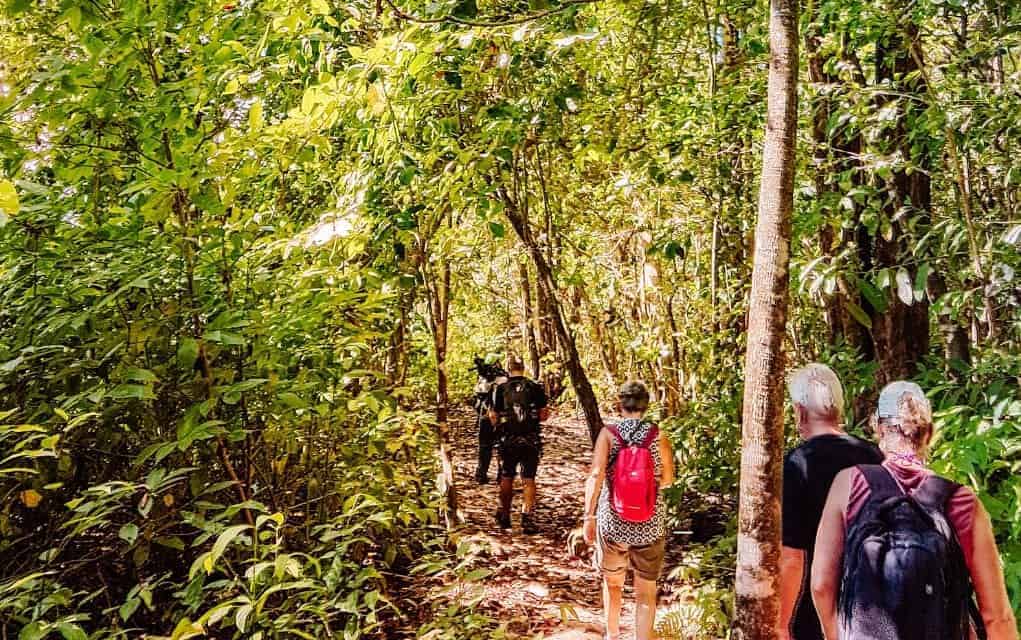
All the national parks are amazing, but for a really unique environmental experience, we suggest Corcovado National Park on the Osa Peninsula.
Relax on a Beach
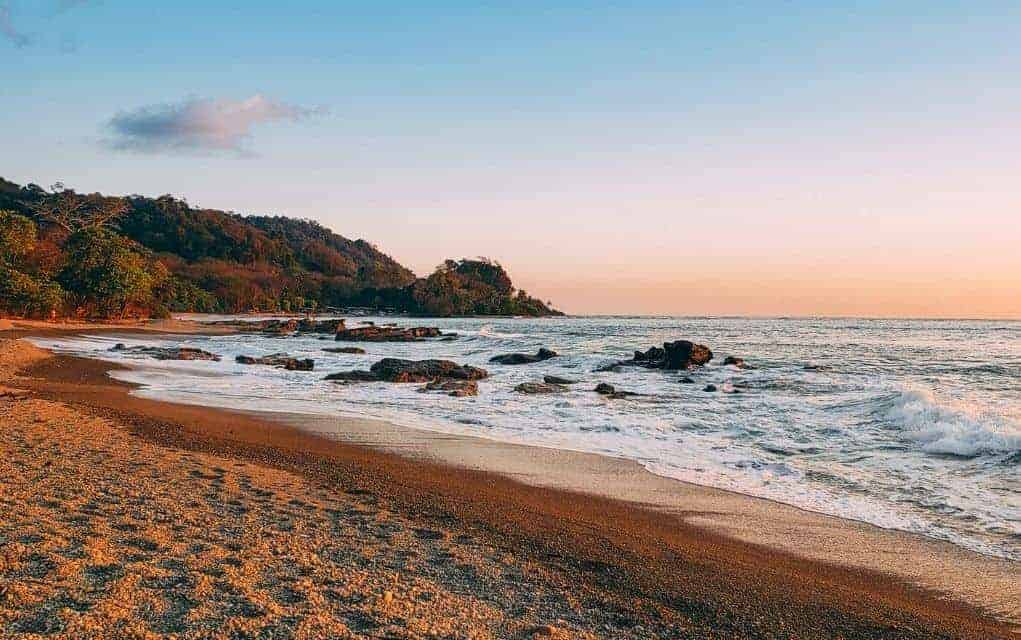
With amazing coastline on both the Pacific and Caribbean coast of Costa Rica there is no shortage of beaches to enjoy. Also, you don’t have to limit your enjoyment to relaxing on a beach, there is also always surfing, snorkeling, kayaking etc.
Check out our guide to Costa Rica beaches for more tips.
See a Volcano Up Close
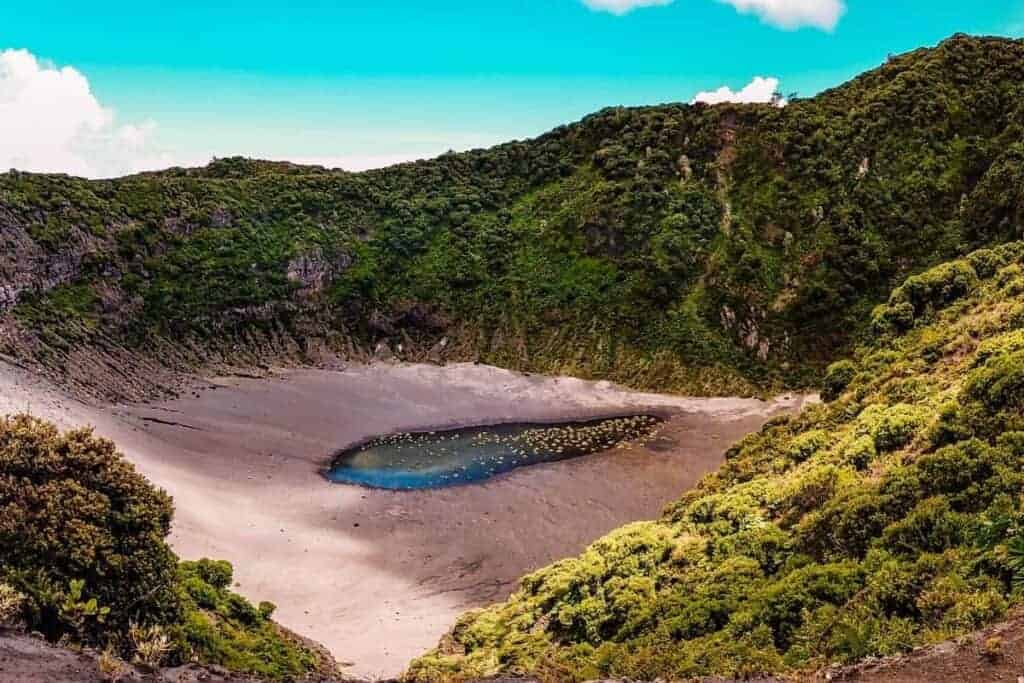
There are several volcanos in Costa Rica. Our favorites to visit up close are Poas Volcano and Irazu Volcano . Arenal is amazing as well to view from below.
Visit a Waterfall
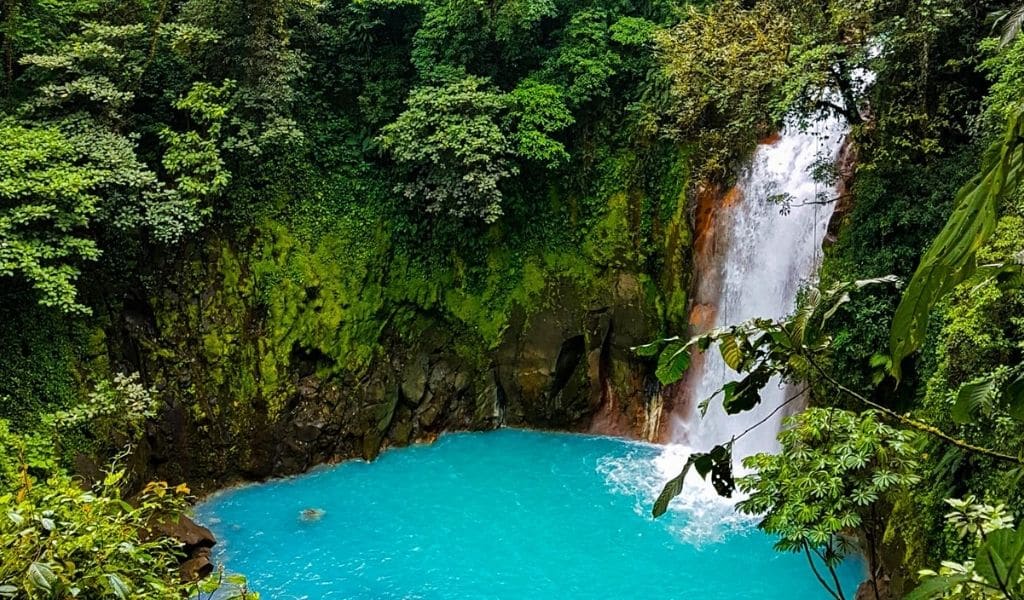
Waterfalls are everywhere in Costa Rica. There is such a variety from places with multiple falls, spots you can swim under, and even some with crazy bright blue coloring.
Find out more in our complete waterfall guide .
Walk on a Hanging Bridge
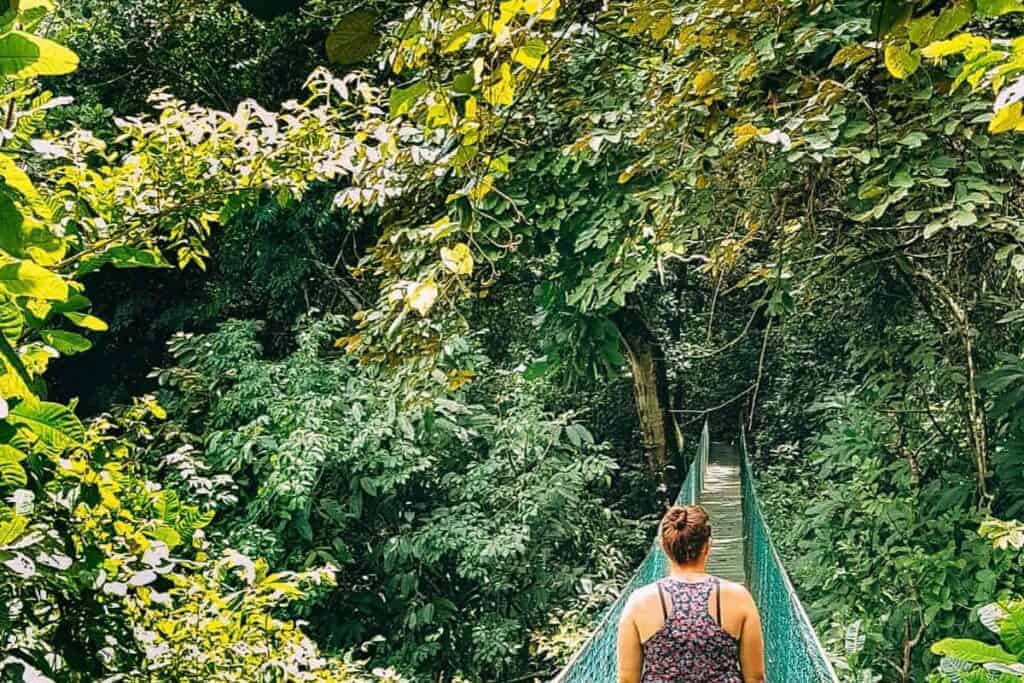
Our two favorite places to enjoy a walk along hanging bridges are La Fortuna with views of the Arenal Volcano and Moteverde where you can walk on suspension bridges above cloud forest canopies.
Go Zip-Lining
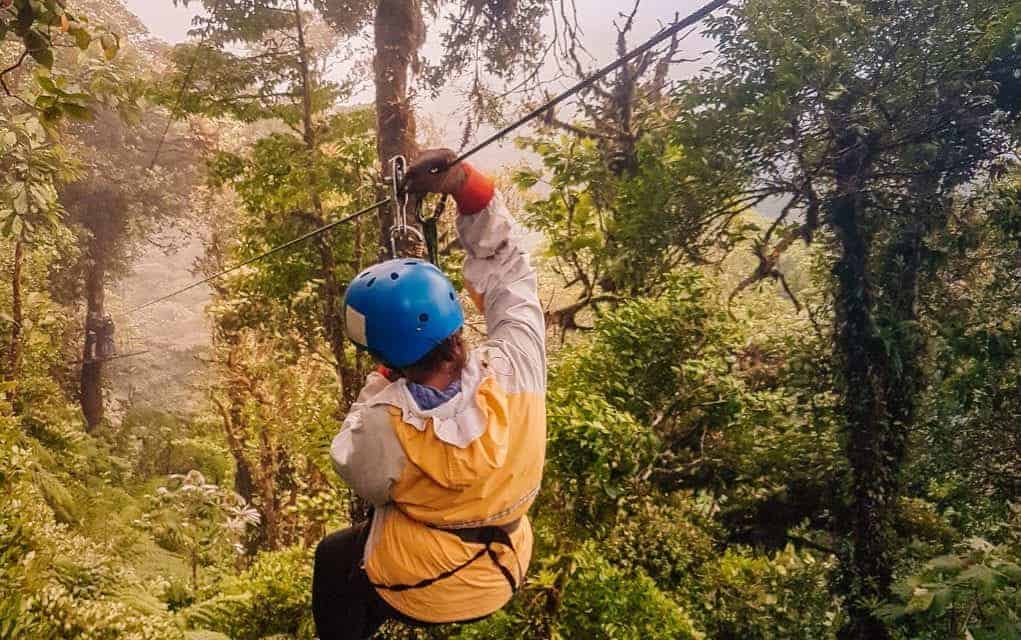
It is possible to go zip-lining all over the country. Our absolute favorite places are Monteverde and La Fortuna because the views are next-level amazing.
Eco Lodges in Costa Rica
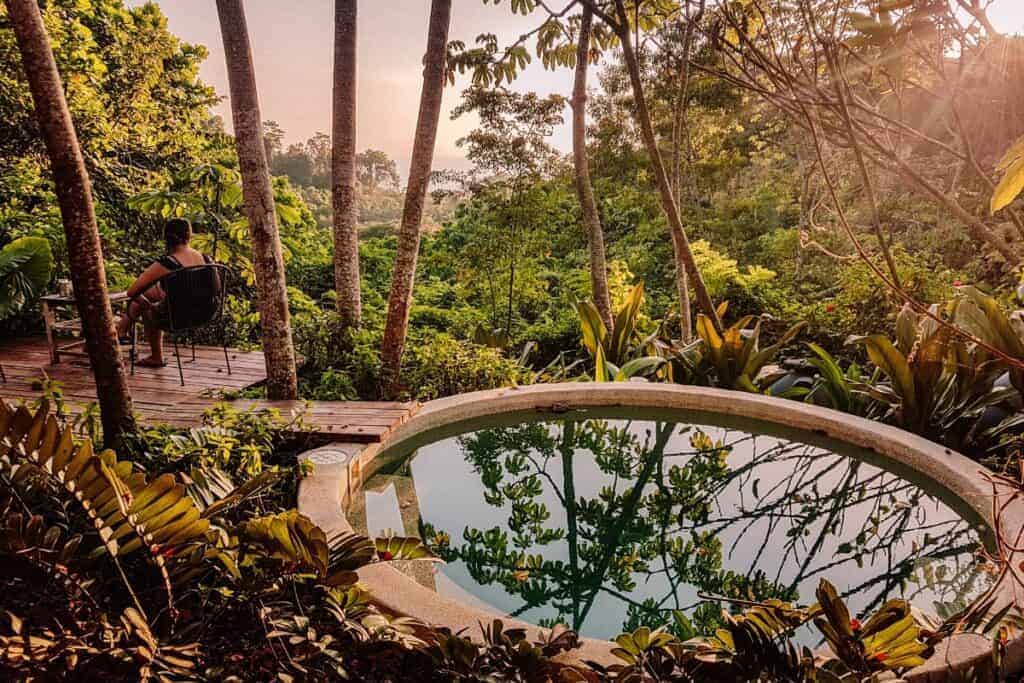
Costa Rica has accommodations for all travel styles and interests and that includes places that will satisfy all your eco conscious needs. Eco lodges in Costa Rica are prevalent.
Here are a few that we have either visited or know great things about…
High End Eco Resorts
Pacuare Lodge : This all inclusive resort is located in the dense jungle between San Jose and the Caribbean coast. This is a popular spot for white water rafting tours, but the property is so amazing that you could also just spemd time enjoying all it has to offer.
Lapas Rio Lodge : Ok, this is next-level luxury located in Puerto Jimenez near Corcovado National Park. The property boasts 17 private bungalows on over 1,000 acres of privately protected land.
El Silencio Lodge & Spa : This amazing resort is located only about one hour away from the San Jose International Airport in dense jungle. This has been on our personal Costa Rica bucket list for awhile because the vibe is everything we want with a nice combo of luxury, education, and nature.
Mid Range Eco Resorts
Tortuga Lodge & Gardens : This lodge is located on the Caribbean coast of the country in Tortuguero. It is an absolutely beautiful place to stay with a pool along the Tortuguero River.
Finca Luna Nueva Lodge : Located in the hilly region just south of La Fortuna, this eco-lodge has a swimming pool, spa, and extensive gardens and forest that guests can explore. Oh, and the food is delicious!
Danica Cloud Forest Lodge : Located in one of our absolute favorite place, San Gerardo de Dota, this eco lodge provides an on-site art gallery, an amazing restaurant, private hot tubs at each room, and amazing grounds with cloud forest views.
Budget Friendly Eco Lodges
Drift Away Eco Lodge : This place, located on the beach just south of Tamarindo, is run by two other travel bloggers. In other words, they know all about what matters when it comes to great accommodations and execute that all perfectly with their lodge.
Is it Really an Eco Lodge?
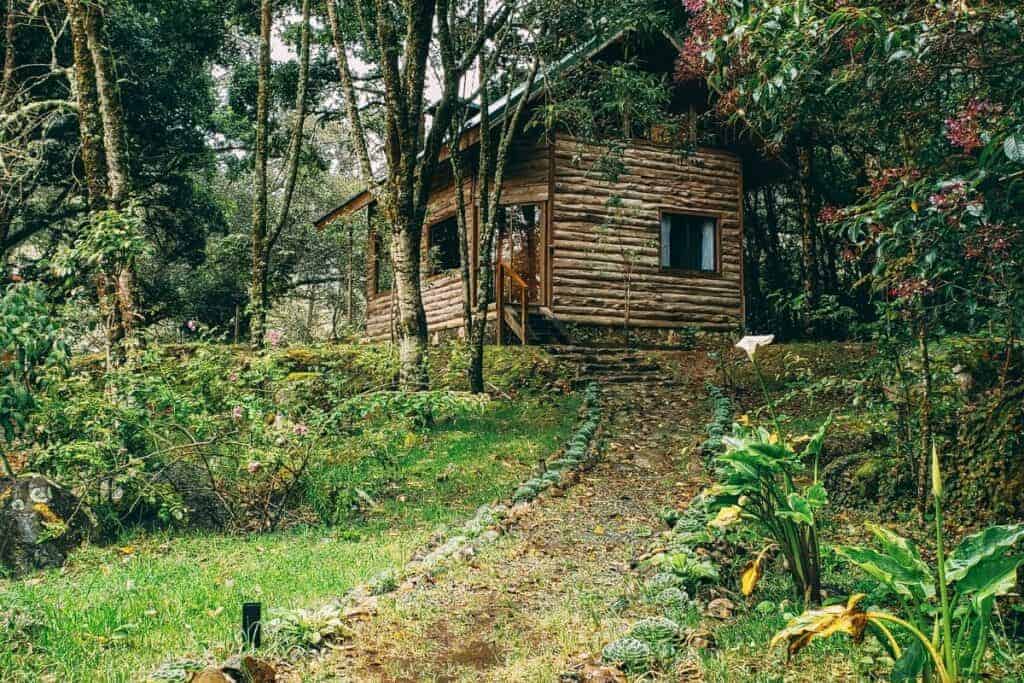
Keep in mind that an eco lodge can really mean whatever someone wants it to mean. In Costa Rica, hotel owners know that the term “eco lodge” has a positive connotation which can be used to attract customers.
There isn’t any qualification in Costa Rica that accommodations need to follow in order to advertise with the eco-lodge distinction.
In other words, if you care a lot about the place you are staying focusing on sustainable methods, send them an email before you book and ask them how exactly they distinguish themselves as an eco-lodge.
Tips for Being a Good Eco Traveler While in Costa Rica

– The Institute for Costa Rica Tourism (ICT) has a system of classification for sustainable businesses. If you see this symbol ⇩ on a Costa Rican business website, that means it has met the requirements to achieve a certificate for sustainable tourism.
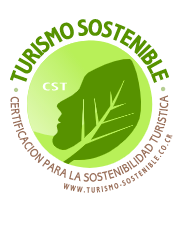
– Keep in mind that being a good eco tourist goes beyond just helping the environment. A big factor is preserving local culture. For us, it is important to support local businesses whenever possible.
If you have any questions about eco travel in Costa Rica, just leave them in the comment section below and we will get back to you. We are always happy to help you out!
You Might Also Like:
Costa Rica Jungle Resorts – 14 Luxury Stays
Costa rica hanging bridges – where to visit, 90 costa rica travel tips: things you need to know.
Costa Rica Travel Details : What You Need to Know
🚗 Should I rent a car in Costa Rica?
Having a rental car will give you the most flexibility when traveling in Costa Rica. This will also allow you to take fun day trips on your own.
- Save 10% Plus Other Perks with Our Adobe Rental Car Discount
- You might also consider; shared shuttle services or private transfer services
🏄🏽 How can I book things to do?
We find that Viator tends to have the most comprehensive selection of activities with secure booking and good cancellation policies.
🍍 I’m overwhelmed with planning. Can you help?
Of course! I suggest joining our Facebook group for specific questions and head to our Start Here Page to get started planning.
✈️ What is the best way to book a flight?
Usually, we have the best luck finding great prices with Skyscanner . Check for flights to both San Jose Airport (SJO) and Liberia Airport (LIR).
🛏️ What is the best way to book my Costa Rica hotels?
We highly suggest Booking.com for hotel bookings and typically use VRBO for Costa Rica vacation rentals.
🗣️ What is the main language in Costa Rica?
The main language in Costa Rica is Spanish. Most people working in tourism speak at least some English.
💰 What is the currency in Costa Rica?
The currency used in Costa Rica is the Costa Rican colón (CRC). However, the US dollar is widely accepted in most tourist areas
📞 What is the best way to stay connected?
An eSIM from Airalo is the easiest way to get 4G data while traveling in Costa Rica.
🌴 Is Costa Rica safe?
Generally, Costa Rica is considered safe for tourists. However, like any travel destination, it’s best to use caution and be aware of your surroundings.
🛂 Do you need a passport to go to Costa Rica?
Yes, Costa Rica is its own country. You will need a passport to visit.

Hi! We’re Thomas (the German) and Sarah (the US-er)
We met in Virginia, moved to Germany, and since 2016 we have lived in sunny Costa Rica. It was a spontaneous decision to move here, but it was the best decision! Now we spend our days roaming the country to bring you the very best in Costa Rica travel here on Costa Rica Vibes. Sarah is the writer. Thomas is the one keeping it all together. Want the whole crazy story?

Sarah McArthur
Sarah McArthur is the co-founder and main writer of Costa Rica Vibes. She is originally from the United States but has lived in sunny San Jose, Costa Rica since 2016. She has traveled all over the country and now considers herself a self-proclaimed Costa Rica travel expert. Want the whole crazy story?
Leave a Reply Cancel reply
Your email address will not be published. Required fields are marked *

Shop All The Costa Rica Packing Essentials
- Work With Us
CURRENTLY IN: Canada

Guide to Ecotourism in Costa Rica: Sustainable Travel Tips for Every Visitor
The tiny country of Costa Rica occupies less than 1% of the world’s surface but is home to more than 5% of the world’s biodiversity. Often considered a pioneer in ecotourism, and one of the world’s top ecotourism destinations, Costa Rica draws in over 3 million visitors annually to its lush national parks, rainforests, beautiful beaches and rumbling volcanoes.
*This post may contain affiliate links, as a result, we may receive a small commission (at no extra cost to you) on any bookings/purchases you make through the links in this post. As an Amazon Associate, we earn from qualifying purchases. Read our full disclosure
Over the last few years, Costa Rica has won many awards for sustainable tourism and most recently has been awarded the 2019 Champion of the Earth award from the United Nations.
Having experienced ecotourism in Costa Rica first hand, we now understand that the environmental and economic benefits of ecotourism in this country cannot be denied.

Ecotourism in Costa Rica
Ecotourism in Costa Rica emerged back in the 90s, well before the term,” ecotourism” became a hot topic in the industry. And today the country is seen as a world leader in sustainability.
Costa Rica ecotourism practices have helped minimize the adverse effects of mass tourism on natural resources and provided financial benefits to the local communities across the country.
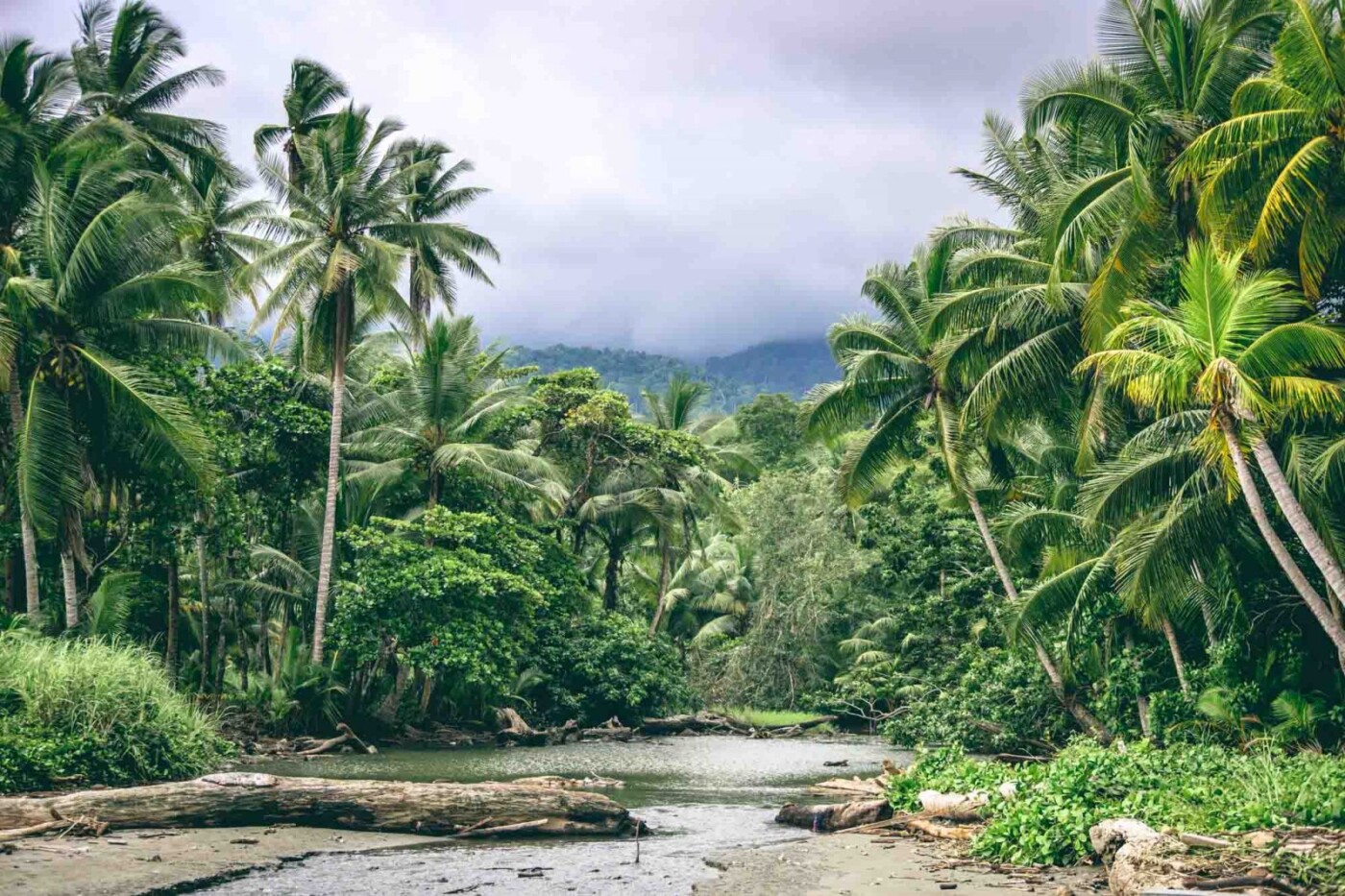
Traveling Soon? Here is a list of our favourite travel providers and accessories to help get you ready for your upcoming trip! Book Your Accommodation HERE Search for Great Tours HERE Get a Car Rental HERE Buy Travel Insurance HERE See our Favourite Camera Bag HERE Grab a Reusable Water Bottle HERE or a Filtration Straw HERE Order an eSim HERE
Environmental Impact
Costa Rica is well on its way to being the first carbon-neutral country in the world, as the country currently produces nearly 98 percent of its electricity from renewable resources . The country aims is to achieve 100% renewable electricity by 2030 with 70% of all buses and taxis expected to be electric by 2030, and full electrification projected for 2050.
Over 25% of land in Costa Rica is protected through national parks, wildlife refuges, and private reserves and forests cover more than 53% after many years of work to reverse decades of deforestation.

The country boasts an incredible diversity of bird, mammal, reptile and amphibian species. There are more than 25 national parks in Costa Rica , each with their own unique appeal.
Destinations like Manuel Antonio and Corcovado National Park in the Osa Peninsula have limited visitor numbers and implemented other guidelines to ensure that tourism has a minimal impact on the flora and fauna of these destinations. These and many other protected National Parks and reserves across the country put a strong emphasis on the environment by implementing responsible waste management and recycling initiatives.
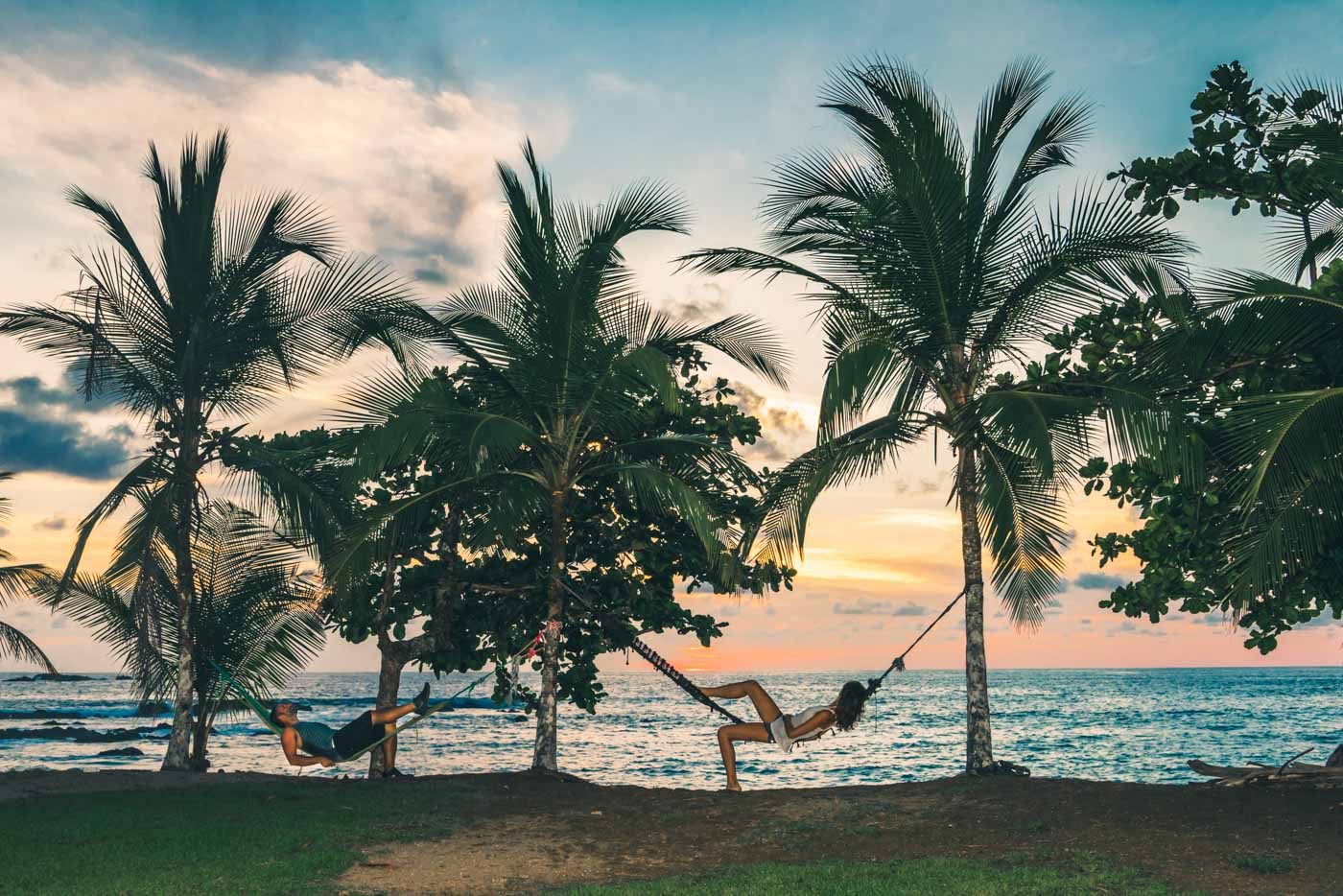
There are more than 25 national parks in Costa Rica , each with their own unique appeal. Each one is rigorously cared for and monitored, and best of all, your tourism dollars contribute to that . In addition, the country puts a strong emphasis on environmental efforts, such as recycling and responsible waste management.
Cultural Preservation
The cultural heritage of Costa Rica is preserved not only in museums, but also through community-based rural ecotourism , a variety of cultural activities, like music, dance, theatre, and cinema, as well as through the work of local artisans. Organizations such as the Ministry of Culture and Youth exist to lobby for the rights of indigenous people, protect national monuments, promote the diversity of cultural expression.
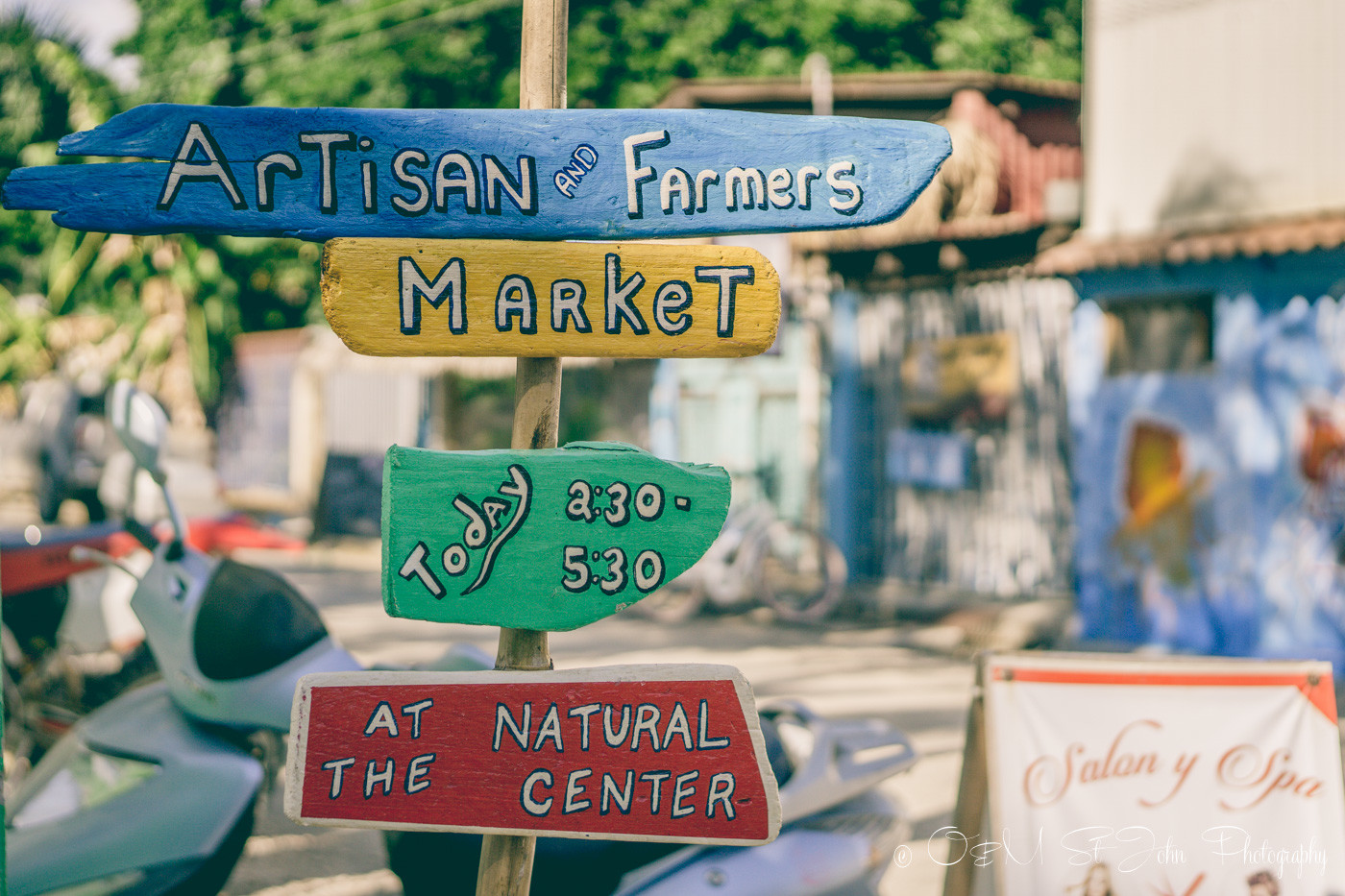
Economic Benefits
Tourism in Costa Rica accounts for the largest source of foreign income for the local economy. With more than 2 million tourists a year, the country has been able to use income generated through tourism initiatives to fund many conservation projects and provide much-needed income to locals.
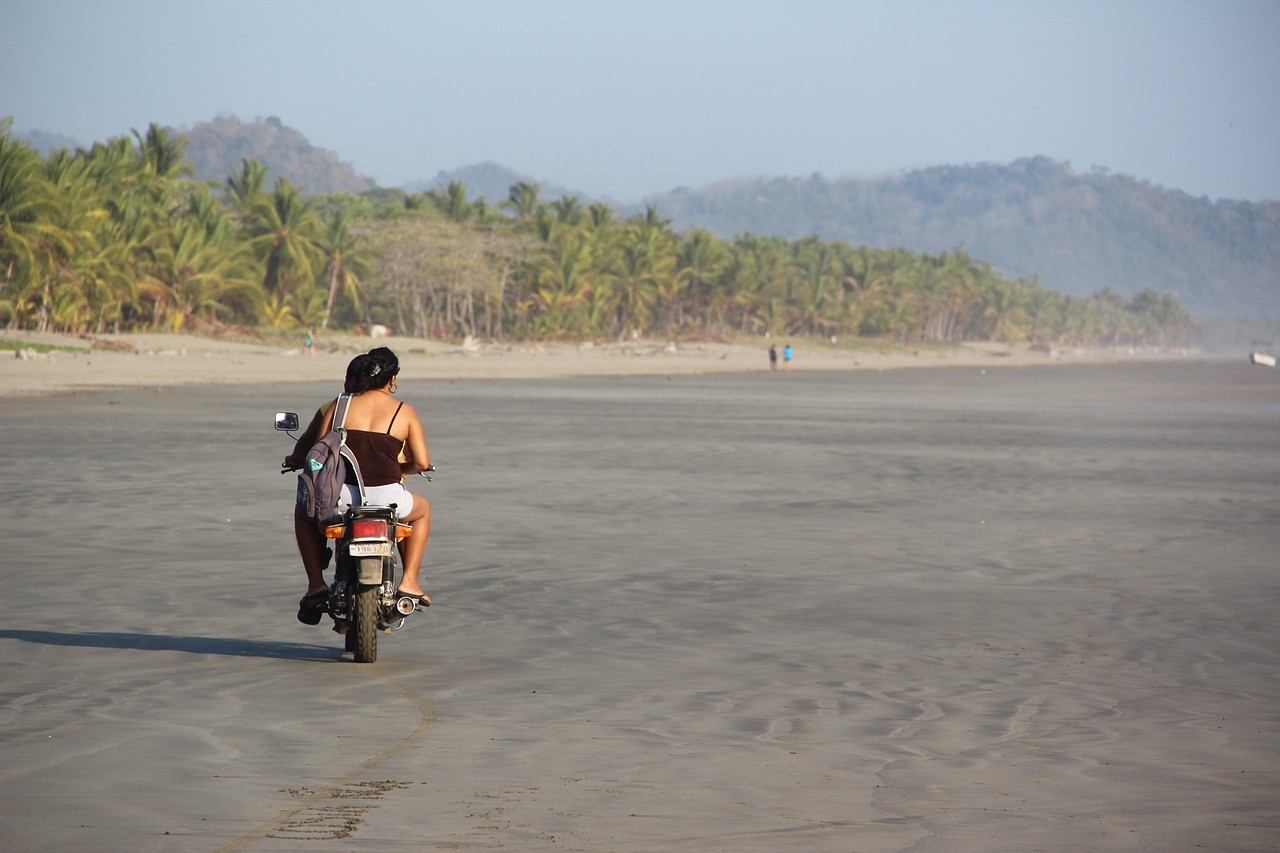
Certification for Sustainable Tourism Program
Certification for Sustainable Tourism (CST) is a government program that provides Green Leaf Certification to responsible businesses and ecotourism activities in Costa Rica. Tour operators, hotels, and businesses are rated on a variety of strict standards that come from both the Costa Rican government and the United Nations’ Sustainable Development Goals and receive a certification ranging from 1-5 Green Leaves.
The program has been in place since 1997 but has seen rapid expansion throughout the country over the last 5 years. Today, thousands of operators across the country are proudly displaying their Green Leaf certifications. Thanks to the CST Program, businesses like hotels and tour operators have an incentive to go green .
Eco Lodges and Sustainable Hotels
Eco Lodges are wildly popular in Costa Rica and for good reason. These accommodation options range from basic guesthouses to luxurious resorts that offer an added benefit of low environmental impact.
Eco Lodges like Lapa Rios located just outside of Corcovado National Park in the Osa Peninsula and other hotels from the Cayuga Collection have received worldwide recognition for their sustainability practices and their strive to sustain and enhance the environment, culture, heritage and the well-being of locals.

These hotels are coined as the “ultimate symbiosis of sustainability and luxury.” They’ve taken their passion for ecotourism in Costa Rica and beyond and used it as a way to not only get CST certified but also to gain international attention, receiving awards from National Geographic among others.
But it’s not just the exclusive luxury lodges that follow adhere to sustainable practices in their operations. Many smaller hotels, as well as a number of Costa Rica eco-resorts, have built their businesses in alignment with a sustainable operations model.
Sustainable Tour Operators
Like the eco-lodges, the best eco-tours in Costa Rica opt to adhere to high sustainability standards set forth by the CST. These tour operators consider the impact their business can have on the environment and the communities they operate in.
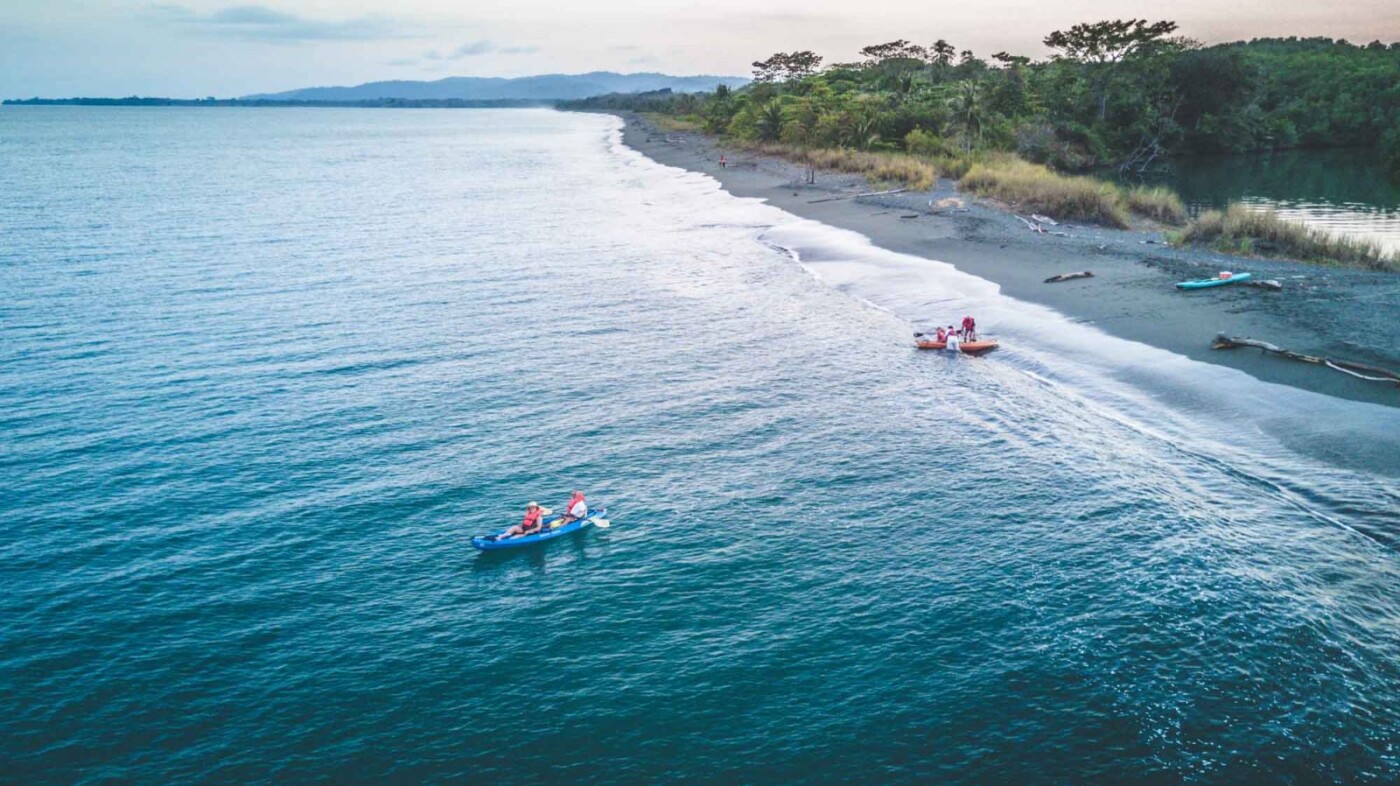
Some operators, such as Costa Rica Trails , have achieved Five Leaves Certification, the highest level of the CST , and are setting an example for other companies running Costa Rica eco-tours.
These companies follow sustainability measures, ensuring a low impact on the environment, a positive impact on the community, reduction of waste and pollution, and a focus on activities that support and highlight Costa Rican culture.
Blue Flag Ecological Program (Programa Bandera Azul Ecológica)
The Blue Flag Ecological Program is another great government initiative that aims to keep coastal beaches and waterways clean. Administered by the National Blue Flag Commission, this program awards Blue Flag certifications to beaches that achieve a 90% score on a number of criteria including water quality, waste disposal, sanitary facilities, signage, tourist safety, environmental education and involvement of the community in beach maintenance.
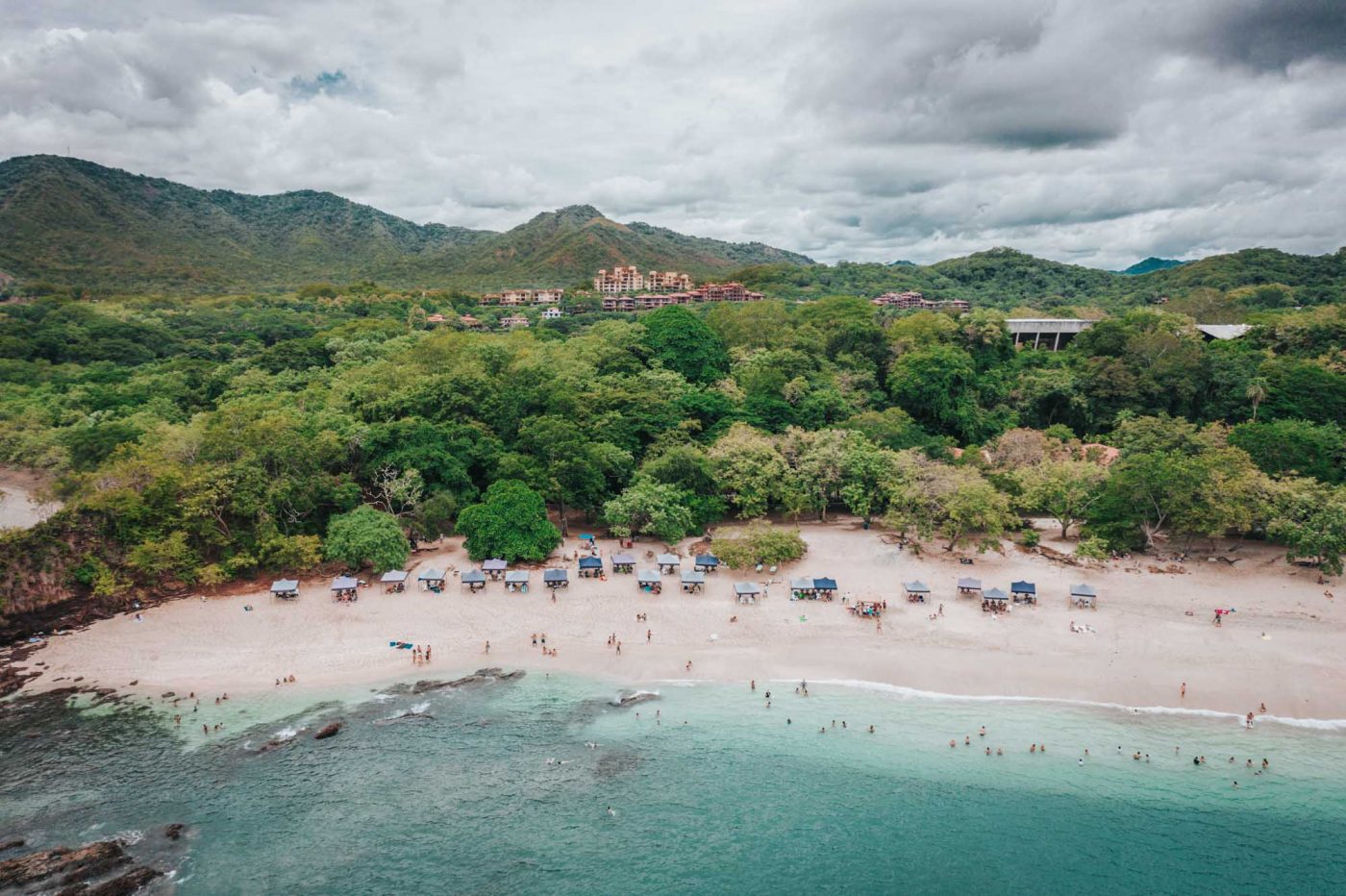
Today, over 100 beaches along the Caribbean Coast and Pacific Coast boast a Blue Flag certification including destinations like Playa Blanca in Puntarenas, Playa Santa Teresa and Playa Samara in Guanacaste and many others.
READ NEXT: Best Beaches in Costa Rica
Sustainable Travel Tips in Costa Rica
Not every visit to Costa Rica is guaranteed to be a sustainable experience. True ecotourism in Costa Rica is found away from popular tourist destinations, in places where one needs to give us some luxuries, get off the beaten path, connect with nature, appreciate the wildlife and the raw beauty of Costa Rica in Pura Vida style.
If you are planning a visit to Costa Rica and want to make sure that your vacation is an eco-conscious one, here are a few tips you can follow.
Get Off The Beaten Path
Sticking exclusively to Costa Rica’s top destination can cause environmental damage, crowding, and inflation in prices. Taking the path less traveled not only spreads out the environmental impact so that no one place is severely affected, but it also spreads out money so that other parts of the country can benefit from travelers’ dollars as well.
Costa Rica ecotourism destinations are lesser-known and include regions with great natural attractions, but often lack tourism infrastructure, like paved roads and an abundance of accommodation and restaurant options.
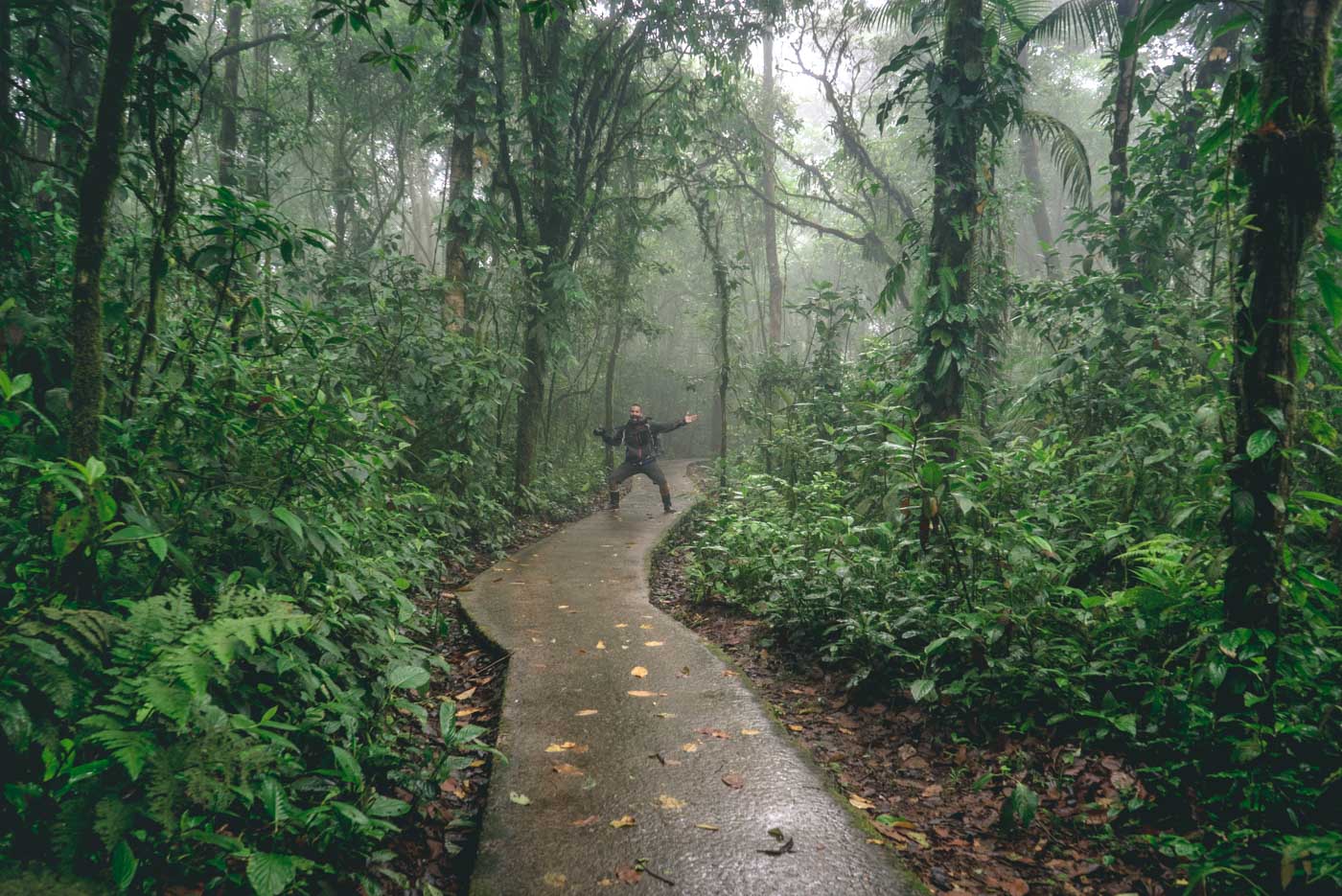
Stay in Eco Lodges
Staying in an eco lodge in Costa Rica is a wonderful way to travel sustainably. Although they can often be a bit pricey, you can sleep easy knowing the money is going to excellent sustainability initiatives that help the surrounding community.
READ NEXT: Best Places To Stay In Costa Rica
Or Locally Run B&Bs
If eco-luxe hotels are a bit above your budget, you’ll be pleased to know that Costa Rica has tons of nice B&Bs and homestays that are run by locals . Not only are they comfortable and offer an opportunity to make a positive impact on the nearby community, but they also allow for a unique experience getting to know the locals that run it.
For a sustainable approach to food while in Costa Rica, choose restaurants that commit to responsible sourcing of ingredients from local farms and local suppliers. Take it a step further by dining in restaurants that are run by locals and look for dishes that feature local ingredients, craft brews, and limit the use of single-use plastic in their operations.

Take Public Transport
Taking public transportation is a great way to cut down on your carbon footprint . It’s true, Costa Rica’s transport system isn’t the greatest, but it’s been slowly improving with time. Busses connect many of the major tourist destinations in Costa Rica and allow you to get around for a fraction of the price compared to renting your own car.
Planning to go off the beaten path and don’t have the time for lengthy bus rides and complicated connections? Consider using shuttles that cost a bit more but offer an easy way to get around the country.
READ NEXT: Best Carbon Offset Programs to Reduce Your Carbon Footprint
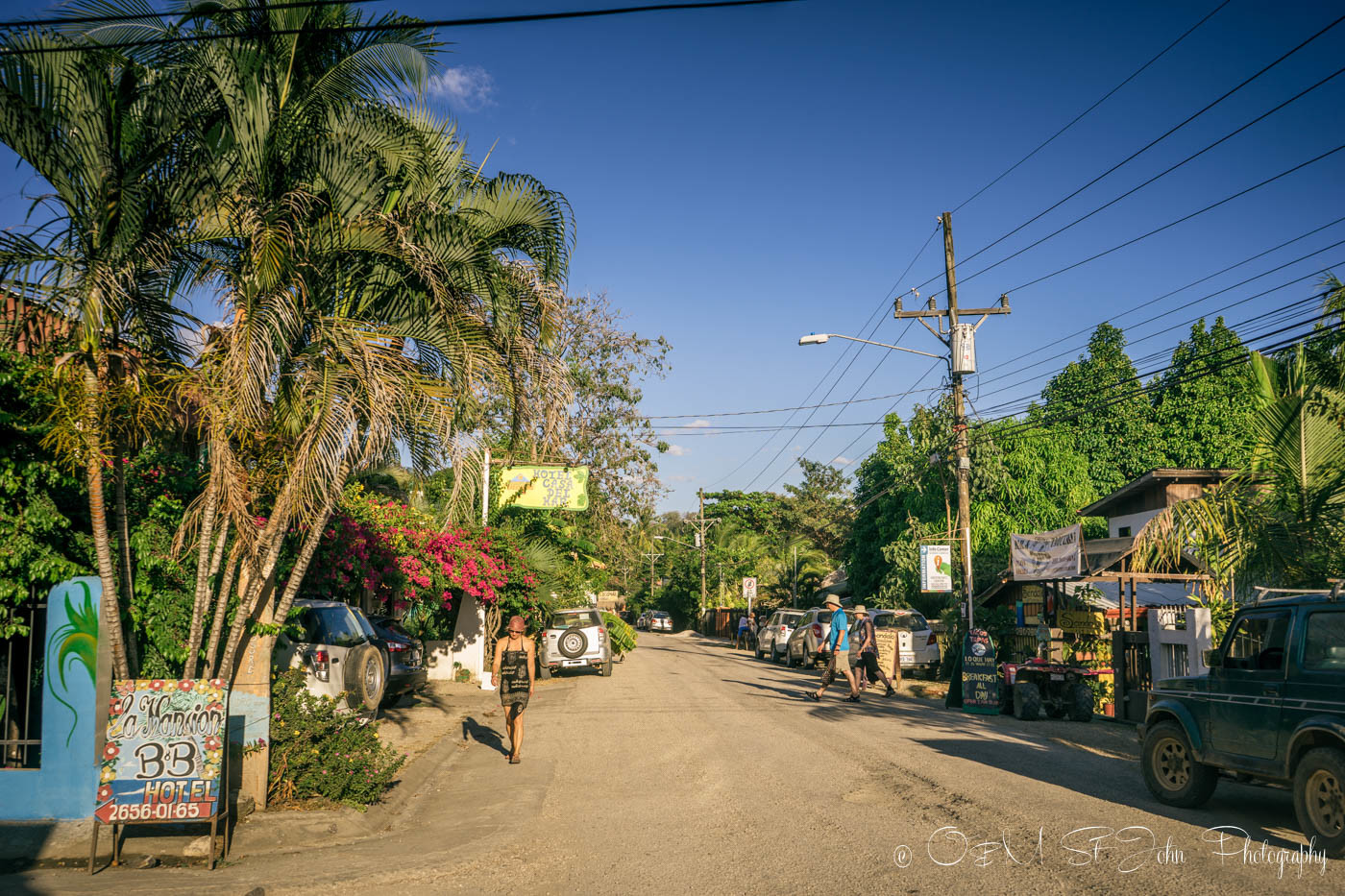
Take Nothing but Photos
Tourists are taking more and more of Costa Rican natural beauty home with them, especially from beaches such as Playa Conchal that are famous for their stunning shells.
No matter how beautiful the shells look, refrain from packing in your suitcase. And to discourage locals from doing the same, say no to buying jewelry made from shells.

Skip ATV Tours
ATV tours are sadly very popular in Costa Rica. They offer a thrilling ride but are rarely run in a responsible way. ATV rides often go off designated trails, trampling plant life, destroying fragile turtle nests on beaches across the country and releasing additional carbon into the air. If you want to get off the beaten path, consider exploring on your own two feet or even on horseback.
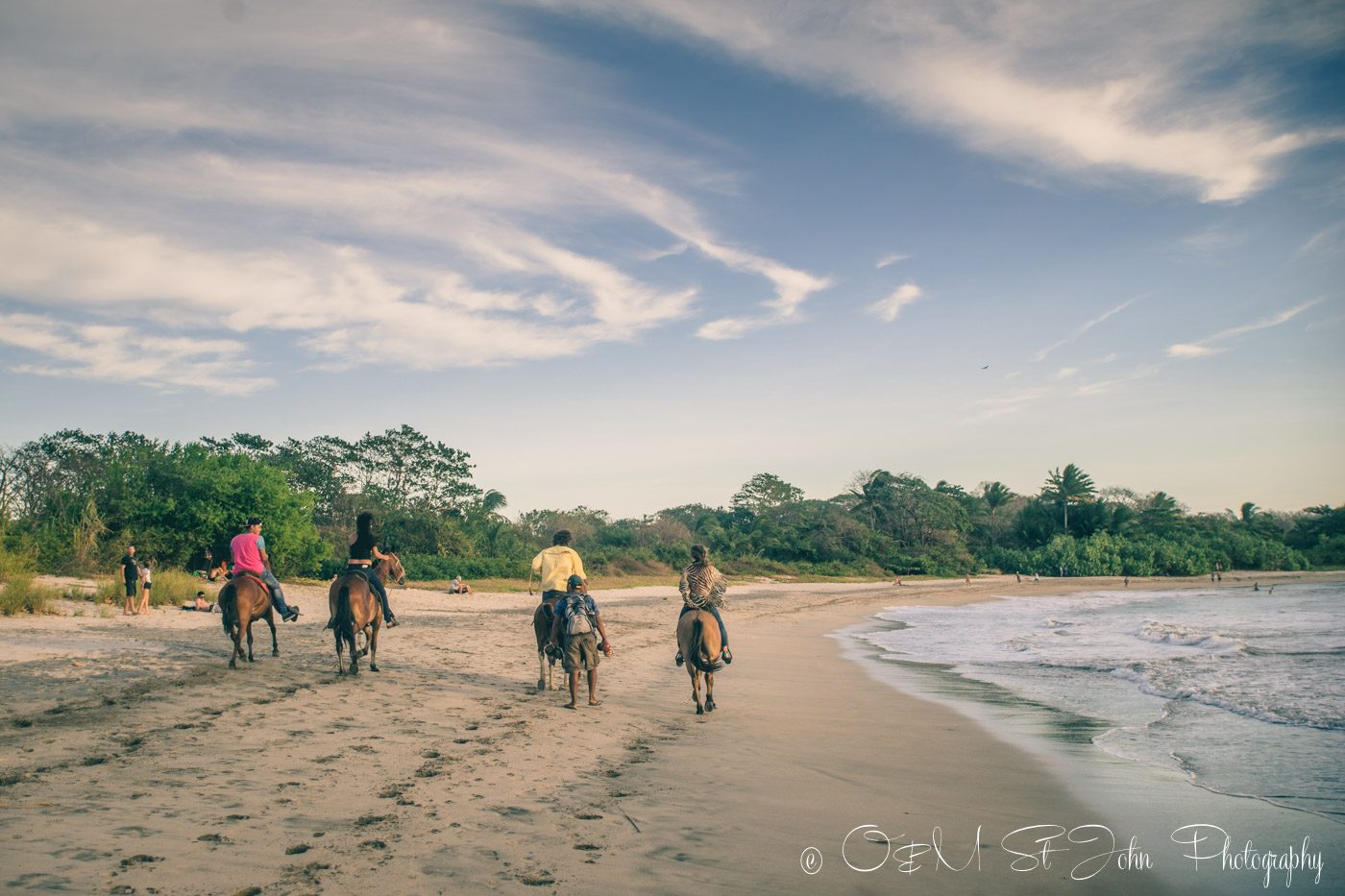
Respect Wildlife
You’ll often see tours in Costa Rica that allow you to pet sloths or monkeys, but these are unsustainable and can cause a lot of harm to the animals. Unless you are volunteering at a reputable wildlife sanctuary, refrain from touching the animals no matter how cute and playful they look.
Use Your Tourist Dollars to Support the Locals
Simple things, like buying local crafts or opting for a local tour guide rather than a foreign one, can make a huge difference. Make sure to use your tourist dollars wisely and support local experts and artisans whenever possible.
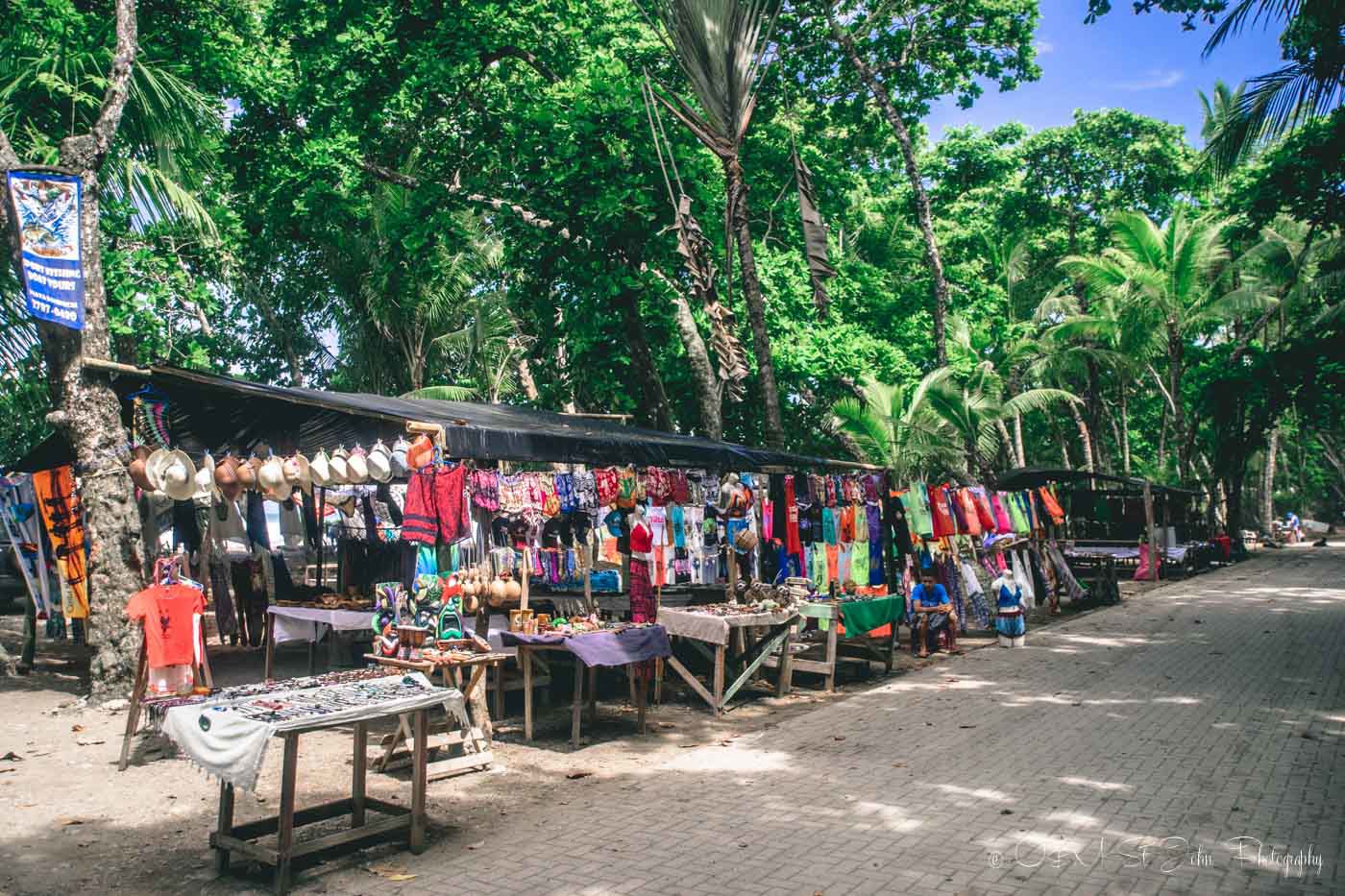
Costa Rica sustainable tourism is one of the best things the country has to offer. With sustainable initiatives like the Certification for Sustainable Tourism, nature conservation efforts, animal rehabilitation work, and more, the country is continuing to pave the way to a sustainable future.

If you consider yourself a responsible traveler and are looking for the next destination for eco travel, Costa Rica offers an excellent choice. When it comes to ecotourism, Costa Rica isn’t perfect, not by a long shot, but it’s one of the best sustainable countries in the world
About The Author
Oksana & Max St John
2 thoughts on “guide to ecotourism in costa rica: sustainable travel tips for every visitor”.
This is so thorough and helpful, I love it! Costa Rica is definitely a must for me. I’m looking at potentially joining the Peace Corps next year to do an environmental stewardship program, and Costa Rica would be one of my top picks.
That’s a great plan! Hope you get a chance to visit Costa Rica soon!
Leave a Comment Cancel Reply
Your email address will not be published. Required fields are marked *
This site uses Akismet to reduce spam. Learn how your comment data is processed .
Download Japan Trip Itinerary
Enter your name and email to get our Japan Trip brochure with more details about this trip in your inbox.
Join our 2025 Group Trips Pre-sale List
Be the first to know about NEW Trips and SPECIAL Offers!
Have 5 minutes to share more info? Fill out the Pre-Sale trip survey HERE
Interested in joining us in Japan?
Love the sound of this trip? Ready to book? Have some questions?
Send an inquiry and let's chat!
Leave your details below and be the first to get updates, special deals, and connect with us directly about this trip!
Reignite the Feminine Retreat
Love the idea of a women-only retreat in September 2024?
Help me decide where we should go!
Our women-only gatherings will be limited to 8-10 people, so leave your details below to add yourself to the waitlist.
We'll email you first to share all the details of the trip.
GET OUR FREE COSTA RICA PACKING LIST
After years of traveling in Costa Rica, we've figured out exactly what you need to pack for this diverse country!
Get our FREE CHECKLIST NOW!

Costa Rica Ecotourism: Destinations, Activities & More
When you think of Costa Rica, what comes to mind? If you live in the United States, Canada, or Europe, there’s a good chance it’s a form of ecotourism.
Whether you’re imagining secluded beaches, towering waterfalls , soaring macaws, or bubbling volcanic hot springs, Costa Rica’s identity as an ecotourism destination has been carefully cultivated. Costa Rica is incredibly beautiful and diverse, and its natural splendors are enjoyed by foreigners and locals alike.
Let’s explore the history of ecotourism in Costa Rica, and how you can best tailor your itinerary to take advantage of everything Costa Rica has to offer.

What is Ecotourism and Why is it Important to Costa Rica?
Ecotourism is “ tourism directed toward exotic, often threatened, natural environments, intended to support conservation efforts and observe wildlife. ” In other words, your visit to Costa Rica probably constitutes ecotourism, assuming you plan to visit natural attractions and hope to support their conservation.
Ecotourism is incredibly important to Costa Rica. Conservation and environmental stewardship have become part of the national identity, and tourism drives the country’s economy.
When and Why did Ecotourism Start in Costa Rica?
Costa Rica’s history as an ecotourism destination can tenuously be traced to 1963, when Cabo Blanco Absolute Nature Reserve on the Nicoya Peninsula became the country’s first major conservation area. But Cabo Blanco wasn’t created as a place for visiting – it was designed entirely to protect the threatened forest.
A more direct link to Costa Rica’s ecotourism boom occurred in 1978 when a BBC documentary of Monteverde caught the attention of birdwatchers in Britain and elsewhere. As a result, the number of people visiting Costa Rica for nature-related reasons began to increase.
In 1994, the movie “Endless Summer II” put Costa Rica on the map as a surfing hotspot . Realizing the importance of conservation for both economic and environmental gains, the Costa Rican government continued creating national parks and launched a hugely successful program that pays citizens to protect natural habitats.
Today, the Environment Ministry (MINAE) manages Costa Rica’s protected areas, while the Tourism Board (ICT) helps to shape the country’s global image as an ecotourism destination.
We won’t sugarcoat things: Costa Rica has plenty of work to do before it’s a truly “green” country. Poor waste management, an antiquated transport sector, and lax fishing regulations are three areas the country could certainly stand to improve.
At the same time, Costa Rica has managed to double its forest cover and has placed more than 25% of its land in protected areas — achievements that are worth celebrating.
What are the Top Ecotourism Destinations in Costa Rica?
Costa Rica’s small geographical size and an ever-growing number of national parks mean you’re never far from nature. Four destinations, in particular, have become hotbeds for ecotourism in Costa Rica:

Monteverde has only continued to grow in popularity since that BBC documentary. The protected cloud forest remains an excellent bird-watching destination and one of Costa Rica’s most beautiful destinations.

The breathtaking Arenal Volcano towers over the town of La Fortuna. Surrounded by rainforest and bordered by the country’s largest lake, Arenal is a postcard-worthy destination with countless ways to reconnect with nature.

A town built into the rainforest on the Nicoya Peninsula, Nosara has beautiful beaches, excellent surfing, and plenty of open-air yoga studios. It also borders Ostional, where thousands of sea turtles come ashore in one of the world’s most spectacular events, known as an arribada .

The large protected area on the Osa Peninsula is considered the jewel of Costa Rica’s national parks system. It protects big cats, several monkey species, sloths, tapirs, and more; in the rivers, you can spot sharks and caimans (and sometimes their unlucky prey). Corcovado isn’t for everyone – it’s tough to get to and less developed – but a worthwhile journey for true nature lovers.
What Ecotourism Activities are Available in Costa Rica?
Costa Rica offers a variety of ecotourism activities suited for travelers of all ages and abilities.
First things first: If you’re flying to Costa Rica from abroad, consider offsetting your carbon footprint. The Costa Rican government offers this service through its National Fund for Financing Forestry (FONAFIFO), meaning your payment helps expand the country’s forests.
Once you’re in Costa Rica, here are some ecotourism activities to consider:
Visit Costa Rica’s National Parks

Visit one of Costa Rica’s 30 national parks and enjoy a hike through the rainforest, a whale-watching trip, or a ride through Amazonian canals. Better yet, hire a guide: their expertise will help you truly appreciate the natural wonders that surround you.
Zipline and canopy

Thrill-seekers can soar through the rainforest on ziplines , or explore the canopy on hanging bridges. Either way, you’ll have a blast – all while quite literally getting a new perspective on nature.
Scuba and snorkel
Costa Rica’s biodiversity is as impressive underwater as it is on land. Bring a snorkel to experience it for yourself at Conchal or Cahuita or Cano Island , or book a scuba diving adventure to see rays, reef sharks, and massive schools of fish up close.

Yoga and Mindfulness
Connecting with yourself and with nature is a wonderful rejuvenation strategy during your Costa Rica vacation. Nosara and other Nicoya Peninsula towns are known for their yoga, but don’t be shy: No one will bat an eye if you’re doing a solo session on any of the country’s beautiful beaches.

Costa Rica is an Ecotourist’s Dream Trip
By experiencing the beauty Costa Rica has to offer, you’ll help to support the ongoing conservation of the country’s natural resources. What’s more, ecotourism is often the perfect antidote to the wear and tear of your daily routine. And it might lead to increased awareness and appreciation for nature that will spark changes in your life and shape your children’s perspectives, bettering the world for generations to come.
Contact us below to plan your Costa Rica Ecotourism vacation.
- Name: * First Name: Last Name:
- Your Message: Please tell us how we can help you plan a trip to Costa Rica. Our trips start at $1,725 per adult, which includes your lodging, in-country transportation, and many of your activities and meals.
- Name This field is for validation purposes and should be left unchanged.

John Rabenau has been working in the eco-tourism & adventure travel industry in Costa Rica since 2002. He has worked in a variety of capacities from Outdoor Educator & Principle Guide to Itinerary Design Manager & Business Owner for numerous organizations. He has grown Costa Rica Escapes into one of the most reputable Costa Rica travel agencies since its creation in 2006, hosting more than 5,000 people with custom vacation itineraries.
Mobile Lead Form
Want help planning a trip.
- Name: * First Name:
- Your Message: *
- EN - English
- PT - Portuguese
- ES - Spanish
- How it works
- Become a Host
- Download the app
Top Destinations
- United States
- United Kingdom
What type of experience are you looking for?
- Non-Profit School
- Permaculture project
- Eco Village
- Holistic Center
- Guest House
- How Worldpackers works

Learn from the most experienced travelers of the community
Traveling with worldpackers, planning and budgeting for travel, make a living while traveling as a lifestyle, travel with worldpackers.
- Using Worldpackers
- Work exchange
- Social impact
Plan your trip
- Women traveling
- Budget travel
- Solo travel
- Language learning
- Travel tips
- Get inspired
- Digital nomads
- Travel jobs
- Personal development
- Responsible travel
- Connect with nature
Top destinations
- South America
- Central America
- North America
- More destinations
- WP Life WP Life
- Exclusive discounts Discounts
- Latin America
The best of ecotourism in Costa Rica: places to visit and how to get involved
Get ready to embark on an exciting journey as we delve into the wonders of ecotourism in Costa Rica, a must-visit destination for nature enthusiasts and adventurers alike.
Worldpackers Worldpackers
Feb 19, 2024
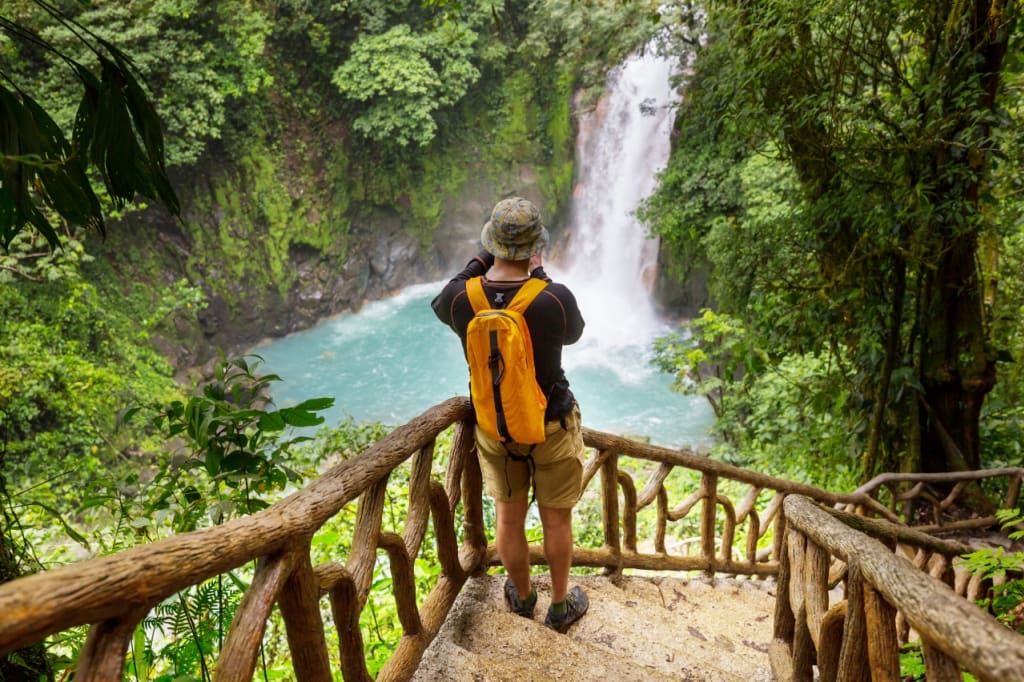
The constantly growing interest in ecotourism among travelers, and the economic benefits it brings, has led many destinations to understand that it can be a viable strategy for sustainable development , generating significant revenue with low impact, while also protecting their heritage.
With over 25% of its territory dedicated to national parks and various types of protected areas , Costa Rica is one of the countries that excels in this regard, becoming one of the first places that come to mind when speaking about examples of ecotourism .
Let's embark on an unforgettable journey through the sun-kissed beaches, majestic volcanoes, towering mountains, and lush tropical rainforests of this stunning country. Let's uncover the top destinations for ecotourism in Costa Rica , where the incredible biodiversity surrounds you at every turn.
These articles will help you planning: Backpacking Costa Rica: the ultimate guide and Where to go in Costa Rica: 15 amazing places .
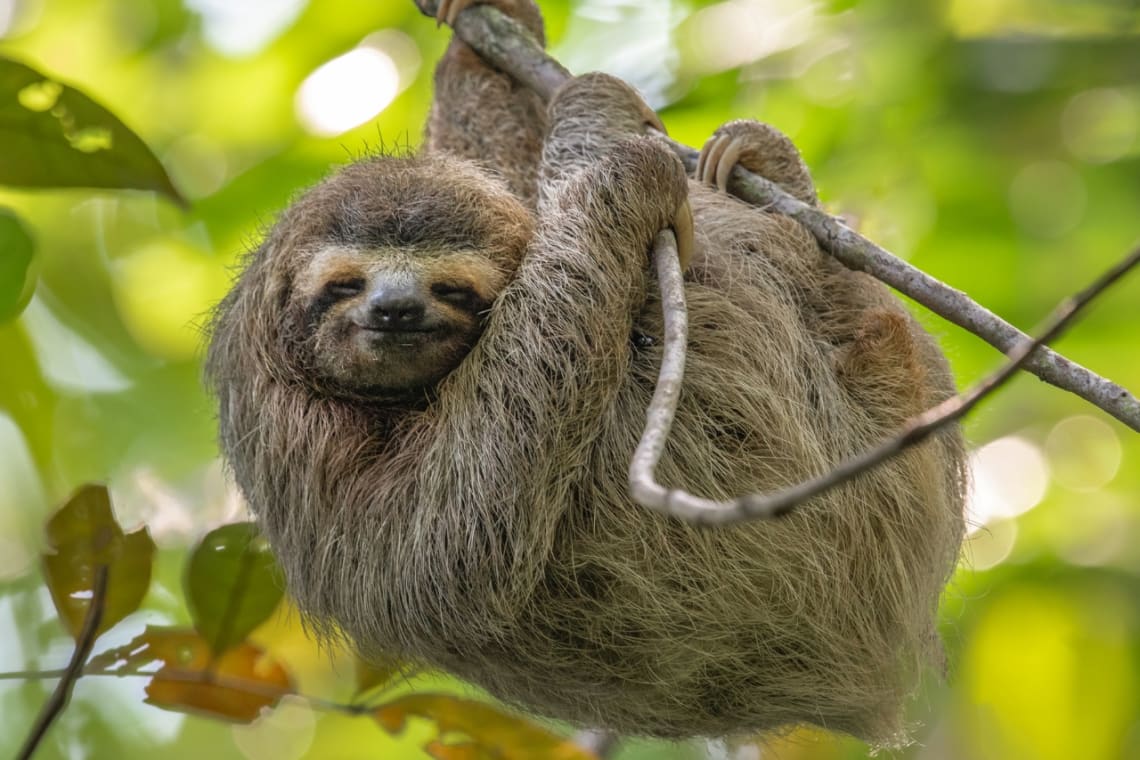
Ecotourism in Costa Rica
Ecotourism in Costa Rica has been developing for several years, making it currently one of the world's leading countries in this type of tourism.
The fundamental pillar of ecotourism is the observation and enjoyment of natural places while causing the least possible impact, bringing benefits to tourists, local communities, and the environment by promoting responsible travel . For this to be possible, it is essential to invest the revenue generated in conservation efforts.
Through the establishment of natural reserves equipped with tourist infrastructure, and the promotion of activities in nature such as hiking, captivating bird watching experiences, and non-invasive photographic safaris, Costa Rica fervently aims to showcase its unparalleled natural heritage as its main attraction .
Lots of countries have amazing natural wonders, but only a handful really take care of them or resist the urge to exploit them too much once they see the big bucks rolling in from tourism. This makes Costa Rica one of the best eco tourism destinations in the world.
Suggested reading: 7 tips to be a more conscious traveler and What is green travel and how can you travel sustainably .
Best destinations for ecotourism in Costa Rica
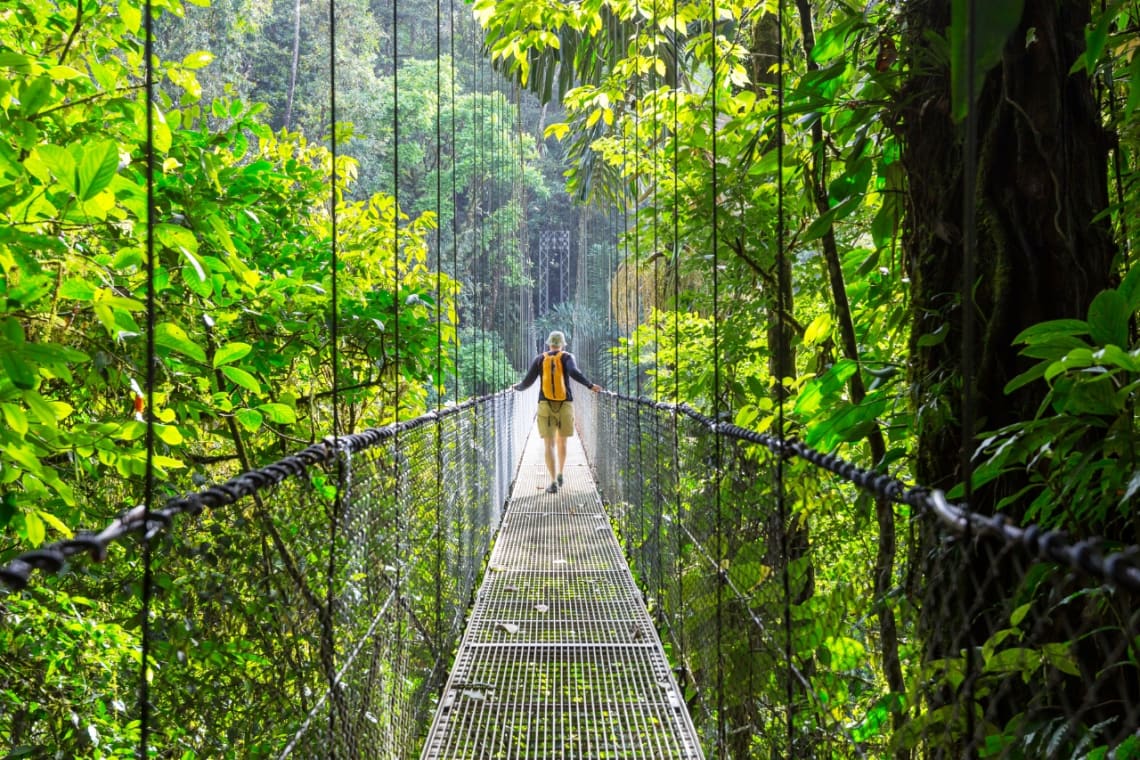
1. Corcovado National Park: A pristine paradise
If you're after a place that packs in more biodiversity per square foot than any other part of Costa Rica , Corcovado National Park is your go-to spot. This park isn't just big; it's an epic sprawl of untouched rainforests, secret beaches, and wildlife that seems to have missed the memo on human presence.
Wildlife watching through Corcovado feels like stepping into a nature documentary. You've got all four monkey species native to Costa Rica swinging above, while tapirs shyly tread the forest floor below. And let's not forget about the jaguars —though they'll probably forget about you since they're masters at staying out of sight.
The real magic happens when you camp overnight (with permission, folks). It's then that this untamed wilderness really comes alive. The sounds are something else— howler monkeys providing your wake-up call and insects conducting an orchestra only nature could compose.
Corcovado stands out for its commitment to eco-friendly tourism, serving as a shining example of how to blend adventure with the preservation of nature. They carefully controls the influx of tourists allowed to enter per day, and mandates that guides be present. To visit it, you have to make a reservation in advance, head to the sinac.go.cr website for all the official deets.
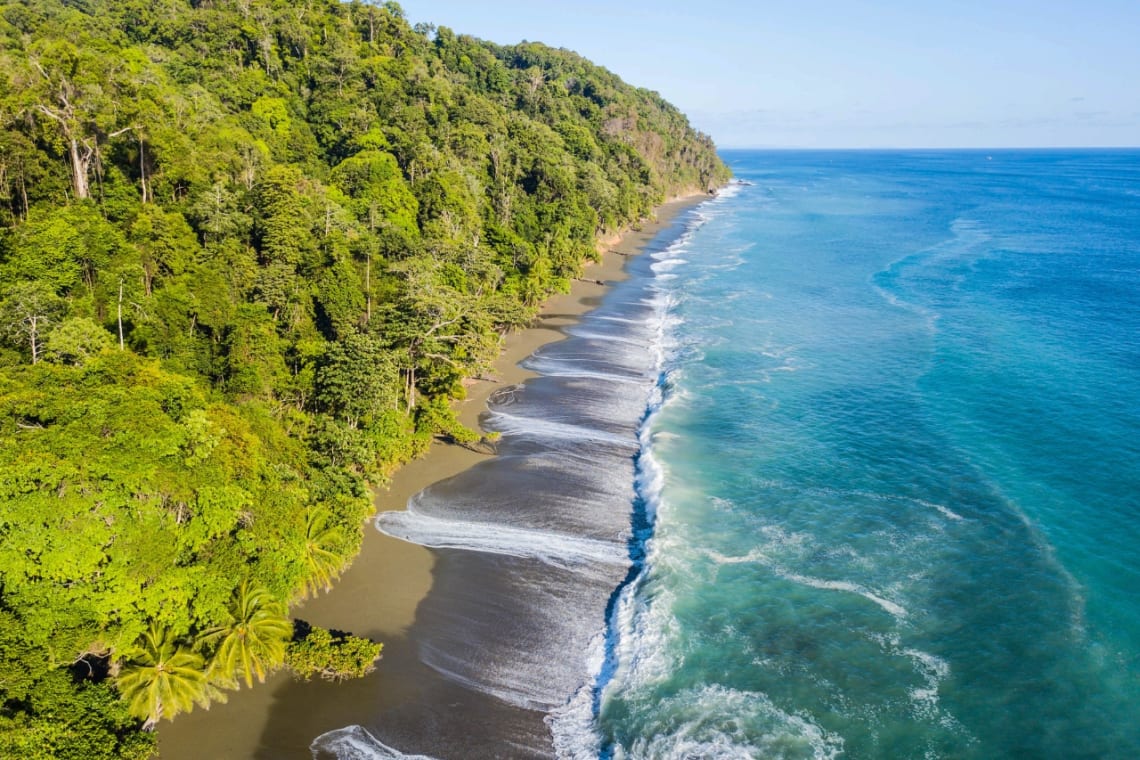
2. Monteverde Cloud Forest Biological Preserve: A misty enchantment
The Monteverde Cloud Forest emerges as a unique haven in the heart of Costa Rica, teeming with an astonishing array of over 2,500 flora species, alongside a rich tapestry of 100 mammals and upwards of 400 avian wonders. Here, quetzals flaunt their vibrant colors as they glide through mist-soaked canopies.
With over 400 bird species calling this cloud forest home, enthusiasts flock here hoping to catch sight of rarities such as the resplendent quetzal or the three-wattled bellbird . The symphony composed by these creatures at dawn is something straight outta paradise.
In line with Costa Rica's commitment to ecotourism, Monteverde operates under principles ensuring its preservation for generations yet unborn. Visitors play a critical role by adhering to guidelines aimed at minimizing human impact—like sticking to marked trails or opting for eco-friendly accommodations nearby.
This approach has allowed Monteverde not only to survive but thrive amid growing tourist interest. It serves as an inspiring example globally proving sustainable travel isn't just possible—it's essential.
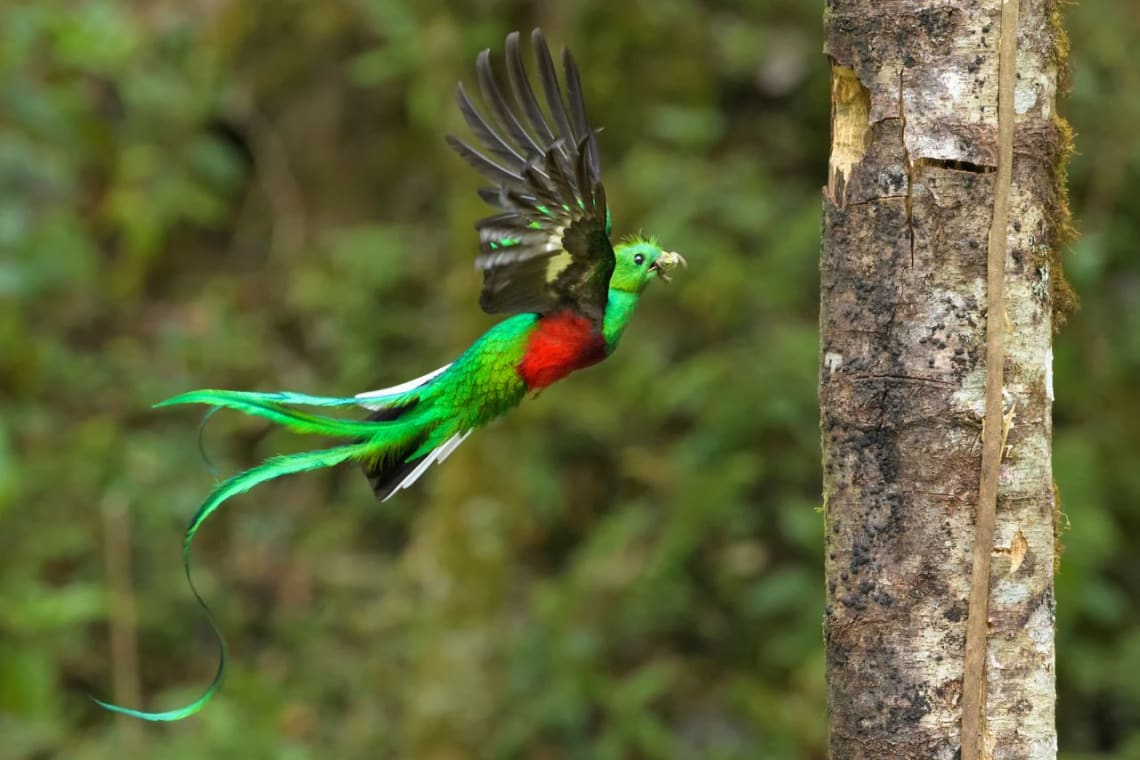
3. Arenal Volcano National Park: Nature's powerhouse
In Arenal Volcano National Park, each dawn unveils the majestic silhouette of its famed volcano amidst a symphony of tropical life. This park isn't just about its active centerpiece; it’s a gateway to adventure, relaxation, and ecological discovery, making a visit to this protected area one of the best things to do in Costa Rica .
In the park, a plethora of paths are available, each presenting its own challenge yet united in their picturesque allure. One such trail leads adventurers close enough to feel the warmth radiating from the volcano itself.
For those looking for more adrenaline-pumping activities, zip-lining and hanging bridges tours provide unparalleled vistas of the forest canopy below—home to howler monkeys , sloths , and countless bird species .
After a day filled with exploration and adventure, Arenal invites visitors to unwind in one of its many natural hot springs . These thermal waters, heated by geothermal energy from beneath the volcano offer an idyllic setting for relaxation amidst nature’s splendor.
The town of La Fortuna is the best base from where to explore Arenal Volcano National Park.
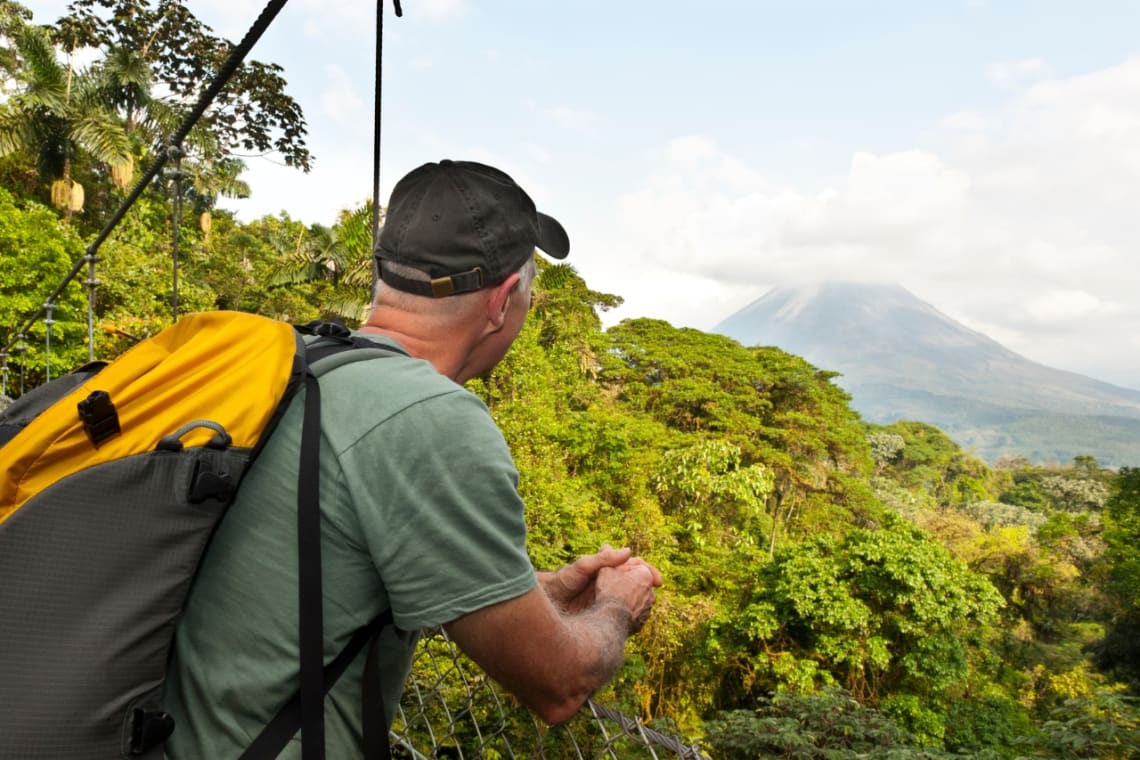
4. Manuel Antonio National Park: Where rainforest meets ocean
If you're dreaming of a place where lush green rainforests blend seamlessly with some of the best pristine sandy beaches in Costa Rica , then Manuel Antonio National Park is your paradise waiting to be discovered.
At this unique destination, the magic starts where the ocean's waves kiss tropical shores and extends deep into the jungle, home to some of nature’s most fascinating creatures.
The biodiversity here is off-the-charts spectacular; walking through trails you can spot sloths lazily hanging from trees or hear howler monkeys announcing their presence. And let's not forget about those vividly colored toucans .
Diving deeper—quite literally—into what makes Manuel Antonio special brings us to its underwater realm. Snorkeling here reveals a vibrant world beneath waves where coral reefs teem with life. From parrotfishes darting among corals to sea turtles gliding gracefully, every glance offers something mesmerizing.
This fusion of terrestrial marvels and marine beauty encapsulates what ecotourism in Costa Rica stands for: preserving natural wonders while letting us immerse ourselves fully in them.
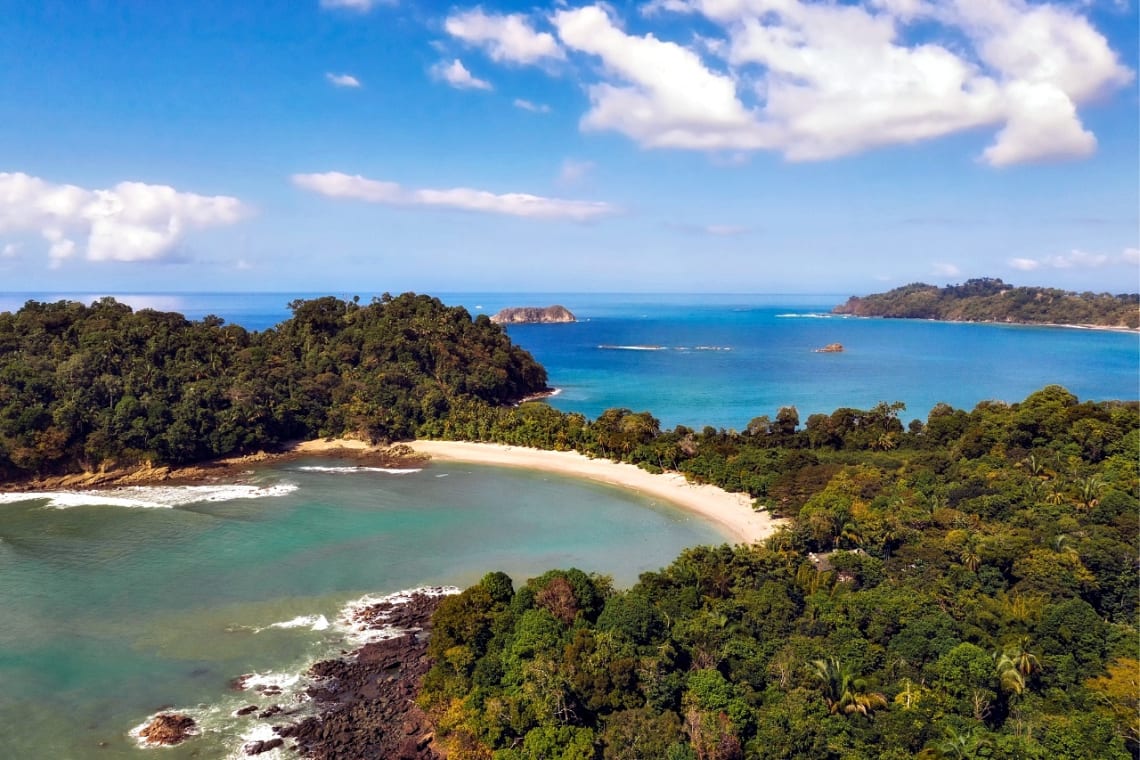
5. Ostional Mixed Wildlife Refuge: The miracle of life
In Ostional Mixed Wildlife Refuge, olive ridley sea turtles come ashore in droves, an event known as "arribada"," to lay their eggs.
This marvel isn't merely a breathtaking display; it's pivotal for the continuance of these aquatic beings. But why does this happen? Studies suggest that arribadas may reduce predation and increase hatchling success rates due to sheer numbers overwhelming predators.
Visiting Ostional during an arribada offers more than just breathtaking views; it's also about understanding conservation efforts firsthand. Local communities work closely with researchers and conservationists to protect these nesting sites while ensuring tourism doesn't disrupt this delicate natural process.
These mass nestings can involve tens or even hundreds of thousands of sea turtles , covering beaches as far as your eyes can see. By joining in on guided excursions, orchestrated by locals, tourists play a vital role in bolstering the community's conservation initiatives. Consult local resources for timing predictions since arribadas are tied closely to lunar cycles and other environmental factors.
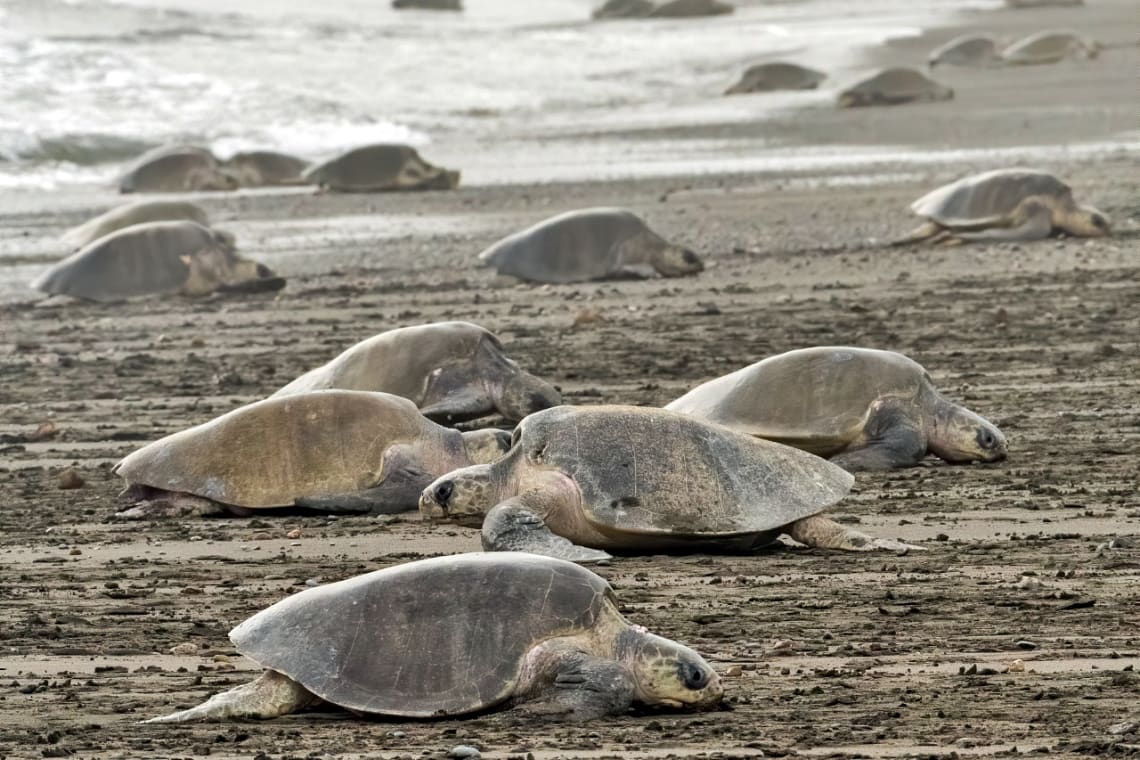
6. Tortuguero National Park: A canal-laced wilderness
This remote paradise in Costa Rica is only accessible by boat or plane , making it an adventure before you even arrive.
Dubbed "Region of Turtles," the park's moniker subtly nods to its renowned denizens, the turtles. It’s one of the world's premier nesting sites for green turtles . Every year from July to October , visitors can witness this miraculous event firsthand. You can also experience the magic of the nesting of leatherback turtles during the months of April and May.
But turtles are just part of the story. Winding through the thick jungle, a complex system of freshwater streams forms an oasis teeming with life that contends with the richest ecosystems globally.
Canoeing or kayaking through its serene canals lets you glide into heart-stopping encounters with wildlife like caimans , monkeys , and countless bird species without disturbing their natural habitat. With over 300 recorded bird species including rare finds like agami herons , kingfishers and endangered great green macaws ; binoculars will quickly become your best friend here.
Witnessing the landscape from this intimate angle not only unveils the pivotal role of preservation endeavors in Tortuguero but also highlights their essentiality in safeguarding turtles and sustaining ecological harmony throughout various habitats.
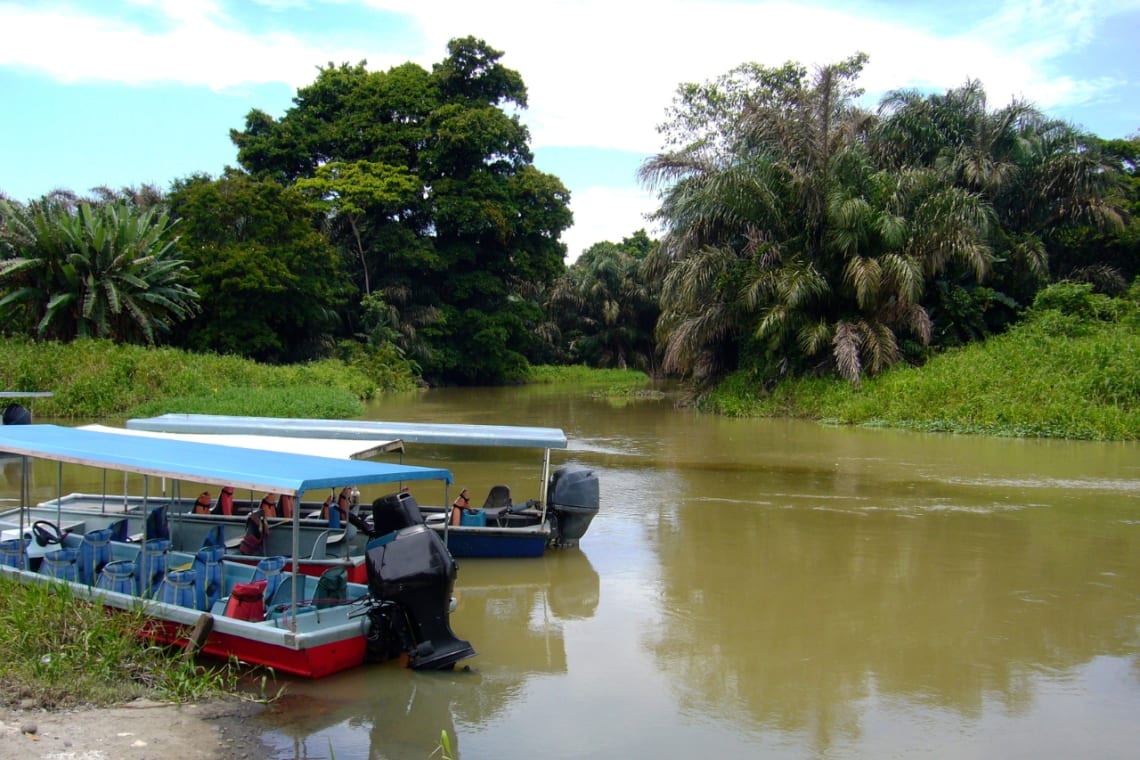
Volunteer in eco projects in Costa Rica
On the Worldpackers platform, you can find many of opportunities to volunteer in eco-friendly projects across Costa Rica .
Jumping into a environmental volunteering project is a chance to peek behind the curtain and see how these initiatives come to life. Plus, you'll pick up invaluable skills geared towards protecting our planet . Along the way, you'll connect with kindred spirits —both local hosts and fellow global volunteers— who share your passions and zest for making a difference.
And there's more: while you're at it, you'll be saving big bucks on your travels since accommodation on site is always included as a reward for your help, and oftentimes, you'll also score delicious meals and extra perks like fun, complimentary activities to join in on.
Talk about a win-win! So why wait? Dive in and start crafting those unforgettable experiences while leaving a positive footprint.
Check out these articles to know more about Worldpackers: What is a work exchange and how does it work? and Traveling with Worldpackers: your top questions answered .
These are some great examples of eco-volunteering opportunities in Costa Rica:
- If you're a social media whiz, here's your chance to lend a hand in spreading the word about the amazing work of the NGO Planet Conservation , dedicated to various sustainability projects. They're based in the vibrant community of Puerto Viejo. And if this doesn't quite fit your skill set, no worries! They've got a range of other roles up for grabs too.
- Aura Verde Nature Park is looking for enthusiastic volunteers who share their passion about the environment and biodiversity conservation through permaculture and art to join its team.
- Increase your spiritual awareness at this holistic center in Bijagua . Work 30 hours per week exchanging farming, gardening, and carpentry skills for a beautiful place to stay and vegan/vegetarian meals everyday.
- Spend some time living in Cahuita while helping out with the construction of an eco bed & breakfast in this beautiful location. They also have a small farm and animals.
- Embrace off-grid living on this eco-friendly organic farm located in Monteverde .
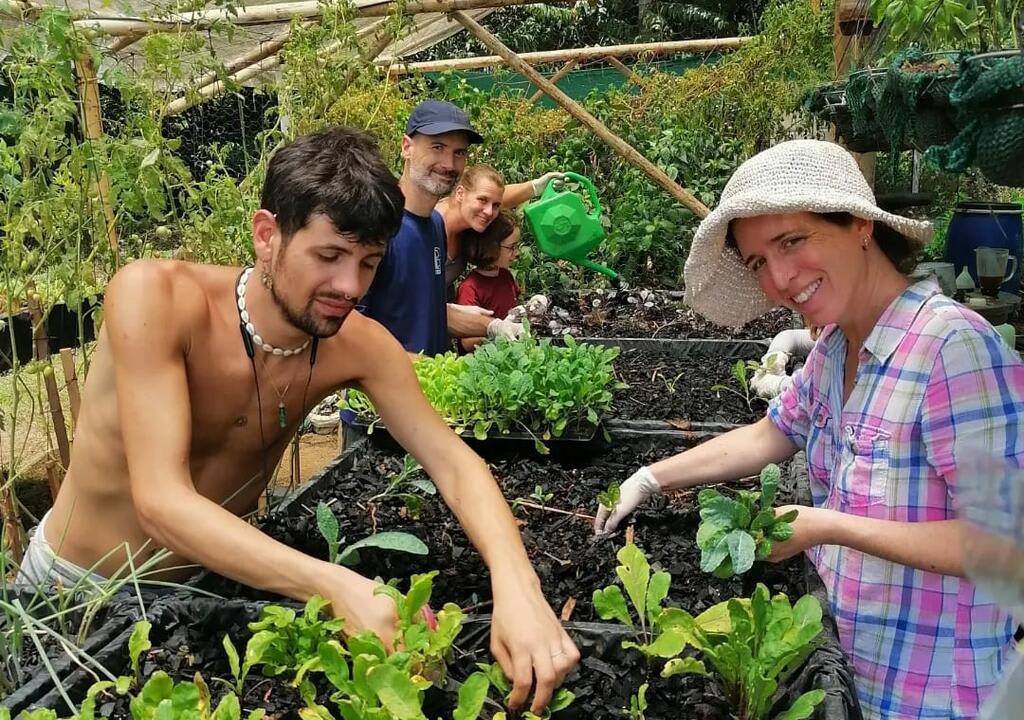
Did you like these ideas? Subscribe to the Worldpackers Community for free and start saving your favorite volunteer positions until you are ready to get verified.
Join the community!
Create a free Worldpackers account to discover volunteer experiences perfect for you and get access to exclusive travel discounts!
Worldpackers Editorial
Worldpackers.
The safest community to travel, volunteer and make a positive impact in +140 countries.
Be part of the Worldpackers Community
Already have an account, are you a host, leave your comment here.
Write here your questions and greetings to the author
More about this topic

Visiting Puerto Rico: currency and essential travel tips
Nicaragua: language and other cultural facts, exploring nicaraguan food: a "must-try" guide for your trip, how do worldpackers trips work.
As a member, you can contact as many hosts and travel safely as many times as you want.
Choose your plan to travel with Worldpackers as many times as you like.
Complete your profile, watch the video lessons in the Academy, and earn certificates to stand out to hosts.
Apply to as many positions as you like, and get in contact with our verified hosts.
If a host thinks you’re a good fit for their position, they’ll pre-approve you.
Get your documents and tickets ready for your volunteer trip.
Confirm your trip to enjoy all of the safety of Worldpackers.
Have a transformative experience and make a positive impact on the world.
If anything doesn’t go as planned with a host, count on the WP Safeguard and our highly responsive support team!
After volunteering, you and your host exchange reviews.
With positive reviews, you’ll stand out to hosts and get even more benefits.
- Sustainable
Ecotourism in Costa Rica
Everything is eco these days. Eco-friendly, eco-conscious, even eco-chic. The current trend towards all things eco has commercialized a prefix once packed with gritty optimism and turned it into a marketing tool. Given the proliferation of eco in business and the media, it’s easy to lose sight of its original meaning. Costa Rica is all about ecotourism—but what does that mean?
Ecotourism immerses travelers in natural areas – a rainforest or a coastal wetland, for example – with the goal of educating and imparting environmental awareness. It employs our sense of sight, smell, hearing, touch, and sometimes even taste to bring about a better understanding of the natural world. According to The International Ecotourism Society, ecotourism is defined as “responsible travel to natural areas that conserves the environment and improves the well-being of the local people.” Ecotourism unites conservation with local communities and incorporates important aspects of sustainable travel. It should minimize impact and provide a financial incentive for conservation.
Video: Costa Rica a Ecotourism
A Little History
Costa Rica’s push towards ecotourism began with the establishment of the Cabo Blanco National Reserve in 1963 and the first national parks in 1971. The trend continued and today the Costa Rican park system includes 70 entities and protects over 3,221,000 acres (1,303,492 ha). In addition to this, there are private reserves that are operated by nonprofits and environmental groups. That leaves Costa Rica with over 30 percent of its national territory marked for conservation—one of the highest ratios in the world.
Costa Rica also has the highest density of plant and animal species on Earth. As part of the Central American isthmus, Costa Rica is both interoceanic and intercontinental. Species from North and South America migrated here during its geological formation and many animals continue to pass through the country every year. Costa Rica’s tropical climate extends across extreme variations in altitude and covers countless ecosystems. The country has 20 life zones, 850 bird species, 237 mammal species, 1,260 tree species, 1,200 orchid species, and 361 reptile and amphibian species. This incredible biodiversity plays an important role in the country’s commitment to conservation.
Given Costa Rica’s natural riches, it’s no surprise that ecotourism is so popular. But it wasn’t always this way. During the first half of the 20th century Costa Rica was on the same track as other Central American countries. It cut down its forests and used the land for cattle and agriculture.
The creation of the park system changed all this. Travelers came to Costa Rica to experience nature and were willing to pay for it. This meant that conservation did not entail losing money.
Pros and Cons
The Costa Rican Tourism Institute (ICT) estimates that nearly half of all international visitors participate in some form of ecotourism—be it rafting a river, hiking in the rainforest, or snorkeling among coral reefs. As a result, ecotourism is responsible for both direct and indirect employment and has helped contribute to a reduction of poverty in Costa Rica.
Tourism is clearly a boon to the local economy. But critics argue that it’s impossible to truly conserve nature with so many people visiting fragile outdoor areas. People take a toll on plant and animal life through habitat destruction (accidental or intentional), noise pollution, and littering.
Balancing this impact is the main challenge facing ecotourism. Popular national parks already cap entrants. Monteverde, for example, does not allow more than 200 people inside the reserve at any given time. Manuel Antonio is closed on Mondays and does not allow more than 800 people into the park each day.
The Certificate for Sustainable Tourism (CST) is another step in the right direction. CST is a certification program that evaluates businesses for sustainable practices. The CST rates companies from 0 to 5 based upon their degree of environmental, social and economic involvement. Higher ratings are given to businesses that successfully balance the impact of their activities.
Business dogma assumes that there are winners and losers. Sustainability attempts to change this by eliminating the traditional losers of business – the environment, the local economy and culture. By focusing on factors that have traditionally been ignored, sustainability balances good business with good practice.
The CST program is voluntary but rigorous. Evidence is presented on over 100 practices – involving community, the environment, and labor – before a business is given a CST rating. These ratings help visitors to Costa Rica make educated purchasing decisions.
Video: Costa Rica Sustainable Practices
The Ecotourism Experience
Still, the question remains: How do you get a genuine ecotourism experience in Costa Rica? And what is it like?
First of all, get outside. “Wildlife is nearly everywhere in Costa Rica but some of the best places to go are rural and remote,” says Gema Cantillano, a vacation planner at Anywhere Costa Rica. She advises travelers to explore rural communities like San Gerardo de Dota, Orosí, and Sarapiquí. Monteverde is another good one, she says, even though the area has become increasingly popular during peak season. “By visiting rural areas, travelers decrease the foot traffic in Costa Rica’s better known parks, thereby spreading out and minimizing the impact.”
A huge number of Costa Rica’s national parks and reserves are not billed as “must do” activities. Nonetheless, these places offer unfiltered access to the Costa Rican outdoors. Some include the Cahuita National Park along the southern Caribbean coast, the Cabo Blanco Absolute Reserve on the Nicoya Peninsula, and the Braulio Carrillo National Park in the central highlands. If your goal is to experience nature without being elbow-to-elbow with other visitors, Costa Rica has you covered—just be willing to get your boots dirty and go off the beaten path.
Ecotourism activities (eco-activities) involve visits to protected areas (like national parks and private reserves), wildlife rescue centers, and family-run coffee plantations and organic farms. The fees that visitors pay to access these areas often goes towards maintaining, purchasing and conserving land, protecting endangered or threatened species, and educating local students on environmental issues.
Eco-activities, however, don’t just involve plodding along a trail or staring at obscure plants. You’ll raft down rivers and identify coastal birds. You’ll go whale watching in the Pacific Ocean and ride horses across the plains of the Central Valley. The options are as varied as the terrain.
The Costa Rican landscape is diverse—think rainforests, volcanoes, beaches, wetlands, and caves. All that in a state that’s roughly the size of West Virginia. Ecotourism exposes travelers to all this. It gets you outside and gives you perspective on the assorted complexion of life.
By their very nature these activities are educational. On a guided hike through the rainforest, for example, you might learn about the structure of the forest canopy or the medical uses for tropical plants. A guide may help you distinguish between the calls of a bellbird and toucan or point out the intricate root system of a balsa tree. During oceanic activities, you might learn about the migration patterns of humpback whales or the effect that climate change has on coral reefs. It’s literally impossible to not learn something during these activities.
Video: Regenerating Costa Rica Rainforests
That covers what you’ll do. How about where you’ll stay?
That’s where the ecolodge comes in. The main qualifier for an ecolodge is that they are close to nature and far from towns (or other hotels). Ecolodges are intentionally isolated—this gives travelers direct, uninterrupted access to the outdoors. Hiking trails extend from their property and wind through the surrounding forests, hillsides, and beaches. Guests need only look past the hammock on their porch to be in the midst of nature.
Many of the country’s first ecolodges were sustainable long before sustainability became a buzzword. These ecolodges operated in remote, off-the-grid locations that required them to optimize their efficiency and minimize their impact. They used solar and wind power because the area lacked electrical lines and grew their own food because there were no accessible supermarkets. They hired locals, the only workforce available, and became educators within the community, often training guides, receptionists and chefs.
Costa Rica’s original ecolodges paved the way for the ecolodges of today, which are scattered across much of the country. You can now find ecolodges deep in the Osa Peninsula and along the Caribbean coast. They spread around the base of the Tenorio Volcano and line the isolated shores of Mal País.
Ecolodges are usually less fancy and have fewer amenities than traditional resorts. That said, they still range from rustic to luxurious. Some offer basic bungalows while others sport rooms with air conditioning and wireless Internet. Due to their physical isolation, ecolodges always have a restaurant. The food is notoriously tasty and fresh—the vegetables are often organic and the seafood is usually caught locally. Most ecolodges also have a bar that offers a variety of beer, wine and liquor.
Ecolodges provide comfortable accommodations in places where there are few other (if any) options. They put you in contact with priceless natural areas and give you the tools – the guides, trails and equipment – to go exploring. Make no mistake though, ecolodges are not for everyone. Families with small children may find it impractical to be so isolated, and newlyweds may prefer something that is a bit more swanky.
However, if experiencing nature is one of your travel goals, prioritize it by staying at an ecolodge in a remote area. You’ll have to give up certain luxuries. You won’t be able to choose between fancy restaurants or enjoy a rowdy nightlife. Your Internet access will be slow and you may lack cell coverage. But the rewards are many and you’ll experience daily the raw beauty of Costa Rica.
Ready, Set, Go
Nearly one-third of Costa Rica is national parks and reserves. These areas cover everything from volcanoes to beaches and protect some 500,000 species of plants and animals—about 4 percent of the world’s total biodiversity. This positions Costa Rica to provide travelers with powerful outdoor experiences. Ecotourism aims to do this.
In ecotourism, you don’t just see the forest for the trees. You see it for the mammals and reptiles, insects and microbiota, soil structure and climatic patterns. Ecotourism helps you grasp the big by first understanding the small. As you explore Costa Rica, you’ll not only comprehend the particular nature of each landscape but also learn to recognize the interconnectedness of the entire environment.
When asked what advice she would give to travelers interested in ecotourism, Cantillano says, “Don’t be afraid to explore. Stay open-minded, go off the beaten path, and be ready for new experiences. If you do, you’ll discover the environmental and cultural beauty of our country.”
Anywhere Costa Rica offers travel planning assistance and free online travel guides for all of Costa Rica. We can help plan eco-vacations and have a comprehensive selection of activities and ecolodges.
Video: Plan a Journey Together
- Environment
Don't see what you're looking for?


20 Best Eco Resorts & Lodges in Costa Rica
Jackson Groves
Posted on Last updated: December 13, 2023
Categories HOTELS
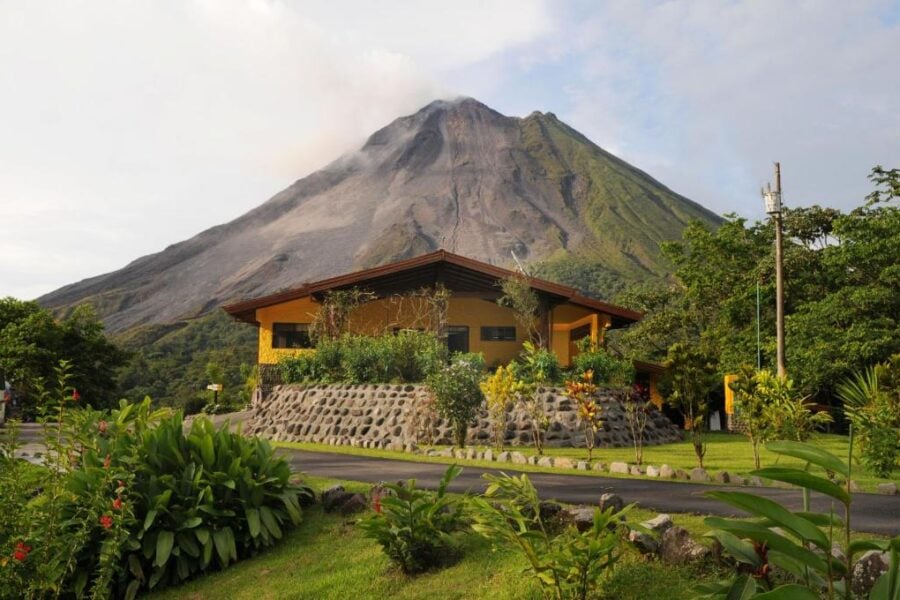
Boasting stunning natural beautey, Costa Rica has established itself as a premier eco-tourism destination. Lush rainforests teeming with exotic birds and wildlife cover expansive national parks. Miles of pristine Pacific and Atlantic coastline offer popular surfing spots and golden sand beaches. Costa Rica’s dedication to conservation allows visitors to experience intimate encounters with nature at environmentally friendly retreats and lodges across the country. From rustic tent camps and mountain eco-lodges to luxury beach resorts focused on sustainability, Costa Rica offers diverse accommodation options embedded in the surrounding landscape. Join me as we explore 20 top eco-resorts in Costa Rica, showcasing the country’s magnificent landscapes and conservation success.
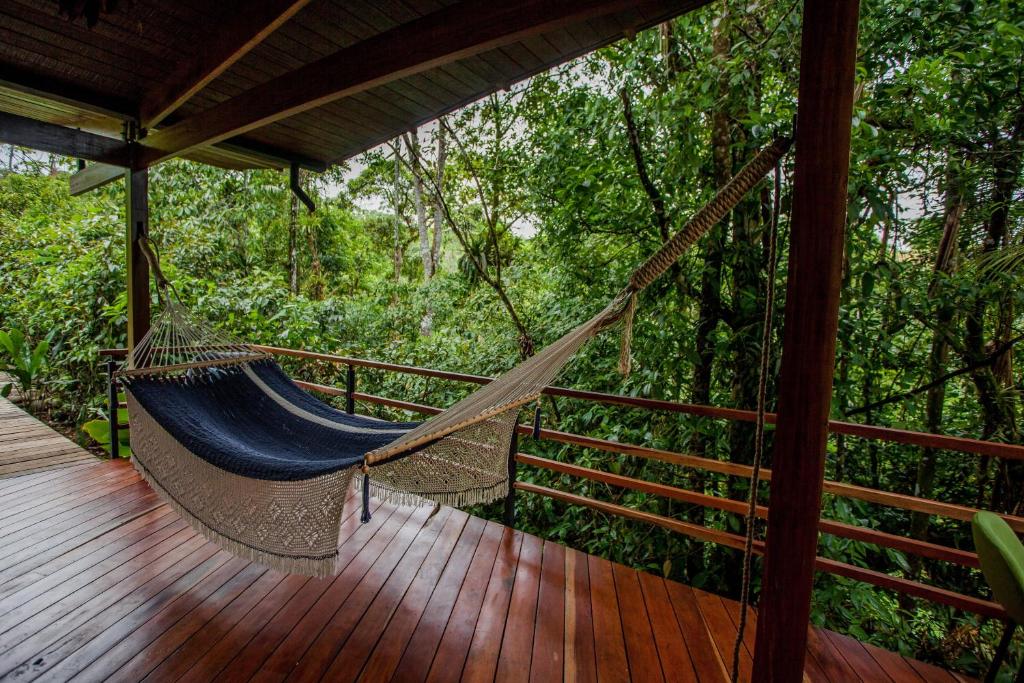
Table of Contents
Placing you amidst the very essence of Costa Rica’s renowned attractions, eco-lodges provide a nature-centric escape while allowing you to actively contribute to environmental conservation. To streamline your decision-making, I’ve curated a list of 20 eco-resorts in Costa Rica, making it easier for you to choose your ideal destination.
My personal favorites include Arenal Observatory Lodge & Trail , notable for its on-site bird sanctuary, and Ecolirios Boutique Hotel and Spa , renowned for the breathtaking views it provides.
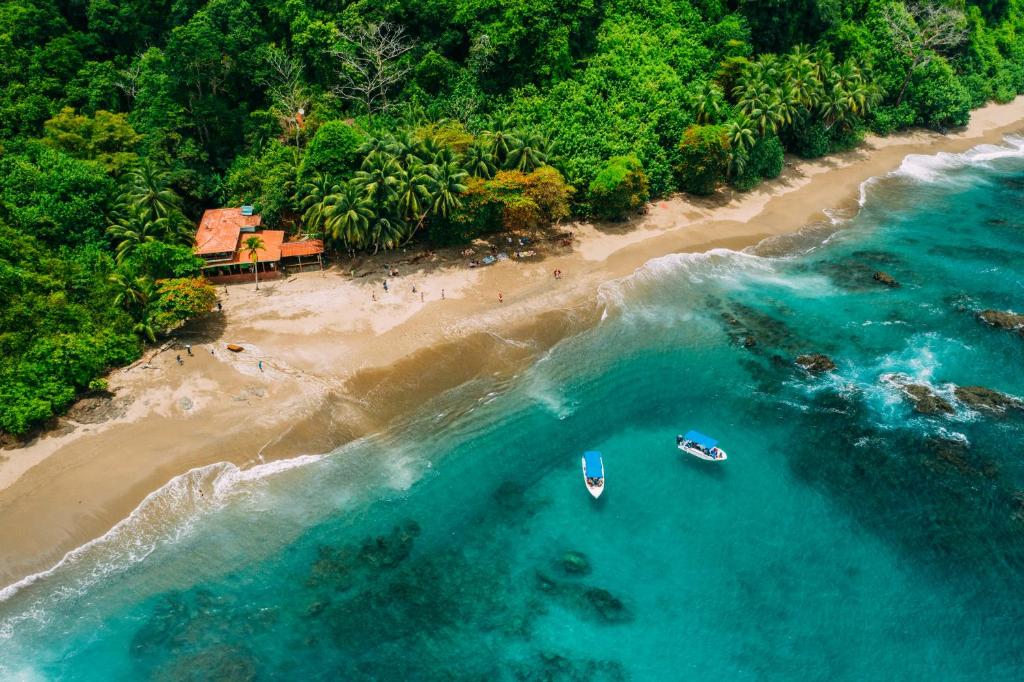
3 Best Eco Resorts & Lodges in Costa Rica
Short on time? Discover my top three choices for eco-resorts and lodges in Costa Rica, where you’ll find not only comfort but also the epitome of relaxation.
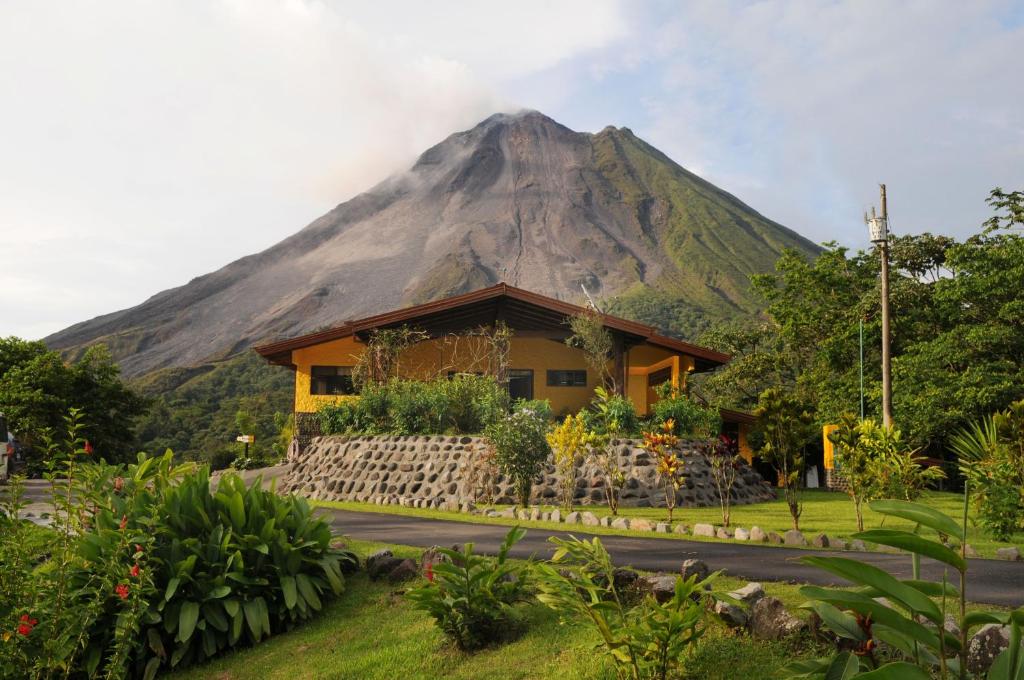
Arenal Observatory Lodge & Trails
- Outdoor swimming pool
- Mountain view
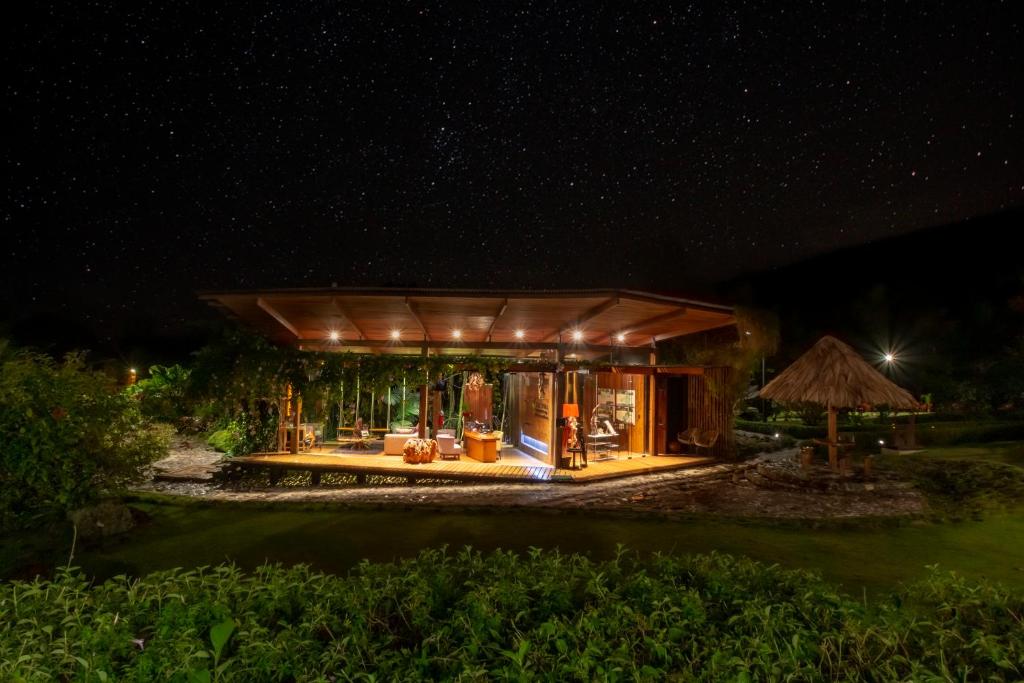
Ecolirios Boutique Hotel and Spa
- Great views
- Warm hospitality
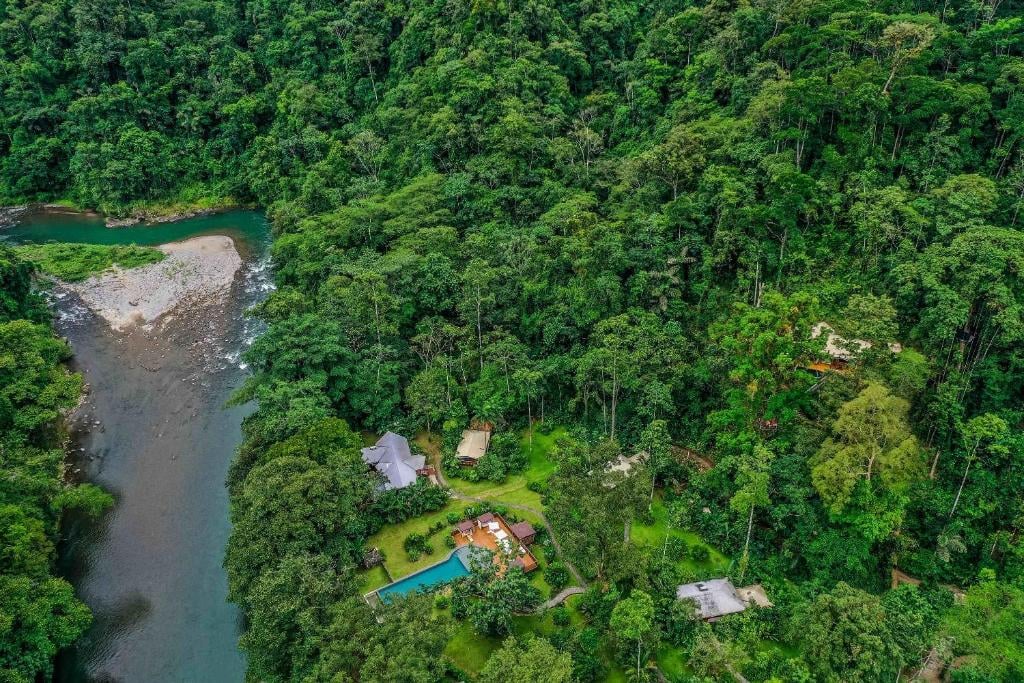
Pacuare Lodge by Böëna
- Stunning Views
ACCOMMODATION COMPARISON TABLE
Let’s take a closer look at the starting prices for these remarkable eco resorts and lodges in Costa Rica. Keep in mind that resort prices are subject to fluctuations and can vary based on factors like your travel date, chosen room category, and the number of guests, among other considerations.

Lapa Rios Lodge by Böëna
Nestled within a 1000-acre private nature reserve in Costa Rica’s untamed Osa Peninsula, Lapa Rios Lodge offers an immersive experience in the last remaining lowland tropical rainforest. With 17 private bungalows perched along ridges overlooking the meeting point of Golfo Dulce and the Pacific Ocean, this lodge provides an outdoor pool and captivating sea views.
Embracing a sustainable philosophy, Lapa Rios reflects its commitment through low-impact construction, the use of renewable materials, and the promotion of local biodegradable products. The lodge’s dedication extends to staff education, community development, and the preservation of rainforests, ensuring a harmonious blend of luxury and eco-conscious practices. No wonder, this accommodation is one the best eco-resorts in Costa Rica.
Click Here to check the current rates and availability for Lapa Rios Lodge .

Lapa Rios Lodge
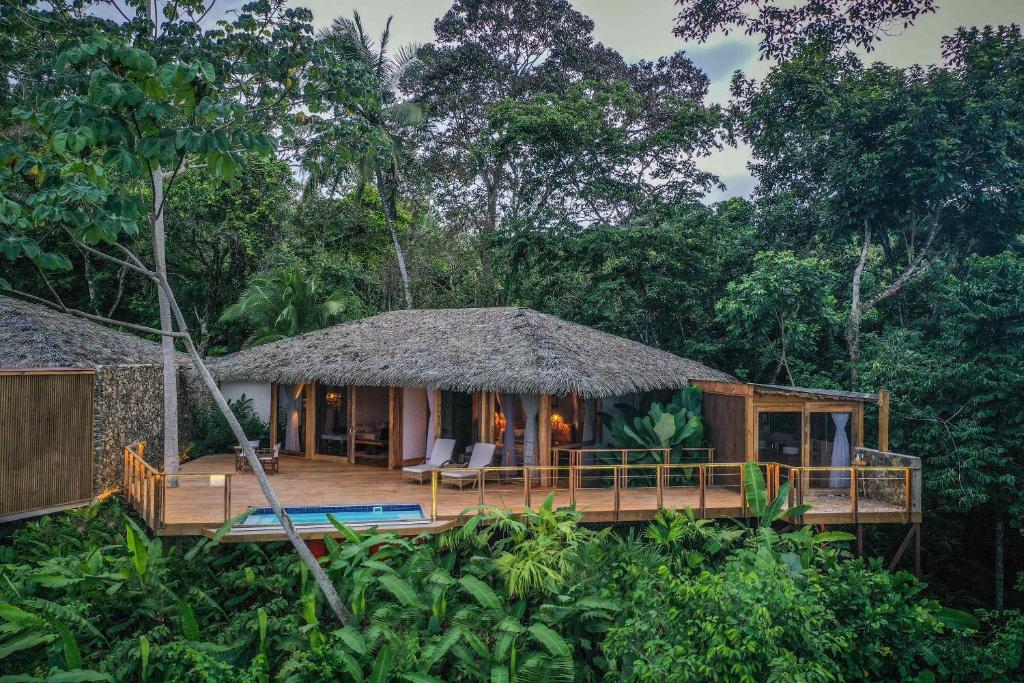
Nayara Tented Camp
Overlooking a lush garden, Nayara Tented Camp in Fortuna features an infinity pool and sustainable tent accommodations, situated 9.3 km from La Fortuna Waterfall and 2.9 km from Kalambu Hot Springs. The air-conditioned tents offer a sun terrace, with a family-friendly restaurant serving delicious cuisine for dinner and lunch. Emphasizing wellness, the luxury tent provides amenities like a sauna, hot tub, and yoga classes, while guests can also enjoy walking tours and the surrounding garden.
Elevated on stilts with ample space for tree planting, Nayara Tented Camp prioritizes environmental sustainability, becoming one of the leading eco-lodges in Costa Rica. It actively engages in reforestation efforts with Arenal National Park and serves as a sanctuary for sloths, showcasing a holistic commitment to environmental preservation.
Click Here to check the current rates and availability for Nayara Tented Camp .
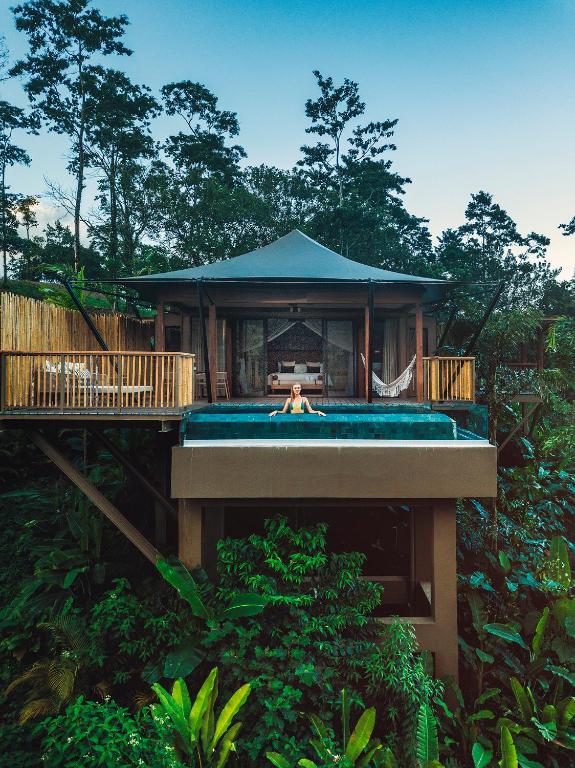
Nayara Tented Camp
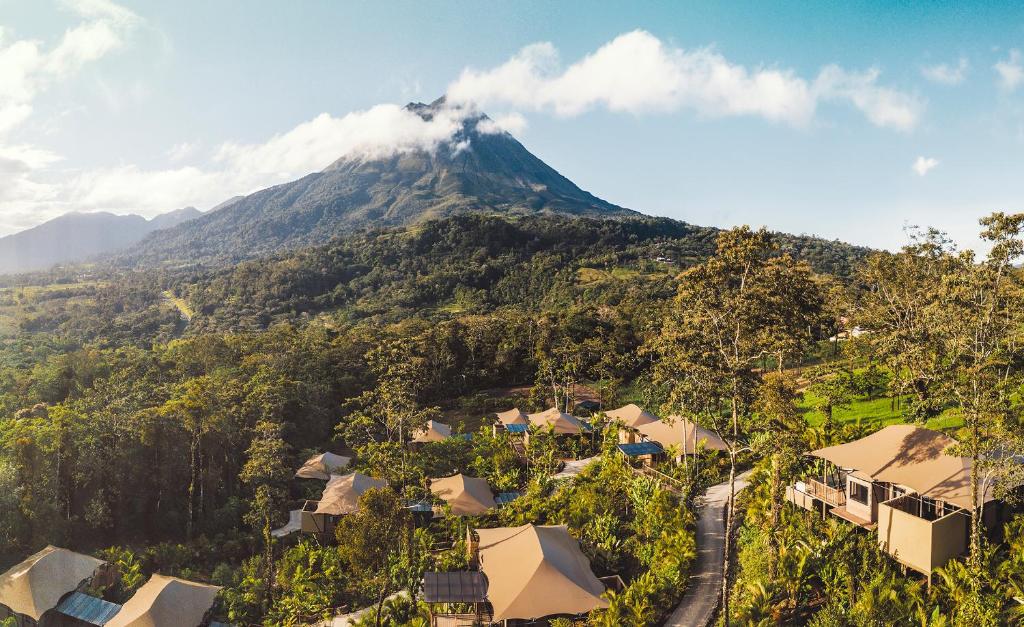
Arenas Del Mar
Located in Manuel Antonio, Arenas Del Mar Beachfront & Rainforest Resort, a distinguished member of the Cayuga Collection, boasts a seasonal outdoor pool, garden, bar, and shared lounge. The air-conditioned units are well-equipped with flat-screen TVs, coffee machines, baths, and desks, complemented by spacious wardrobes. Guests can savor a continental breakfast and relax on the terrace provided by Arenas del Mar Beachfront. Cycling enthusiasts can explore the popular nearby area, and car hire is available on-site.
Arenas Del Mar has set a remarkable precedent as the first upscale hotel in Costa Rica to achieve a perfect score in the Sustainable Tourism Certification program, underscoring its commitment to sustainable practices. As a carbon-neutral property, it demonstrates a steadfast dedication to minimizing environmental impact, with the resort meticulously built around the existing rainforest, minimizing tree removal. Notably, the two on-site restaurants prioritize local, organic food, championing sustainable agriculture and reducing the carbon footprint associated with food sourcing. The resort’s daily sustainability initiatives, encompassing renewable energy sources and effective waste management, collectively foster an eco-friendly atmosphere.
Click Here to check the current rates and availability for Arenas Del Mar .

Arenas Del Mar
- Private beach area
- Great amenities

Pacuare Lodge by Böëna
Nestled in Bajo Tigre, Pacuare Lodge by Böëna is an eco-conscious retreat with captivating river views. Offering a range of amenities, this lodge redefines hospitality with a restaurant, concierge service, bar, garden, outdoor pool, and terrace. Just 49 km from Universidad EARTH, the lodge skips traditional drives, offering an exciting rafting trip that winds through rainforest-clad river banks—an enchanting introduction to your stay.
Pacuare Lodge is committed to sustainable travel, with initiatives like natural ventilation, a one-time conservation fee, and a ban on plastic bottles. Hydroelectric turbines and solar panels provide clean energy, while on-site cultivation supplies the lodge’s culinary delights. Actively engaged in wildlife conservation projects, Pacuare Lodge partners with Costa Rican universities and nonprofits. The lodge also collaborates with local communities to enhance basic services and livelihoods. All these advantages make this accommodation one of the finest eco-resorts in Costa Rica.
Click Here to check the current rates and availability for Pacuare Lodge by Böëna .

SCP Corcovado Wilderness Lodge
Nestled in San Pedrillo, a mere 70 meters from the enchanting San Pedrillo Beach, SCP Corcovado Wilderness Lodge beckons with a serene escape. This 4-star haven boasts a garden, terrace, and a restaurant that caters to discerning guests. Room service and a welcoming bar enhance the overall experience. The lodge offers a range of accommodations, some with a delightful sea view.
Embracing a rustic ambiance, SCP Corcovado Wilderness Lodge is committed to ecotourism. The lodge prioritizes sustainability by incorporating eco-friendly materials, implementing waste management, water and energy-saving systems, and exclusively using organic and biodegradable products. This dedication reflects a genuine commitment to safeguarding the national heritage. For those seeking an immersive experience, the lodge offers animal-friendly tours, allowing guests to connect with nature in a responsible and respectful manner. It’s no wonder the accommodation is one of the best eco-lodges in Costa Rica.
Click Here to check the current rates and availability for SCP Corcovado Wilderness Lodge .

SCP Corcovado Wilderness Lodge
- Swimming Pool

Arenal Observatory Lodge & Trails
Nestled within the Arenal Conservation Area, Arenal Observatory Lodge & Trails offers an exclusive retreat surrounded by 860 acres of tropical rainforest. Boasting an on-site lake, swimming pool, sun terrace, and games room, this eco-friendly lodge is just 2.7 km away from the majestic Arenal Volcano. Tropical-themed rooms with wooden finishes and furnished terraces provide stunning views of the garden and Arenal Volcano. The on-site restaurant serves a delectable array of international and local cuisine for breakfast, lunch, and dinner, complemented by a bar for refreshing drinks. Guests enjoy a guided morning walk and a breakfast buffet, included with their stay.
The lodge features a bird sanctuary housing around 500 bird species. Recommended activities range from tours of Arenal Volcano’s lava flows to exploring nearby waterfalls and ascending the 28-meter wildlife observation tower, The Nest. Arenal Lake offers opportunities for sports fishing. Arenal Observatory Lodge & Trails maintains a commitment to a healthy environment, reflected in various initiatives. From cultivating their gardens and using mountain spring water to employing natural and biodegradable products for garden maintenance, the lodge prioritizes sustainability. With a natural sewer treatment plant to prevent pollution, minimal electricity usage, and cooking with organic materials, the lodge provides a haven for nature enthusiasts seeking eco-lodges in Costa Rica.
Click Here to check the current rates and availability for Arenal Observatory Lodge & Trails .
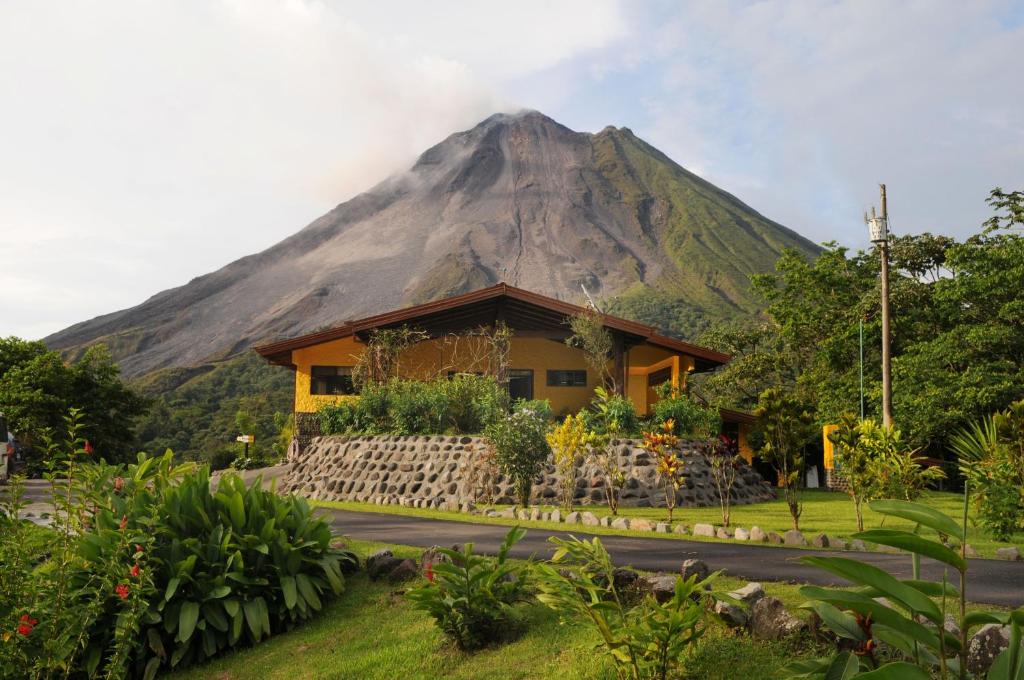
Located in Guácimo, just 13 km from Ebal Rodriguez Stadium, Ecolirios Boutique Hotel and Spa offers a serene retreat with thoughtful amenities. This 5-star hotel, surrounded by lush landscapes, provides free bikes for exploration, a tranquil garden, and an inviting terrace. Each room boasts mountain views, granting guests a picturesque backdrop, and access to the hotel’s restaurant and bar. Cycling enthusiasts will find the location ideal for exploring the scenic surroundings of Guácimo.
Setting itself apart as a 100% eco-friendly property, Ecolirios Boutique Hotel and Spa utilizes solar energy to power its facilities. The hotel takes pride in its own organic garden, where fresh and chemical-free produce is cultivated. Additionally, the property has established a dedicated recycling collection center, reinforcing its commitment to sustainable practices.
Click Here to check the current rates and availability for Ecolirios Boutique Hotel and Spa .

Si Como No Resort & Wildlife Refuge
Located in the jungle above Costa Rica’s Manuel Antonio National Park, this enchanting hotel is just a 5-minute car ride from the beach. Si Como No Resort & Wildlife Refuge offers a plethora of amenities, including a cinema, spa, hot tub, two outdoor pools with a swim-up bar, and a captivating butterfly garden. The air-conditioned rooms, adorned with tiled floors and modern décor, provide jungle views for a truly immersive experience. Sí Como No features a contemporary restaurant with a local flair, complemented by a snack bar hosting live music.
The resort not only prioritizes luxury but also sustainability. It harnesses renewable energy sources, utilizing solar panels and a hydroelectric generator. Water conservation measures, such as low-flow toilets, showers, and a rainwater harvesting system, contribute to responsible resource management. The resort takes pride in supporting sustainable agriculture by incorporating local, organic food in its restaurant, thereby reducing the carbon footprint associated with food sourcing. Guests are offered educational experiences, including guided nature walks and surf lessons, providing insight into the surrounding ecosystem. That’s why when it comes to ceo-resorts in Costa Rica you can’t overlook this accommodation.
Click Here to check the current rates and availability for Si Como No Resort & Wildlife Refuge .

Si Como No Resort & Wildlife Refuge

El Remanso Lodge
Nestled in Puerto Jiménez, El Remanso Lodge invites guests to embrace nature with a garden and outdoor pool. The lodge also features a spa center, an on-site restaurant offering delicious meals, and the convenience of packed lunches. For those seeking adventure, a private beach area is accessible, and car hire services are also available.
Setting itself apart through sustainability, El Remanso Lodge employs recycled materials and champions eco-friendly electricity. The lodge harnesses hydro-power and solar panels to minimize its environmental impact. To deepen the connection with nature, the eco-lodge offers sustainability tours and engages guests in community projects. These initiatives provide opportunities to learn about the environment and actively contribute to its preservation.
Click Here to check the current rates and availability for El Remanso Lodge .
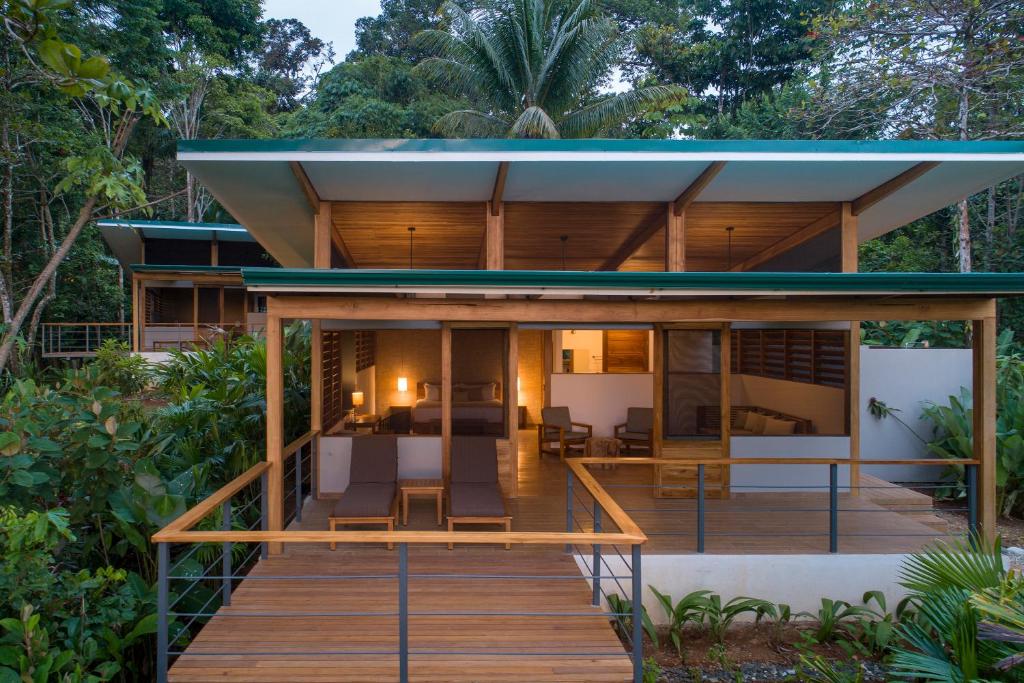
El Remanso Lodge
- Wellness packages

Luna Lodge
In the heart of tropical rainforest, Luna Lodge offers a captivating escape with stunning nature tours, yoga, spa treatments, and an organic swimming pool surrounded by waterfalls and natural beauty. The property provides panoramic views of the lush surroundings, ensuring a serene and immersive experience. Accommodations, including bungalows and tents with private decks, as well as rooms with terraces, invite guests to connect with nature. Luna Lodge organizes various activities, from rainforest tours and bird watching to kayaking and horseback riding on the beach. Yoga lessons and spa treatments further enhance the holistic experience.
As a responsible Corcovado eco-lodge, Luna Lodge is dedicated to minimizing its environmental footprint. The lodge cultivates its own vegetables in an organic garden and efficiently manages organic waste through a worm farm. Nightly electricity shutdowns and minimal lighting powered by a generator in the main building ensure minimal disruption to nocturnal wildlife. Even the solar-heated swimming pool reflects the commitment to sustainable practices, making this one the finest eco-lodges in Costa Rica.
Click Here to check the current rates and availability for Luna Lodge .
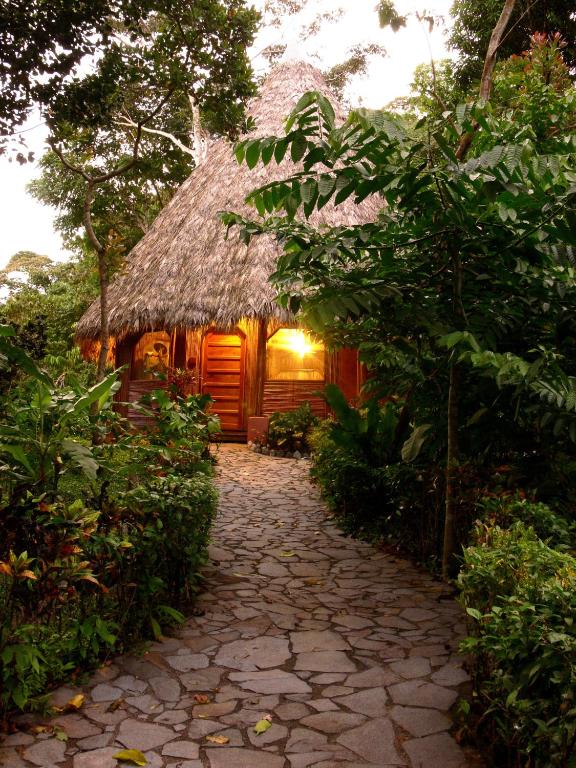
- wellness center
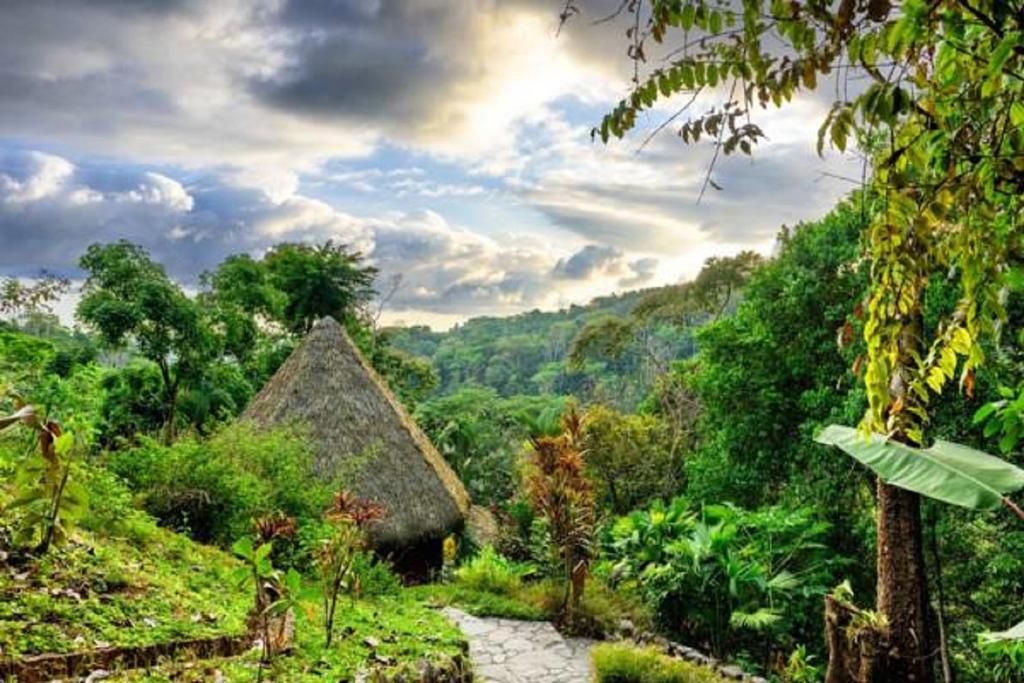
Esquinas Rainforest Lodge
Set on the fringes of Piedras Blancas National Park, 2 km from La Gamba Village, Esquinas Rainforest Lodge beckons with its natural swimming pool and expansive tropical gardens. The rooms, adorned with warm wooden furnishings, provide a cozy retreat within the rainforest. The lodge facilitates activities such as hiking in Piedras Blancas National Park, horseback riding to Chorro Waterfall, and boat tours in the Gulf of Dulce.
Esquinas Rainforest Lodge stands as a paragon of sustainability. The lodge cultivates its own organic vegetables and fruits, actively discourages plastic use, and operates its wastewater treatment plant. From harnessing hydroelectricity and solar panels to providing eco-friendly tours, the lodge seamlessly blends luxury with an educational and conservation-focused experience.
Click Here to check the current rates and availability for Esquinas Rainforest Lodge .

Esquinas Rainforest Lodge
- Facilities for disabled guests

Dantica Cloud Forest Lodge
Discover the tranquility of Providencia at Dantica Cloud Forest Lodge , where a unique blend of natural beauty and sustainable luxury awaits. Surrounded by private tropical gardens, this eco-friendly lodge features spacious bungalows with modern wooden décor, complete with a seating area, dining area, and a hot tub overlooking the extensive nature reserve. Indulge in fine dining at Le Tapir Restaurant, where an à la carte menu awaits. The lodge offers more than just culinary delights, with an on-site art gallery, a tour desk, a children’s playground, and convenient dry-cleaning services.
Dantica Cloud Forest Lodge is committed to sustainable tourism, actively participating in the CST (Certificación para la Sostenibilidad Turística) program. Nestled in the heart of unspoiled forests, surrounded by National Parks and inside a Forest Reserve, it is a one-hour drive from the nearest village. The lodge undertakes various environmental protection measures, promoting responsible water use, electricity conservation, and waste disposal. Additionally, the lodge prioritizes local service providers for repairs and maintenance, fostering a strong connection with the community. All these advantages mean that the accommodation is one the best eco-lodges in Costa Rica.
Click Here to check the current rates and availability for Dantica Cloud Forest Lodge .

- Hot tub/Jacuzzi
- Garden view
- Pet-friendly

Los Pinos Cabins & Reserve
Nestled in Monte Verde, Costa Rica, Los Pinos Cabins & Reserve offers a tranquil retreat surrounded by lush gardens and well-appointed cottages with captivating mountain views. Only 1 km from Santa Elena town, each cottage boasts a private terrace and a fully equipped kitchen. Guests are encouraged to harvest fresh vegetables from the property’s hydroponic garden, and local restaurants can be found in nearby Santa Elena.
Taking social responsibility seriously, the property actively works to reduce pollution and environmental hazards. Additionally, Los Pinos has embraced a sustainable policy aimed at minimizing its carbon footprint. So, while you may be drawn to these gorgeous cabins for their seclusion and amenities, the extra layer of care for Mother Nature makes the experience at Los Pinos Cabins & Reserv even more exceptional.
Click Here to check the current rates and availability for Los Pinos Cabins & Reserve .

Los Pinos Cabins & Reserve
- Warm hospitalities

The Sunset Tucano Lodge
Located in Drake, just steps away from Las Caletas Beach, The Sunset Tucano Lodge offers a picturesque retreat with a garden and an on-site restaurant. Established in 2017, the property is conveniently situated within 2 km of Cocalito Beach. With a 24-hour front desk, airport transfers, and a tour desk, the lodge ensures a seamless stay. Some rooms feature a terrace, and others offer stunning sea views. For those who enjoy hiking, the area is a popular choice, and car hire services are available at this 3-star hotel.
What sets this accommodation apart is not just its prime location but also its commitment to supporting the local ecosystem. The Sunset Tucano Lodge goes beyond typical hospitality, offering educational experiences for guests to learn about the surrounding ecosystem. With its blend of comfort, accessibility, and eco-conscious initiatives, this accommodation stands out as a top choice among eco-lodges in Costa Rica.
Click Here to check the current rates and availability for The Sunset Tucano Lodge .

The Sunset Tucano Lodge
- Warm hospitality

Pacific Edge Eco Lodge
Overlooking the sea and featuring a captivating pool with scenic views, Pacific Edge Eco Lodge stands as a sustainable haven in Dominical, merely 2.4 km from Playa Dominicalito. The accommodation, offering mountain-view balconies, provides a unique and eco-conscious experience. A restaurant serving American cuisine, along with a snack bar and lounge, caters to the culinary preferences of guests. Beyond its picturesque setting, Pacific Edge Eco Lodge offers additional amenities, including in-house yoga classes for guests seeking relaxation. The area is well-suited for hiking, and car hire services are available for exploration. The lodge also boasts a sun terrace and a tranquil picnic area.
This property takes noteworthy sustainable measures to protect the environment. By eliminating the use of plastic items such as straws, water bottles, and cups, and providing guests with the option to reuse towels and opt out of daily room cleaning, Pacific Edge Eco Lodge promotes responsible tourism. Additionally, the lodge prioritizes serving meals made from local ingredients and incorporates green spaces on the property, enhancing the overall eco-friendly experience for guests; a great choice among eco-lodges in Costa Rica!
Click Here to check the current rates and availability for Pacific Edge Eco Lodge .
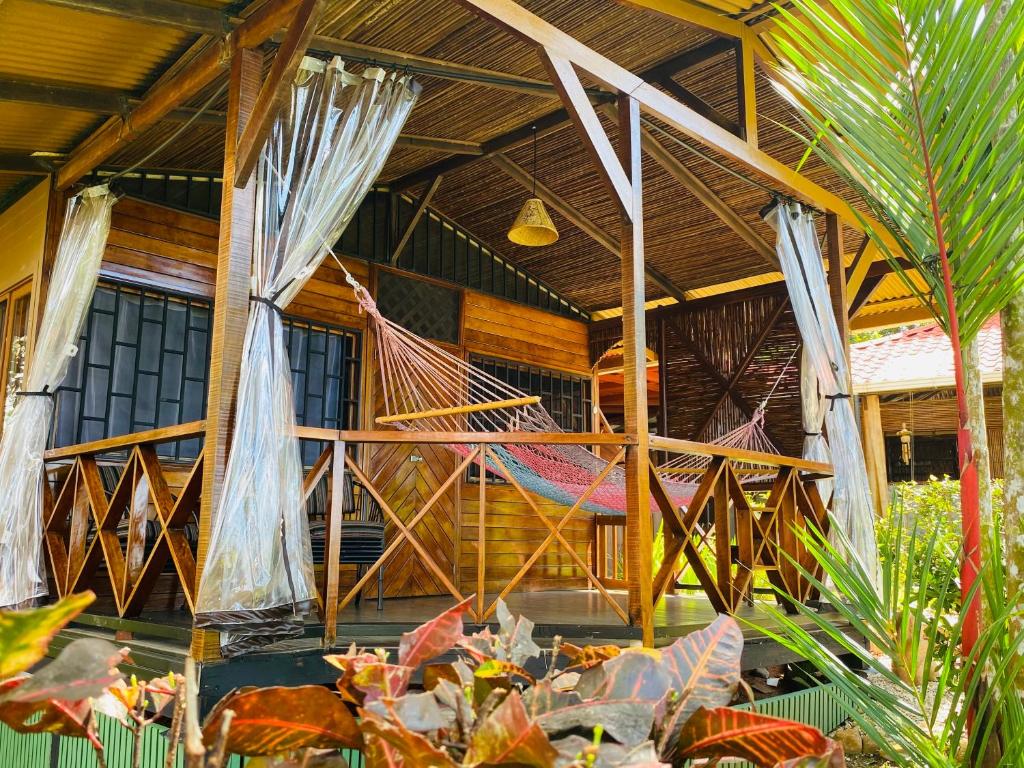
Pacific Edge Eco Lodge
- wellness packages

La Leona Eco Lodge
Nestled within a tropical forest overlooking the Pacific Ocean, La Leona Eco Lodge embraces a rustic charm and eco-conscious ethos. The certified eco-friendly property offers a unique experience with an included breakfast. The bungalows, adorned with rustic decor, eschew electricity in favor of candlelight, creating an intimate and natural ambiance. Situated less than 3 km from Playa Carate Beach, La Leona Eco Lodge is an ideal starting point for hiking towards Corcovado National Park, located less than 200 meters away.
Beyond its scenic beauty, La Leona Eco Lodge actively encourages ecotourism and demonstrates a profound commitment to nature. The lodge consistently engages in recycling efforts, conservation initiatives, and takes deliberate actions to preserve its natural resources. As a result, guests can immerse themselves in an authentic eco-friendly experience that goes hand-in-hand with the pristine surroundings of this tropical haven.
Click Here to check the current rates and availability for La Leona Eco Lodge .

La Leona Eco Lodge
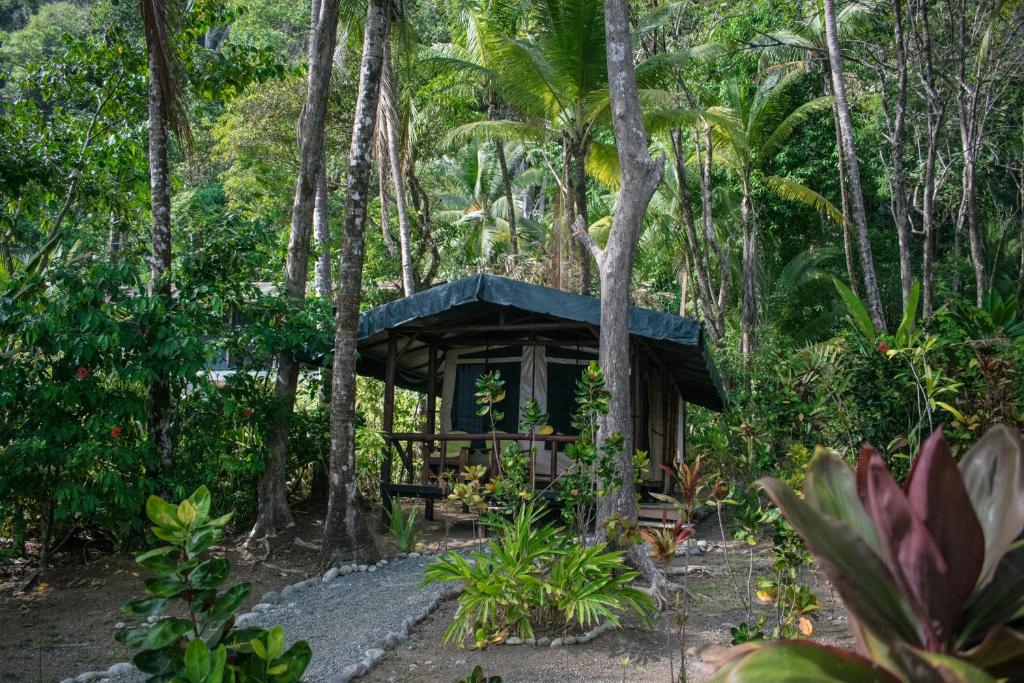
The Jaguars Jungle Rainforest Lodge
Nestled in San Pedrillo, The Jaguars Jungle Rainforest Lodge offers a haven with a garden, terrace, restaurant, and bar. Only 600 meters from San Pedrillo Beach and 2.3 km from Rincon Beach, the hotel boasts a private beach area. Each room features a balcony with a sea view, providing a serene backdrop for guests. Outdoor enthusiasts can enjoy hiking in the surrounding area.
Situated in a remote location, The Jaguars Jungle Rainforest Lodge minimizes its impact on the environment and local communities. The 130-acre property borders Corcovado National Park, offering guests the rare opportunity to spot wildlife right from their rooms. This unique setting contributes to the conservation of local biodiversity. To enhance the guest experience, the lodge provides exclusive eco-tours led by their top-rated in-house guides. This approach allows guests to seamlessly explore the surrounding rainforest and marine life without the need to travel to meeting locations or search for restaurants, maximizing the time spent in nature. The Jaguars Jungle Rainforest Lodge is not just a destination; it’s an immersive and sustainable experience and one of the finest eco-resorts in Costa Rica.
Click Here to check the current rates and availability for The Jaguars Jungle Rainforest Lodge .
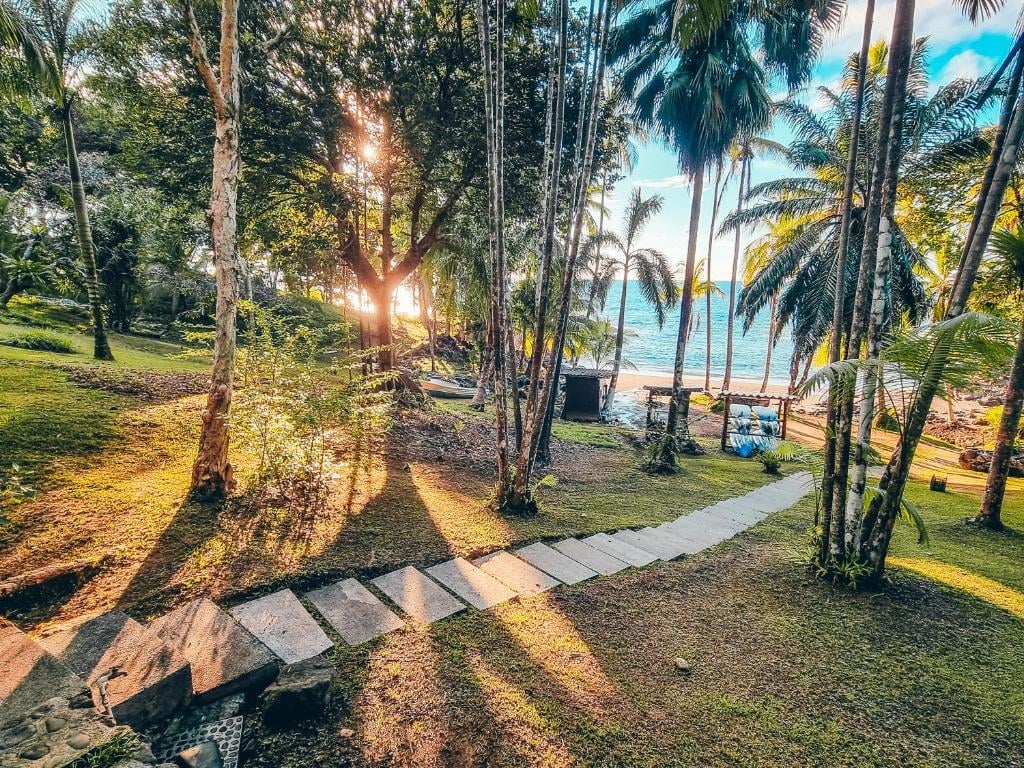
The Jaguars Jungle Rainforest Lodge

Selva Bananito Lodge
Perched on the hills adjacent to La Amistad Biosphere Reserve, Selva Bananito Lodge offers a verdant oasis with an expansive green area and a private reserve for thrilling activities such as zip-lining, waterfall rappelling, hiking, tree climbing, and horseback riding. The rooms, adorned with wooden décor and equipped with mosquito nets, feature balconies offering panoramic views of the mountains and river.
Distinguishing itself through its commitment to sustainability, the eco-lodge operates without electricity, harnessing natural power sources. Ingredients for meals are sourced from the lodge’s own farms, emphasizing a farm-to-table approach. Moreover, the eco-lodge strategically built itself in an area previously impacted by human activity to minimize further disruption to the biological reserve. The construction utilized wood leftovers from foresters, promoting responsible use of resources. To combat insects, synthetic or thick tar paper roofing is employed, eliminating the need for pesticides and insecticides. This eco-conscious approach ensures that guests can enjoy a harmonious experience with nature while leaving a minimal footprint on the environment.
Click Here to check the current rates and availability for Selva Bananito Lodge .

Selva Bananito Lodge
- Indoor play area

Arenal Garden Lodge
Nestled within the Arenal Volcano National Park in El Castillo de La Fortuna, Arenal Garden Lodge offers a tranquil escape. Each room is thoughtfully designed, featuring a seating area, and some rooms boast captivating lake views. The lodge is surrounded by a garden and includes a terrace, providing a serene ambiance. A range of facilities, including a ticket service and a tour desk, enhances the guest experience. For those seeking adventure, the lodge offers on-site activities such as cycling and hiking.
In terms of eco-friendliness, Arenal Garden Lodge is dedicated to minimizing its environmental impact. The lodge actively supports local conservation efforts and goes the extra mile by providing educational experiences for guests about the surrounding ecosystem. This commitment to sustainability ensures that guests not only enjoy a peaceful retreat but also contribute to the preservation of the natural beauty that surrounds Arenal Garden Lodge.
Click Here to check the current rates and availability for Arenal Garden Lodge .
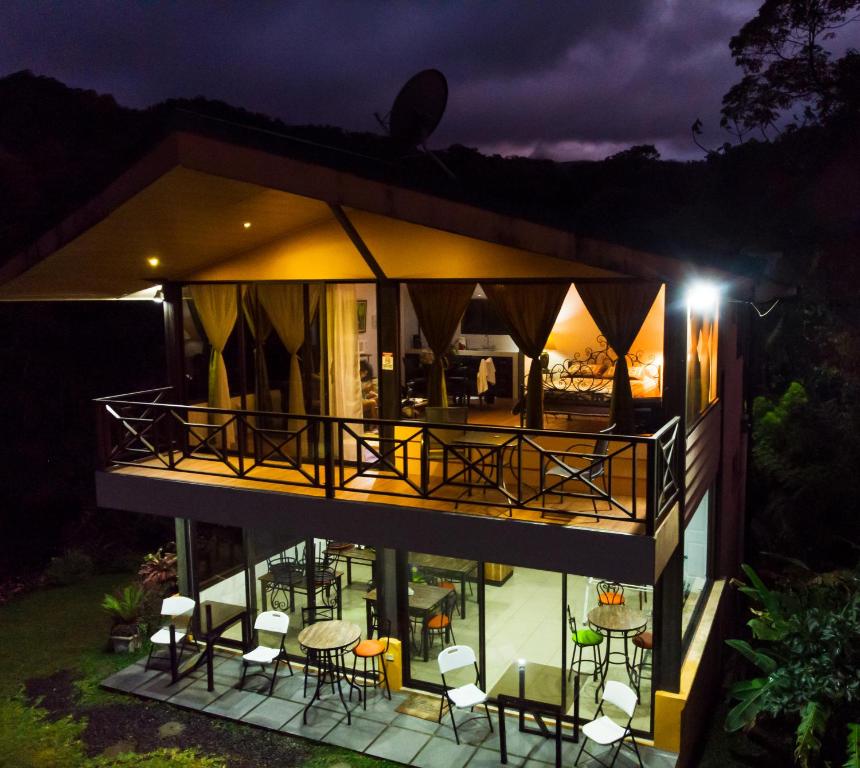
Arenal Garden Lodge

Amazonita Ecolodge
Nestled in Dos Brazos, deep in the heart of the jungle and just 16 km from Puerto Jimenez, Amazonita Ecolodge provides a unique retreat. The cabins are thoughtfully equipped with a spacious open-air kitchen and dining area, a queen bed, bunk beds, and a bathroom. Guests can savor delicious meals at the on-site restaurant or enjoy a drink at the bar. The location is popular for horse riding and fishing, and the property is only 5 minutes away from an entry point to Corcovado National Park.
Amazonita Ecolodge offers a nature-centric experience with its open-air cabins situated against the border of the rainforest. The lodge’s commitment to local management and its close proximity to the national park showcase a dedicated effort to preserve the natural environment. This eco-conscious approach ensures that guests not only enjoy the beauty of the jungle but also contribute to its conservation during their stay at Amazonita Ecolodge.
Click Here to check the current rates and availability for Amazonita Ecolodge .

- Jungle views
- Sun terrace

And there you have it – a helpful guide to some of Costa Rica’s best eco-friendly resorts! With so many stunning sustainable hotels, lodges, and retreats to choose from, finding your perfect green oasis for an upcoming visit just got much easier. Wherever your travels may take you though, I hope this guide gave some vacation inspiration for an unforgettable, eco-conscious stay!
As a lover of beautiful Central America myself, might I also suggest looking into the eco-lodges of Mexico for your next getaway? The region is filled with so many gorgeous natural escapes that balance comfort with environmental values.

Rent a car or moto to move around Costa Rica and its surroundings more comfortably by dismissing predicament and avoiding traffic jams.
Searching for where to stay in Costa Rica or surrounding towns? Check these hotels and hostels in Costa Rica for all budgets and all tastes.
Costa Rica is known for its gastronomy, deliciously diverse cuisine. Check out these bars, cafes, and restaurants in Costa Rica and around.
Discover the best nightclubs and bars in Costa Rica. Here are some of the places for rambling around the town, letting loose, and dancing.
Find popular guided tours and excursions in Costa Rica and its surroundings. Book your transfer from the airport to the nearest town or vice versa.
Language schools and other educational institutions and centers offering Spanish language courses and cultural programs in Costa Rica.

Eco-tourism in Costa Rica
Eco-tourism is one of the hallmarks of Costa Rica, which has become a world-renowned destination for travelers looking to experience the country’s rich biodiversity and natural beauty in a sustainable way.
Here are some of the key aspects of eco-tourism in Costa Rica:
National Parks and Protected Areas
Costa Rica has a network of national parks and protected areas that cover nearly 25% of the country’s land area. These parks offer visitors the chance to experience a variety of ecosystems, from rainforests and cloud forests to beaches and coral reefs.
Many of the parks have well-marked trails, guided tours, and educational programs to help visitors learn about the natural environment and the importance of conservation.
Sustainable Lodging
Some lodging options are also built using eco-friendly materials like bamboo and recycled materials.
Community-based Tourism
In some parts of Costa Rica, tourism has become an important source of income for local communities. Community-based tourism projects aim to promote economic development while also preserving the natural and cultural heritage of the area.
This can include homestays, cultural tours, and other activities that allow visitors to interact with local residents.
Adventure Activities
Many of the adventure activities in Costa Rica, such as zip-lining, whitewater rafting, and hiking, take place in natural settings.
Environmental Education
Eco-tourism in Costa Rica is not just about experiencing nature – it’s also about learning about it.
Many eco-tourism operators offer educational programs that focus on topics like ecology, conservation, and sustainable development. These programs can be tailored to different age groups and interests, making them a great option for families and school groups.
Eco-tourism in Costa Rica is an important part of the country’s identity and a major draw for visitors from around the world. By promoting sustainable practices and protecting the natural environment, Costa Rica is setting an example for other countries to follow.
Like it? Then share this with your friends!
Use these tags to read more related posts and reviews:.
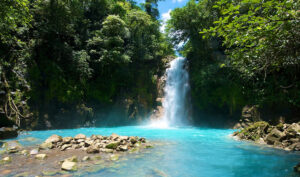
Comments are closed.

Why Ecotourism in Costa Rica is such big business
Disclaimer: Some posts on Tourism Teacher may contain affiliate links. If you appreciate this content, you can show your support by making a purchase through these links or by buying me a coffee . Thank you for your support!
Ecotourism in Costa Rica is big business. The ecotourism industry has been rapidly expanding worldwide, and Costa Rica a is proudly one of the world leaders in this sector. But why is Costa Rica so good at ecotourism and where are there best places for an ecotourist to travel in Costa Rica? In this article I will explain all…
- What is ecotourism?
Arenal Observatory Lodge & Spa
Tabacón thermal resort & spa, monteverde cloud forest lodge, caribbean paradise eco lodge, tortuga lodge & gardens, hotel costa verde, ecotourism in costa rica: further reading.
- Cloud forests | A simple explanation
- Visiting the Costa Rica volcanoes: What you should know
- The best eco lodges in Costa Rica
- Costa Rica with a Baby
What is ecotourism in Costa Rica?
Ecotourism in Costa Rica is popular, and that popularity is ever-growing.
By definition, ecotourism is tourism directed towards exotic, often threatened, natural environments, intended to support conservation efforts and observe wildlife. It caters for people who want to discover the world without having too much of an impact. There are many examples of ecotourism, and many ways travellers can give back to an environment and/or community while travelling.
Ecotourism, in Costa Rica and beyond, is all about being responsible while travelling. Whether that means choosing to stay at an eco-hotel or lodge, making a conscious effort to cut down on single use plastics while travelling ( you can learn how to avoid using single use plastics when you travel here ) or choosing tours that involve giving back (like sea clean-up boat rides), there are many ways to be any ecotourist!
We should all strive to do more when it comes to protecting the Earth while travelling. After all, we want to be able to enjoy it for years to come – and for future generations to be able to explore, too. By taking care of the planet now, we ensure that ourselves and others are able to enjoy it in the future.
Ecotourism in Costa Rica

Despite being a tiny country of just 19,730 sq. miles (51,100 sq. km), Beautiful Costa Rica has a lot to offer when it comes to the natural environment. Costa Rica occupies less than 1% of the world’s surface but is home to more than 5% of the world’s biodiversity. There are 26 national parks, 58 wildlife refuges, 32 protected zones, 15 wetland areas, 11 forest reserves, and 8 biological reserves. There are coastal areas, cloud forests , wetlands, rainforests and rainforests.
Costa Rica is seen as a pioneer in ecotourism. While many tourist destinations around the world were destroying large parts of the natural environment in exchange for high-rise hotels and built tourist attractions , tourism stakeholders in Costa Rica were busy working out ways for tourists to enjoy the natural environment whilst causing as little harm to it as possible.
Costa Rica’s ecotourism success is demonstrated through the awards for sustainable tourism that the country has won. The most notable of these was the Champion of the Earth award from the United Nations.
Furthermore, Costa Rica is well on its way to being the first carbon-neutral country in the world. Almost 98 percent of the electricity in Costa Rica currently comes from renewable resources and the aim is to increase this to 100% by 2030! Now that’s impressive!
Ecotourism in Costa Rica is facilitated through a number of travel and tourism initiatives, from outdoor adventure activities, to animal welfare projects to eco lodges and hotels. Many organisations choose to invest in Certification for Sustainable Tourism (CST). This is a government program that provides Green Leaf Certification to responsible businesses and ecotourism activities in Costa Rica.
So, you have decided that you want to experience ecotourism in Costa Rica, now what? Below I have outlined the best places to go and things to do for the avid responsible tourist in Costa Rica.
Ecotourism in Arenal

When it comes to ecotourism in Costa Rica, one place on everyone’s list is Arenal. The Arenal Volcano National Park was one of the most active volcanoes in the world until around 2010 – the volcano itself presides over the landscape of northwestern Costa Rica. The scenery is incredibly atmospheric. Arenal Volcano itself might be dormant now, but the area is still a must-visit for ecotourists heading to Costa Rica.
From the tiny town of La Fortuna with its beautiful waterfall to the hot springs of the area and Lake Arenal, there is so much nature to fall in love with here. Birdwatching, white water rafting, the Venado caves – there is something for everyone to discover! The scenery here is just breathtaking, and there are a few eco lodges in the area too…

The Arenal Observatory and Spa is often called La Fortuna’s #1 eco lodge. Set across hundreds of acres of land, the rainforest and farmland here is incredible. You’ll get to see various species of exotic wildlife and so many types of plants – and the best part? The hotel is actually located within the boundaries of the Arenal Volcano National Park, because the formation of the national park itself in 1991 came after the ranch was already there. There is nowhere you can stay that is closer to the volcano, or Lake Arenal.
Originally a scientific research station, this lodge is now one of the best places to stay to experience ecotourism in Costa Rica. There are 48 rooms and two holiday homes, alongside a restaurant and spa. The huge observation deck and many floor-to-ceiling windows ensure that you’ll always have a good view… With daily walks on offer, a swimming pool, an observation tower, gardens, bridges and so much more, this is an incredible place to stay!

Another idyllic place to stay in Arenal is the Tabacón Thermal Resort & Spa . Get back to nature and discover beautiful scenery right outside your window – stay in this wellness retreat and get some well needed R&R. The staff are happy to help you plan your time in the Arenal area: horseback riding, canopy tours, nighttime frog-watching and much more!
Ecotourism in Monteverde

Monteverde is another popular location for experience ecotourism in Costa Rica.
Monteverde is beautiful, and home to one of the best cloud forests in the world. Located in the Puntarenas province of Costa Rica, around four hours away from the Central Valley, this is actually one of the best ecotourism destinations in the world. A cloud forest is a unique type of ecosystem where the clouds hang low inside the forest itself, providing a wealth of biodiversity.
Zip-lining and canopy tours are two great ways to experience the forest, where you can see Resplendent Quetzals and colourful hummingbirds and so much more. There are three reserves here: Monteverde itself as well as Santa Elena and Children’s Eternal Rain Forest. Monteverde is the biggest and best, and it is no wonder that it is so popular!
The scenery is breathtaking. There are so many species to discover, and plenty of things to do like coffee tours, night walks and much more….

When it comes to where to stay, the Monteverde Cloud Forest Lodge couldn’t come more highly recommended. It is completely environmentally friendly, providing educational and fun experiences to guests as well as giving back to the local community. With spectacular views from the comfortable rooms, you’re in for a treat if you stay here.
There is a restaurant, too. It’s called MOTMOT and all of the food is home-grown, flavoursome and hugely varied. They serve food from 6.30 am until 10 pm, with bar service from 10 am. Rooms start at $90 per night – the decor is simple but gives off a lovely calming vibe that makes a stay here such a good time.
Ecotourism in Tortuguero

Tortuguero National Park is a protected wilderness area. This is one of the best places in the world for seeing sea turtles – they nest on the beaches here. Seeing them hatch is one of the best experiences in the world, and one on many peoples’ bucket lists!
There is high biodiversity here due to the range of habitats: mangrove forests , lagoons, swamps and more. You might see the American crocodile or some manatees, as well as jaguars and white-tailed deer. With 779 different species of places in the area, there is no shortage of things to see at Tortuguero.
If you are looking for ecotourism in Costa Rica, Tortuguero is a great place for it. But where should you stay?

Simple, functional rooms with balconies and stunning views as well as free WiFi, a garden, a restaurant/bar and more: Caribbean Paradise Eco Lodge has everything you need for an eco-friendly stay in Tortuguero. You’ll be surrounded by the national park, and there is a pool as well as outdoor seating. Fall asleep to the sound of howler monkeys, and keep your eyes peeled for wild birds who pop in and out to say hello. Reviews describe the hotel as rustic but friendly, and great for families looking for this kind of holiday!

With the Tortuguero River on one side and plantation-style gardens on the other, Tortuga Lodge & Gardens is an incredible place to stay. There are 27 rooms with free WiFi, a bar and restaurant, beautiful grounds and other amenities. You can borrow equipment for walking and other activities, meaning you can head out to explore whenever you want. Head out on a boat trip with a local guide, or go and see the baby turtles hatching. Experience the rainforest up close and fall in love with ecotourism in Costa Rica!
Ecotourism in Manuel Antonio National Park

When it comes to experiencing ecotourism in Costa Rica, Manuel Antonio National Park is often viewed as a model for what the concept should be. This beautiful rainforest area covers around 2.64 square miles. Home to iguanas, sloths, crabs and so much more, it is an amazing place to visit if you want to experience the natural splendour of Costa Rica. From guided tours to paddle boarding sessions, horseback riding through waterfalls to traversing the jungle at night – there are so many amazing ways to experience Manuel Antonio National Park, and so much to discover.

When staying in the area there is one incredible place that should be on your radar: the Hotel Costa Verde . This is an eco lodge, so perfect for enjoying ecotourism in Costa Rica. It lies 300 yards from the beach , and overlooks the national park itself. As you can imagine, the views are just amazing.
The hotel itself is made from abandoned things such as planes and boats, recycling them into rooms and restaurants to avoid them going into landfill. Their sustainability efforts go way beyond this, though. They make most fittings and fixtures themselves, recycle the majority of their waste, use rain water for laundry and so much more. Guests are encouraged to take care of their surroundings, and learn about the ecosystem here.
Hotel Costa Verde also supports the local community. They sell products from local artists, and help with beach clean-ups. In general, they aim to support the cultural development of the area while ensuring that nature can thrive.
If you enjoyed this article, you may also like-
Liked this article? Click to share!

Visit Costa Rica!
Resplendent Quetzal!!
Welcome to Eco Tours Costa Rica
Welcome to Costa Rica, where adventure meets paradise! With 25 years of experience guiding tourists through our breathtaking country, we offer you the chance to explore Costa Rica like never before. Discover the lush rainforests, pristine beaches, and diverse wildlife that make Costa Rica a top destination for nature lovers and adventure seekers alike. Our expertly crafted tours and vacation packages provide you with the perfect blend of excitement and relaxation at reasonable prices. Embark on unforgettable journeys to iconic destinations such as Arenal Volcano, Manuel Antonio National Park, and the Monteverde Cloud Forest. Immerse yourself in the rich culture and vibrant traditions of Costa Rica as you taste local cuisine, learn about indigenous communities, and experience the warmth of the Tico hospitality. Whether you’re seeking adrenaline-pumping activities like zip-lining and whitewater rafting or tranquil moments surrounded by nature’s beauty, we have something for everyone. Join us for an unforgettable adventure in Costa Rica – where every moment is filled with wonder and excitement. Book your tour or vacation package today and let the adventure begin!
Costa Rica shelters 5% of the world’s biodiversity. An extraordinary country with a great diversity of flora and fauna. The country has two coasts and on the Caribbean coast, we find English speakers of Jamaican origin. The topography in the country is quite irregular with high mountains, with drastic changes in temperature, elevation, and precipitation. Giving rise to a great variety of ecosystems that are found throughout the country.
Planning to Visit Costa Rica in the Low Season
Between May to November is our “green season or low season”. The forest especially in the Pacific side changes a lot from dry to a more lush green forest due rain. We encourage you to visit between May to July, few rain showers and prices are lower and less people. Unforgettable experiences at affordable prices!!!
Popular Tours

Poas Volcano & Coffee Tour
Visit the most active volcano in Costa Rica accompanied by a local guide who will explain about its natural history while you observe of the most beautiful craters surrounded by lush vegetation. Our tour includes a visit to a coffee

Sarapiqui Jungle Boat Tour
The boat tour along the Sarapiqui river offers a captivating adventure where you will enjoy the local diversity of plants and wildlife. You get to see toucans, caimans, turtles, sloths, monkeys, iguanas

Tortuguero National Park
Tortuguero is a must see destination located at 80 km north of Limon on the Caribbean coast surrounded by canals, rivers, lagoons and rainforest. We offer 3 days | 2 nights and 2 days | 1 night packages (all inclusive). Make your reservation the turtle season is coming from July through September

La Paz Waterfall Gardens
La Paz Waterfalls is a nature reserve located in a beautiful setting surrounded by Rainforest and Cloud forest where you can enjoy hiking and animal exhibits such as birds, butterflies, monkeys, snakes, wild cats and waterfalls with lunch included
How do we use WhatsApp
At Eco Tours Costa Rica, we are dedicated to providing you with exceptional service and keeping your travel experience as smooth as possible. To facilitate efficient communication, we have integrated WhatsApp into our business operations. However, we want to assure you that we will not be using this channel to inundate you with promotions, advertisements, or any unnecessary messages.
Our intention behind using WhatsApp is solely to address your travel-related inquiries, provide real-time assistance during your trips, and ensure that you have immediate access to our team should you need any support. We understand the importance of clear and focused communication, and we value your time and privacy.
Contact us Through WhatsApp
Vacation Packages
At Eco Tours Costa Rica, our vacation packages are crafted to inspire, but we believe in flexibility. Explore our website for ready-to-go adventures, or let us tailor any package to fit your unique preferences and budget. Your dream vacation, your way—because personalized memories last a lifetime.

Costa Rica Pura Vida
Embark on an unforgettable journey through the natural wonders and vibrant culture of Costa Rica. This carefully curated vacation package invites

Exploring Costa Rica
This travel program offers a diverse array of experiences, from the vibrant canals of Tortuguero to the mystical cloud forests of Monteverde

Costa Rica Eco Adventure
Throughout this package, you’ll experience the natural beauty of Costa Rica, from its rainforests and wildlife to its volcanoes and coastal landscapes.
One Day Tours
Explore the best of Costa Rica in a day with Eco Tours Costa Rica! Discover stunning landscapes, vibrant cultures, and thrilling adventures, all expertly curated for a memorable experience. Join us for a day of excitement, nature, and local charm!” To secure your spot on our exciting one-day tours, simply reach out via email to check availability. Upon confirmation, we’ll promptly send you the details along with a secure payment link. Ensure your Costa Rican adventure awaits by reserving your place with Eco Tours today.

MANUEL ANTONIO

ARENAL VOLCANO

CARIBBEAN SIDE
Testimonials
Best Time to Visit Costa Rica
Anytime is a good time but take into account that from December to April is our dry season o summer, but remember that this is our busiest time of the year. In the Caribbean side, the dry season is from July to October, keep in mind Costa Rica is a tropical country rain showers any time of the year, and it is cooler in the mountains than in the lowlands. Between May to November is our “green season”. The forest especially in the Pacific side changes a lot from dry to a more lush green forest due rain. We encourage you to visit between May to July, few rain showers and prices are lower and less people.
Why Costa Rica?
There are many reasons why people choose to visit Costa Rica! Here are just a few: Stunning natural beauty: Costa Rica is known for its incredible natural beauty, from its lush rainforests and pristine beaches to its active volcanoes and stunning waterfalls. Rich biodiversity: Costa Rica is home to an astonishing variety of plant and animal species, including monkeys, toucans, sloths, and jaguars. Adventure activities: Whether you’re looking to go ziplining through the jungle, surfing on the Pacific coast, or whitewater rafting down a river, Costa Rica has plenty of adventure activities to offer. Sustainable tourism: Costa Rica is committed to sustainable tourism, which means that visitors can enjoy the country’s natural beauty while also supporting local communities and protecting the environment. Friendly people: Costa Ricans, also known as “Ticos,” are known for their warm hospitality and friendly nature. Visitors to Costa Rica often report feeling welcome and at home in this beautiful country. Overall, Costa Rica offers a unique and unforgettable travel experience, with something for every type of traveler.
Secure payments method

Privacy Overview
Want to restore a forest? Give it back to Indigenous peoples who call it home
These women took back their land in costa rica, and now they plan to reforest it..
By Justine Calma , a senior science reporter covering energy and the environment with more than a decade of experience. She is also the host of Hell or High Water: When Disaster Hits Home , a podcast from Vox Media and Audible Originals.
Share this story
:format(webp)/cdn.vox-cdn.com/uploads/chorus_asset/file/25249710/246961_Costa_Rica_Renewables_1_IVargas.jpg)
Doris Ríos ducks gracefully under barbed wire fencing, wearing knee-high black rubber boots, a black dress, and the black horn of a beetle dangling from a beaded necklace. Until recently, this barrier would have kept her out of a ranch operating on Indigenous Cabécar territory. Now, the fencing protects rows of young guava trees that she and other Indigenous women planted on land they took back from the company that once illegitimately occupied it.
The land is healing. Ríos’ dark eyes are piercing as she stops to survey the terrain, her jet-black hair falling gently in layers from chin to collarbone. She looks out over a green hillside where young saplings are just starting to peek above tall grass. The trail on the other side of the barbed wire is orange dirt; it kicks up into dust when dry and cakes into muddy clay when wet.
She wants to bring back the forest that was here before it was razed to make room for cattle. Ríos is Cabécar, one of the Indigenous peoples in Costa Rica fighting to reclaim land taken by ranchers who cleared forests to feed the world’s skyrocketing hunger for beef .
“We want the land to be as rich as possible, grow and recover from everything they have done.”
These days, Costa Rica might be better known for its ecotourism — a sign of its success as the first tropical country to reverse deforestation. It’s become a beacon of hope for forest restoration on the international stage, a model for other governments to follow now that more than 190 countries have agreed to conserve 30 percent of the world’s lands and restore 30 percent of degraded ecosystems under the 2022 Kunming-Montreal Global Biodiversity Framework .
But like other countries, Costa Rica has to catch up on something that’s crucial for protecting forests and communities that rely on them: upholding Indigenous peoples’ rights to their land . Ríos and other Indigenous leaders around the world are working to change that. Sometimes, that means fighting for policy change or battling in court. It also means taking back what’s theirs, one plot of land at a time, and letting something both new and old grow there.
“We want the land to be as rich as possible, grow and recover from everything they have done,” Ríos says, speaking to The Verge through an interpreter.
A growing body of research shows that forests are often healthier in Indigenous hands. In the Amazon, areas where Indigenous groups have secure land tenureship have shown lower rates of deforestation and higher rates of regrowth where forests have been razed.
“A lot of the Indigenous movement in Brazil is intricately related to the environment. There’s strong preferences for preserving forest habitats because a lot of the local cultures and traditions rely on these forested areas,” says Kathryn Baragwanath, a Harvard Academy scholar who has published research on forest regrowth in Indigenous territories in Brazil.
She’s quick to point out, however, that Indigenous territories shouldn’t be exploited in the name of conservation either. “These are first and foremost human rights policies,” Baragwanath tells The Verge . “But I think that the added benefits of these types of policies for environmental outcomes is quite clear and quite significant.”
:format(webp)/cdn.vox-cdn.com/uploads/chorus_asset/file/25405496/110123_China_Kicha_JCalma_0349.jpg)
After all, efforts to create protected areas like national parks have also displaced Indigenous peoples . A different strategy that’s shown success is to ask local communities to lead the way in preserving forests. In Nepal , forest cover nearly doubled between 1992 and 2016, thanks in large part to a plan to put local groups in charge of managing land within previously nationalized forests. It strengthened mutually beneficial relationships between forests and communities. People took care of the forest because they also relied on it for food or other resources like medicines and firewood. And they were more likely to use those resources sustainably when they were also responsible for conserving them.
Just a few decades ago, Costa Rica had one of the world’s highest rates of deforestation . A policy called “ denuncio ” in the 1930s and ’40s allowed colonists to claim as much as 50 hectares of land as their own if they cleared forest for agriculture. Powerful landowners scooped up vast swathes of terrain; just 1 percent of property owners controlled 25 percent of agricultural land by the 1990s. Forest cover shrank from 75 to 29 percent of the country between 1940 and 1990. Pastures replaced much of it, with the country selling more than half of its beef to Burger King .
Then Costa Rica did an about-face. In 1996, the national legislature passed a transformative forest law that made deforestation illegal in most cases. It also set up a program called “ Payments for Environmental Services ” (Pago de Servicios Ambientales) that pays people to protect forests and other natural resources on their land. The payment reflects the value in protecting biodiversity and water resources, mitigating greenhouse gas emissions (since trees and soil trap planet-heating carbon dioxide), and even safeguarding “natural beauty” for tourism. A tax on fossil fuels pays for much of the program.
Indigenous people in Costa Rica, whose territories cover about 7 percent of the country, receive around 12 percent of the program’s resources, according to the National Forestry Financing Fund that administers it. Ríos says her community has yet to participate in the program in China Kichá; they’re still working to restore the land.
Switch to clean energy. Stop deforestation. Restore ecosystems. They’re lofty goals that more and more corporations and governments are setting for themselves. If it seems too ambitious, just look to Costa Rica. It’s the first tropical country to have reversed deforestation, and it generates nearly 100 percent of its electricity from renewable sources of energy.
There’s a lot to learn from those successes and even more to gain from challenges the country now has to tackle. Seasons are increasingly unpredictable. Could climate change upend past victories? Meanwhile, Indigenous leaders face violence from people trying to stop their campaigns to reclaim and reforest Indigenous territories. Can the country undo a history of land-grabbing?
The Verge explored those questions on the ground in Costa Rica, with support from the International Center for Journalists and local media organization Punto y Aparte , and found hard-learned lessons that cross borders.
For decades, big agriculture’s growing footprint had pushed Indigenous families from their homes. The government of Costa Rica recognizes 24 Indigenous territories belonging to eight Indigenous peoples, including the Cabécar. But it hasn’t fully enforced a law passed in 1977 that bars non-Indigenous people from owning land in legally recognized Indigenous territories, a problem that United Nations watchdogs on human rights and the rights of indigenous peoples have called out in recent years. Indigenous leaders’ peaceful protests have been met with “significant violent backlash from non-indigenous illegal land occupants,” a UN special rapporteur declared in 2020 .
“There are so many sad stories about how [non-Indigenous people] took our lands with lies and violence; others stayed, and others went,” Ríos says. She remembers stories her grandparents used to tell about women who left after facing harassment by non-Indigenous men and of a storekeeper who claimed he could take Cabécar land because the resident owed him money.
“We didn’t know about the laws that were protecting us. So we just prefer to give them the land instead of fighting them,” says Ríos, who was born in China Kichá but spent much of her childhood in the province of Limón, where she says many people from her community moved.
Costa Rica is one of the Central American countries forming the land bridge that connects North America to South America, straddling the Pacific Ocean to the west and the Caribbean Sea to the east. China Kichá is a roughly a four-hour drive south of the country’s capital along roads that wind high enough through mountains to make passengers’ ears pop — past what locals have called Cerro de la Muerte or “Hill of Death” since sojourners had to take the perilous journey by foot or horseback. Getting to Limón takes another several hours by car, crossing the country from its west coast to the Caribbean shoreline.
The government of Costa Rica recognized China Kichá as Cabécar territory back in 1956. But it annulled that decision in 1982, claiming that too many of its Indigenous residents had migrated away from the area. Regardless, Cabécar activists fought to keep rights to the land. In 2001, Costa Rica decided to recognize China Kichá as Indigenous territory again — but only around a quarter of the area it previously did.
:format(webp)/cdn.vox-cdn.com/uploads/chorus_asset/file/25405505/110123_China_Kicha_JCalma_0401.jpg)
That hasn’t stopped activists like Ríos from taking back more land. In 2018, they started doing sit-ins to reclaim more of it. The largest action took place in 2019, when they took back around 350 hectares holding some 400 cattle, according to Ríos. She remembers preparing for their sit-in at 3AM in the morning, cooking for the 15 or so people, including her siblings, and unsure how much food they would need. They had no idea how long they would need to occupy the land until it was theirs again.
They stayed for two years. During that time, she says they faced violent attacks from non-Indigenous counter-protesters who hurled racist slurs and burned down neighboring Cabécar homes . The beetle horn she wears as a pendant came from the ruins of one of those blazes, another victim of the conflict, she says.
She and her family faced death threats, and in 2022, her teenage son was knifed behind his ear in what the family believes was a racially motivated attack. Her voice starts to tremble when she speaks about her son; she remembers running barefoot to find him as soon as she heard the news. She says she still doesn’t feel safe when venturing outside of her community. And even now, on the land she’s reclaimed, she pauses with each car or truck that passes by — tensing up when she doesn’t recognize the driver.
Other prominent Indigenous activists have been killed. A two-hour drive southeast of China Kichá, Brörán leader Jehry Rivera was shot and killed while trying to reclaim Térraba territory in 2020. The year before, Bribri leader Sergio Rojas Ortiz was found dead in his home after being shot 15 times. Rojas had spent decades fighting the illegal occupation of Indigenous lands. UN human rights experts condemned the murder , saying, “Indigenous families trying to recover their land faced imminent danger.”
For Ríos, it was all the more reason to persevere. After Rojas was killed, she says, “we knew we had two choices: either disappear as a Cabécar Indigenous group or take these actions to take back our land.”
While physically occupying the land in China Kichá, the Cabécar activists also battled in court. A judge ultimately decided in 2023 that non-Indigenous ranch owners had wrongfully acquired land within China Kichá Indigenous territory. The land belongs to the Cabécar.
It was a David and Goliath success story against influential property owners. Ríos says that includes the owner of a major private university in San José, the capital of Costa Rica. Legal documents show that a ranch owner shares the same name as the owner of one university, although The Verge was unable to verify with the school whether they were the same person. Last year, Ríos received the International Women of Courage award from the US Department of State.
The land-back movement spreads far beyond China Kichá. Indigenous peoples have reclaimed some 12,140 hectares — an area larger than Walt Disney World — across five different territories in Costa Rica, Yale Environment 360 reports. But a lot of their traditional lands are still not in their control. Cabécar people in China Kichá have now been able to reclaim the 1,100 hectares that the federal government formally reinstated as Indigenous territory in 2001, but that’s still only about a quarter of what was theirs decades before. Around the world, Indigenous people accounted for more than a third of land and environmental defenders killed in 2022 despite making up just 5 percent of the global population.
Ríos sees a future for China Kichá where the forest regrows and people thrive, a home for her family and a place where they can sustainably grow their own food. Those aims don’t have to be at odds with each other — as the success of programs that prioritize community well-being alongside conservation shows.
“We see nature and the environment as part of us and within us,” she says. “When we see a tree is falling down, that means also we are falling down.”
:format(webp)/cdn.vox-cdn.com/uploads/chorus_asset/file/25405509/110123_China_Kicha_JCalma_0409.jpg)
Ríos and others in her community have planted some native guava saplings on the former pasturelands that they once sat in to reclaim. But they won’t actually need to plant too many trees to bring the forest back. Forests have a remarkable ability to recover on their own when allowed to regrow naturally. Fruit trees are a clever choice to help speed up that process, however. They attract animals that eat the fruit, who then spit out seeds — from the guava or whatever else they’ve come across — or spread them in their droppings.
It’s the kind of insight that Indigenous advocates and scientists have wielded to push back against less effective corporate-sponsored tree-planting campaigns that have become increasingly popular around the world. Without local knowledge or community buy-in, these projects often fail . Sometimes, the best way to support a forest is to leave it in the hands of someone who’ll steward it as part of their own home. And yet, Ríos says her community still faces stigma for following that wisdom.
“People are attacking us; they say that we are just lazy people because we take the land back and we don’t do anything. But that’s the idea,” she says. “We are just giving time to the land to recover.”
The Cabécar community in China Kichá — now some 200 people strong — is recovering, too. After visiting the guava trees, Ríos stops to greet a woman cooking over a makeshift stove under an open shelter made of a thatched grass roof and wooden posts that still resemble tree trunks. It’s her sister, Petronila, stirring a pot of chicken and rice on another parcel of land they recovered together through sit-ins. Behind her are several rows of young beanstalks that are already feeding the community.
Photography by Justine Calma / The Verge
The International Center for Journalists supported this reporting, and Punto y Aparte contributed to the report.
An Xbox VR headset is on the way, but it’s a ‘limited edition’ Meta Quest
Anker’s 8-in-1 charging station is matching its lowest price to date, why is windows 11 so annoying, tesla’s in its flop era, apple announces may 7th event for new ipads.
More from Science
:format(webp)/cdn.vox-cdn.com/uploads/chorus_asset/file/25414194/630033260.jpg)
How 14 tribes plan to use the Biden administration’s solar grants
:format(webp)/cdn.vox-cdn.com/uploads/chorus_asset/file/25413706/1255055519.jpg)
Asia is officially the most ‘disaster-prone’ region in the world
:format(webp)/cdn.vox-cdn.com/uploads/chorus_asset/file/25411876/X1_Lifestyle01.jpg)
Anker’s minimalistic home backup batteries are ready for blackout season
:format(webp)/cdn.vox-cdn.com/uploads/chorus_asset/file/24533950/STK438_global_warming_climate_change_fire.jpg)
Europe’s warming up at nearly twice the global average, says new report
Winter is here! Check out the winter wonderlands at these 5 amazing winter destinations in Montana
- Travel Guide
- Sustainability
How Much Of Costa Rica’s Economy Is Ecotourism?
Published: November 14, 2023
Modified: December 28, 2023
by Eolanda Sherman
- Central & South America
- Plan Your Trip
- Travel Destinations
Introduction
Welcome to the lush and vibrant country of Costa Rica, where the concept of sustainability intertwines with its remarkable tourism industry. Nestled in Central America, Costa Rica is renowned for its breathtaking natural landscapes, diverse wildlife, and commitment to environmental conservation. At the heart of this commitment lies the thriving sector of ecotourism.
Ecotourism, a concept that has gained significant traction in recent years, refers to responsible travel to natural areas that conserves the environment, sustains the well-being of local communities, and educates visitors about the importance of preserving biodiversity. It goes beyond traditional tourism by emphasizing the protection of natural resources and cultural heritage, providing sustainable livelihoods for local communities, and fostering greater environmental awareness.
In Costa Rica, ecotourism plays a pivotal role in both the tourism sector and the overall economy. With its abundant biodiversity and commitment to sustainable practices, the country has become a prime destination for eco-conscious travelers seeking authentic and nature-based experiences.
In this article, we will explore the extent of Costa Rica’s ecotourism industry and its impact on the country’s economy. We will delve into the economic contribution of ecotourism, discuss the challenges and benefits it brings, and shed light on the sustainability measures in place to ensure the long-term viability of this industry.
So, join us as we embark on a journey to uncover the remarkable world of Costa Rica’s ecotourism and discover how this small nation has become a global leader in sustainable travel.
Definition of Ecotourism
Before we delve further into the ecotourism industry in Costa Rica, let’s take a moment to understand what ecotourism truly means. Ecotourism is a form of tourism that focuses on visiting natural areas and engaging in activities that promote environmental conservation and cultural preservation. It is characterized by its commitment to sustainability and responsible travel practices.
Unlike traditional mass tourism, which often has negative impacts on the environment and local communities, ecotourism aims to minimize these adverse effects while providing a meaningful and immersive experience for visitors. It encourages activities such as wildlife observation, nature walks, and cultural interactions, all with a strong emphasis on environmental education and conservation.
One of the fundamental principles of ecotourism is the concept of leaving no trace. This means that tourists are encouraged to minimize their impact on the environment by practicing sustainable behaviors, such as staying on designated trails, respecting wildlife habitats, and disposing of waste responsibly.
Moreover, ecotourism emphasizes the importance of community involvement and empowerment. It seeks to create opportunities for local communities to benefit economically from tourism activities, ensuring that the revenue generated stays within the region and contributes to sustainable development.
In essence, ecotourism seeks to strike a delicate balance between the economic benefits of tourism and the preservation of natural and cultural assets. It promotes sustainable practices, fosters environmental stewardship, and seeks to enhance the well-being of local communities.
Now that we have a clear understanding of what defines ecotourism, let us explore how Costa Rica has embraced this concept and transformed it into a thriving industry that is both economically fruitful and environmentally responsible.
Overview of Costa Rica’s Economy
Costa Rica, a small country in Central America, boasts a vibrant and diverse economy. Historically, agriculture, particularly the export of coffee, bananas, and pineapples, dominated the country’s economic landscape. However, in recent decades, Costa Rica has experienced a significant shift towards a more service-oriented economy, with tourism emerging as a key driver of growth.
Aside from its stunning natural beauty, Costa Rica’s strategic location and political stability have made it an attractive destination for foreign direct investment (FDI) and business outsourcing. The country has established itself as a hub for technology and research-based industries, attracting multinational corporations seeking a favorable business climate and a highly educated workforce.
But it is the tourism sector, and specifically the thriving ecotourism industry, that has captured the attention of visitors from around the world. Costa Rica’s commitment to sustainability and conservation, coupled with its breathtaking biodiversity and well-preserved natural heritage, have made it a global leader in ecotourism.
The tourism industry in Costa Rica has experienced exponential growth in recent years. Visitors flock to the country to explore its lush rainforests, hike its volcanoes, relax on its stunning beaches, and encounter its diverse wildlife. According to the Costa Rican Tourism Board, the country welcomed over 3 million tourists in 2019, contributing nearly $4 billion to the nation’s economy.
In addition to its natural attractions, Costa Rica has also invested in infrastructure development to support the growing tourism industry. The country offers a range of accommodations, from eco-lodges nestled in remote rainforest locations to luxurious resorts along the coastline. Additionally, the availability of adventure and eco-tourism activities, such as zip-lining, surfing, and nature tours, further enhances the appeal for tourists seeking unique and sustainable experiences.
As we delve further into Costa Rica’s ecotourism industry, let’s explore the significant role it plays in the country’s economy and its contribution to sustainable development.
Importance of Ecotourism in Costa Rica
Ecotourism has become a vital component of Costa Rica’s tourism industry, contributing significantly to the country’s economy and promoting sustainable development. Here are the key reasons why ecotourism is of utmost importance in Costa Rica:
Economic Contribution of Ecotourism in Costa Rica
Ecotourism has emerged as a major contributor to Costa Rica’s economy, generating substantial revenue and employment opportunities. Let’s delve into the significant economic contributions of ecotourism in the country:
Challenges and Benefits of Ecotourism in Costa Rica
While ecotourism has brought numerous benefits to Costa Rica’s economy and environment, it also presents certain challenges. Let’s examine both the challenges and benefits of ecotourism in Costa Rica:
Sustainability Measures in Costa Rica’s Ecotourism Industry
Costa Rica’s commitment to sustainability in its ecotourism industry sets an exemplary standard for other nations. The country has implemented a range of measures to ensure the long-term viability of its natural resources and foster sustainable practices. Let’s explore some of the key sustainability measures in Costa Rica’s ecotourism industry:
Costa Rica’s success in developing a thriving ecotourism industry has positioned the country as a global leader in sustainable travel. Enveloped by its breathtaking natural beauty, Costa Rica has harnessed the power of ecotourism to drive economic growth, preserve its unique biodiversity, and empower local communities.
Through responsible tourism practices and a commitment to sustainability, Costa Rica has managed to strike a delicate balance between conserving its natural resources and providing awe-inspiring experiences for visitors. The country’s extensive network of protected areas, certification programs, and community-based tourism initiatives serve as a foundation for preserving its natural and cultural heritage.
Ecotourism has not only brought economic benefits to Costa Rica but has also fostered environmental education and raised awareness about the importance of conservation. Visitors leave Costa Rica with a deep appreciation for its natural wonders and a commitment to sustainable practices in their own lives, creating a ripple effect that extends beyond the borders of the country.
However, Costa Rica’s journey towards sustainable tourism is not without its challenges. The country must navigate the fine line between promoting tourism and protecting the environment, ensuring that infrastructure development is balanced with ecosystem preservation and managing visitor numbers to prevent overtourism.
As the world continues to recognize the value of sustainable travel, Costa Rica serves as an inspiration and a model for other nations seeking to develop their own ecotourism industries. The country’s success in integrating sustainability into its tourism practices demonstrates that economic growth and environmental stewardship can go hand in hand.
Costa Rica’s achievements in ecotourism and sustainability serve as a reminder that through responsible travel, we can contribute to the preservation of our planet’s biodiversity, empower local communities, and create a positive impact on the world around us. By choosing to support destinations that prioritize sustainability, we can all become active participants in the global movement towards a greener and more responsible tourism industry.

- Privacy Overview
- Strictly Necessary Cookies
This website uses cookies so that we can provide you with the best user experience possible. Cookie information is stored in your browser and performs functions such as recognising you when you return to our website and helping our team to understand which sections of the website you find most interesting and useful.
Strictly Necessary Cookie should be enabled at all times so that we can save your preferences for cookie settings.
If you disable this cookie, we will not be able to save your preferences. This means that every time you visit this website you will need to enable or disable cookies again.
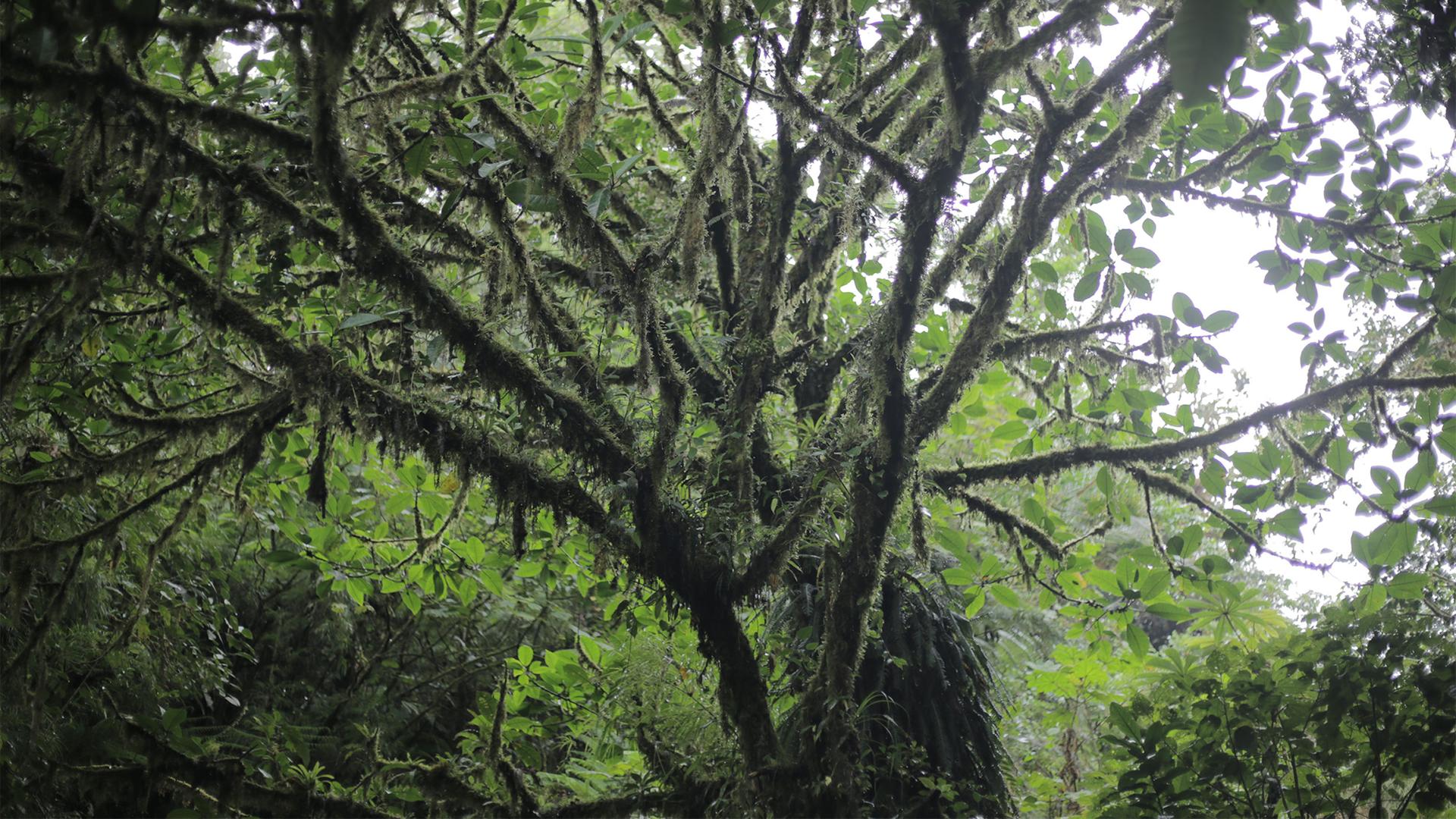
Climate change is rapidly shifting Costa Rica’s sensitive ecosystems
The tiny Central American country of Costa Rica is known as a green paradise. But climate change is hitting the country in a multitude of ways, including increasing its risk from storms and natural disasters. Nowhere is the shifting planet being felt more than in some of the country’s most iconic parks and reserves, where ecosystems are changing rapidly.
- By Michael Fox
A tree in Costa Rica’s Monteverde Cloud Forest Biological Preserve.
Costa Rica’s Monteverde Cloud Forest Biological Preserve is one of the country’s top ecological destinations.
And there’s a good reason for that. It has a lush green jungle, and it’s home to more than 2,000 species of plants and trees , 400 different types of birds and 120 amphibian and reptile species that thrive in a unique ecosystem that is nearly permanently in the clouds.
Or, at least, it used to be.
As temperatures in the area warm, the clouds are beginning to lift. On one particular day a couple of weeks ago, it was abnormally windy and mostly dry. Decades ago, there were only 25 days annually when it didn’t rain. Now, there are more than a hundred dry days a year.
“For cloud forests, that’s a lot of dry weather,” said Monteverde resident scientist Alan Pounds who has been at the reserve since the 1980s. “Plants and animals in the cloud forest are adapted for this constant input of mist and cloud; like all these little orchids that grow on branch tips have evolved to be bathed in this moisture most of the time and so they can be really affected by these kinds of events.”

Already two species of local frogs have gone extinct: the golden toad and a local breed of the harlequin frog. And there are concerns that the extravagantly feathered Quetzal bird, whose native mating habitat is in the cloud forest, may now be in danger.

Pounds wrote one of the first papers on the impact of climate change in tropical forests in the late 1990s and said the future of the cloud forest itself is at risk.
“If we continue on the present trajectory, I think it’s safe to say the cloud forest is going to disappear,” he said. “It’s already turning into something else. It’s turning into more of a seasonal rainforest.”
Pounds said even if the reserve gets the total rainfall it did before, it’ll come in clumps, rather than dispersed evenly throughout the year. The transformation means a hit to the local ecosystem, with some species being pushed out or killed off, and different ones moving in as temperatures warm.

Sensitive species could face extinction
Monteverde is just one of many places in Costa Rica that are seeing an impact.
The privately run Tirimbina Biological Reserve is located about 100 miles east of Monteverde. Tirimbina boasts of having the longest suspension bridge in Costa Rica, nearly 1,000 feet across the rushing Sarapiquí River. And it’s based in a tropical rainforest, not a cloud forest like Monteverde. But climate change is taking a similar toll there.
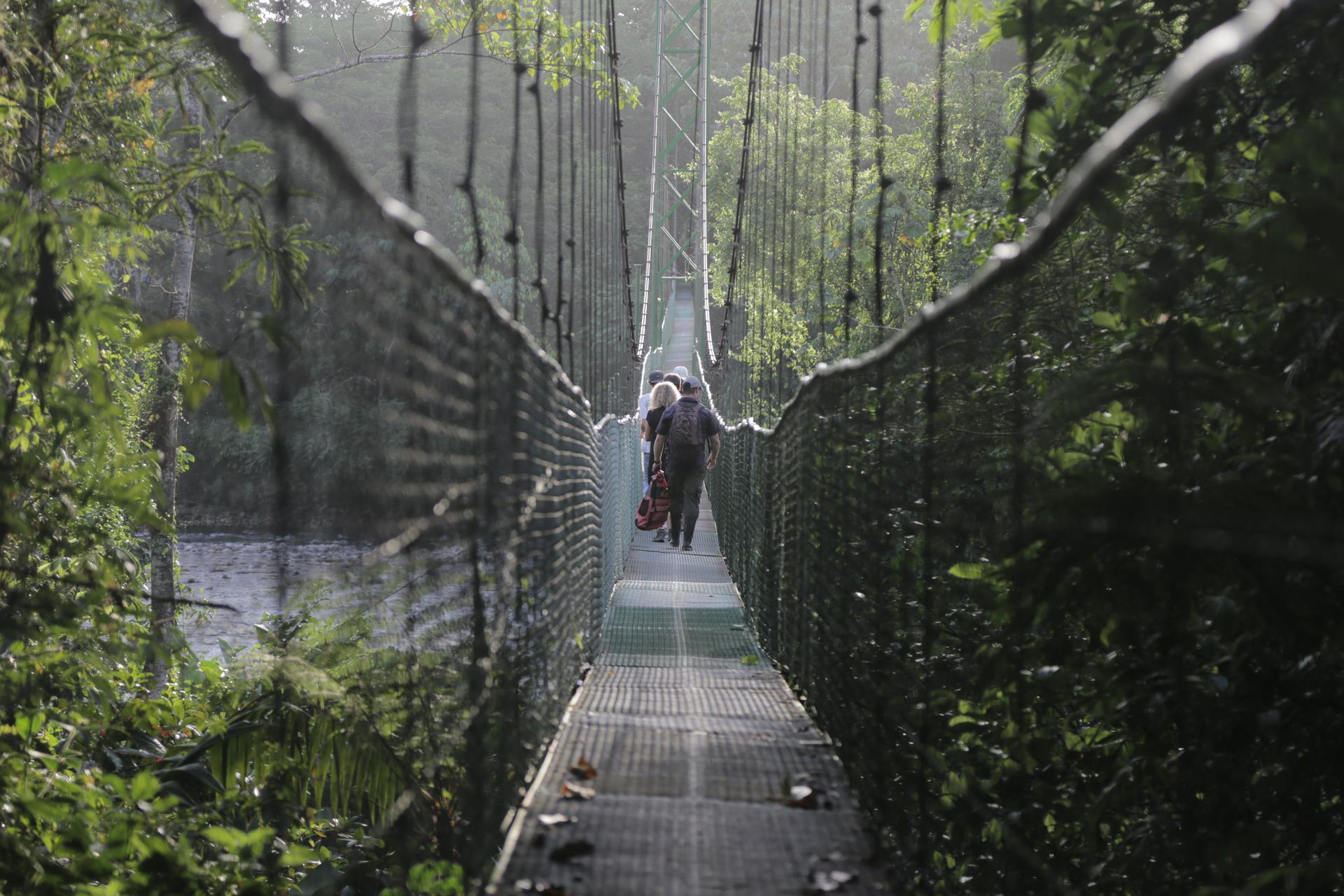
“If you came here 25 years ago, you’d find that more than 300 days out of the year it was raining, raining, raining — constant rain,” Tirimbina biologist Sergio Villega said. “But not today. Daily rainfall has decreased dramatically.”
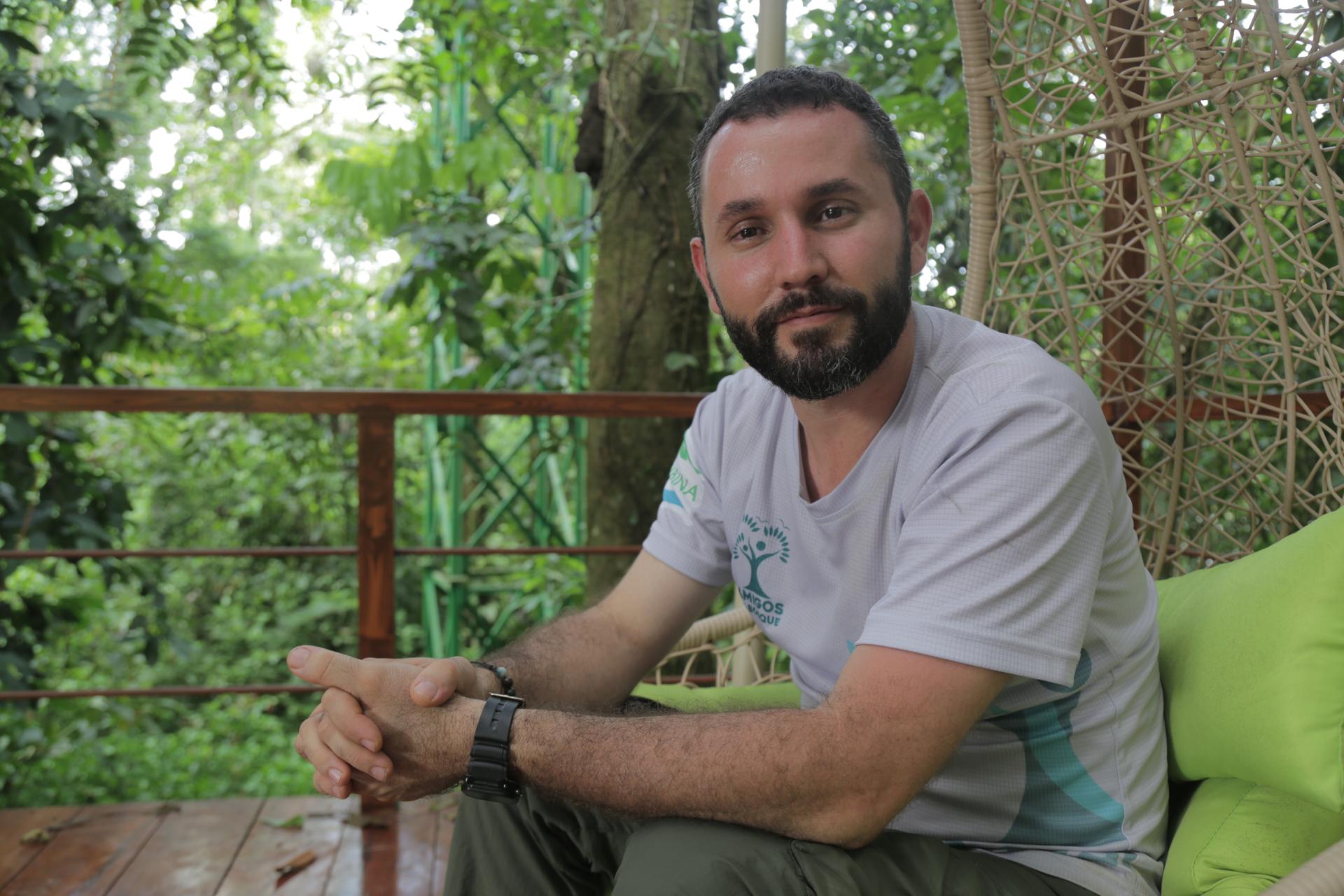
Villegas said there are studies that temperatures near the reserve have increased by almost half degree over the last 20 years.
“For a person, that might not seem like much, but for a little frog or a fish or a sensitive species, this could mean the difference between a decline in the population or not,” he explained. “Some species may move to higher regions. But others may have nowhere to go and they may be condemned to extinction or [become] highly endangered.”

Stemming the tide
Costa Rica, as a country, has been doing its best to stem the tide .
“Costa Rica has been one of the top Latin American countries on the forefront of the battle against global warming,” said Alonso Villalobos , a political scientist at the University of Costa Rica who specializes in climate and sustainability.
“Combating climate change has been state policy going back over four administrations — from the mid-2000s on,” he said.
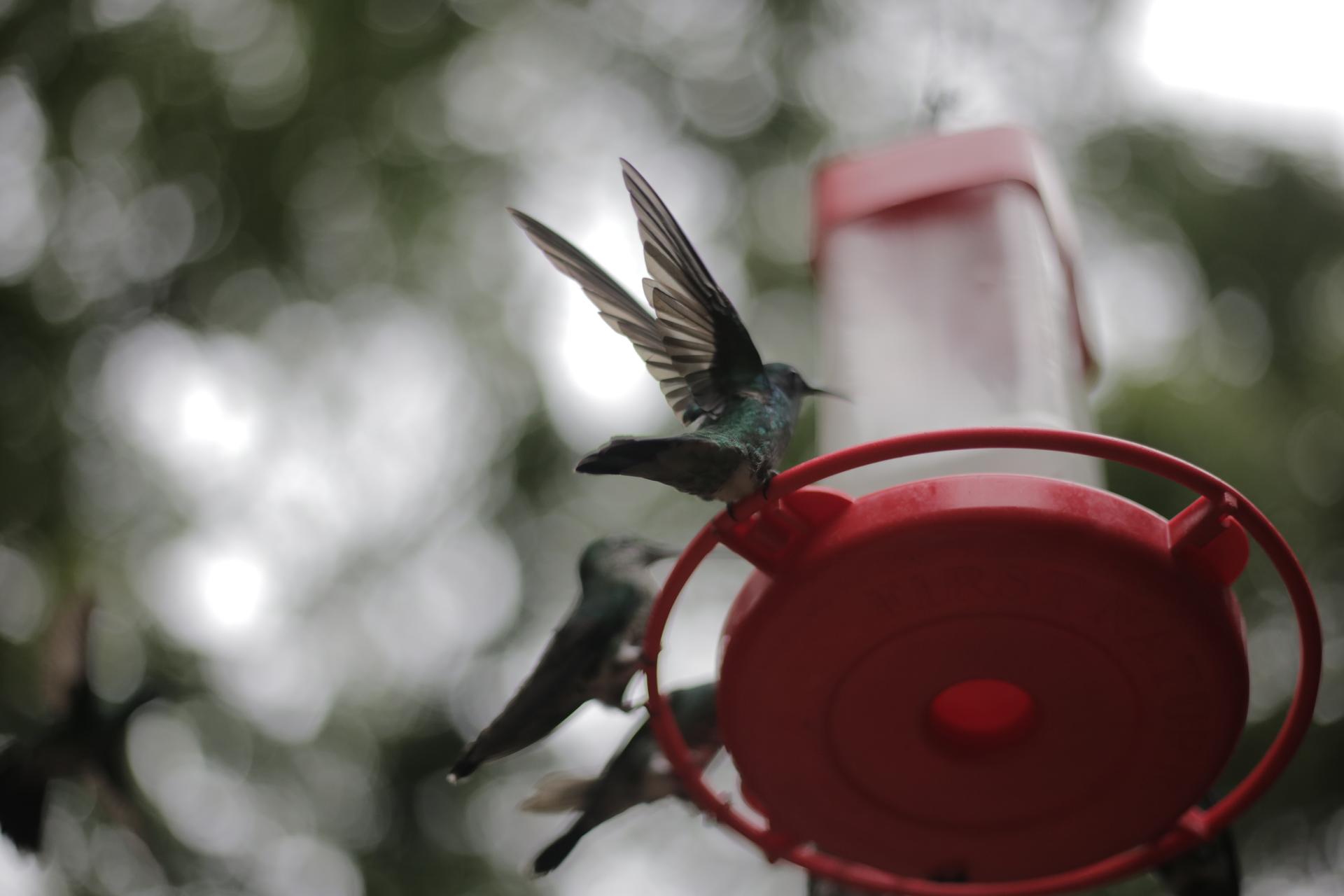
They’ve created national plans against global warming, pushed for carbon neutrality and transitioned to renewable energy.
“Previous governments have approved binding international commitments such as the Paris Agreement,” said Pascal Girot Pignot , the director of the geography school also at the University of Costa Rica.
“And public policies such as Carbon Neutrality, the Climate Change National Adaptation Policy and its National Adaptation Plan and the Decarbonization Plan,” he added. “These commitments are based on a long tradition in national and international environmental law in which Costa Rica has been a leader.”
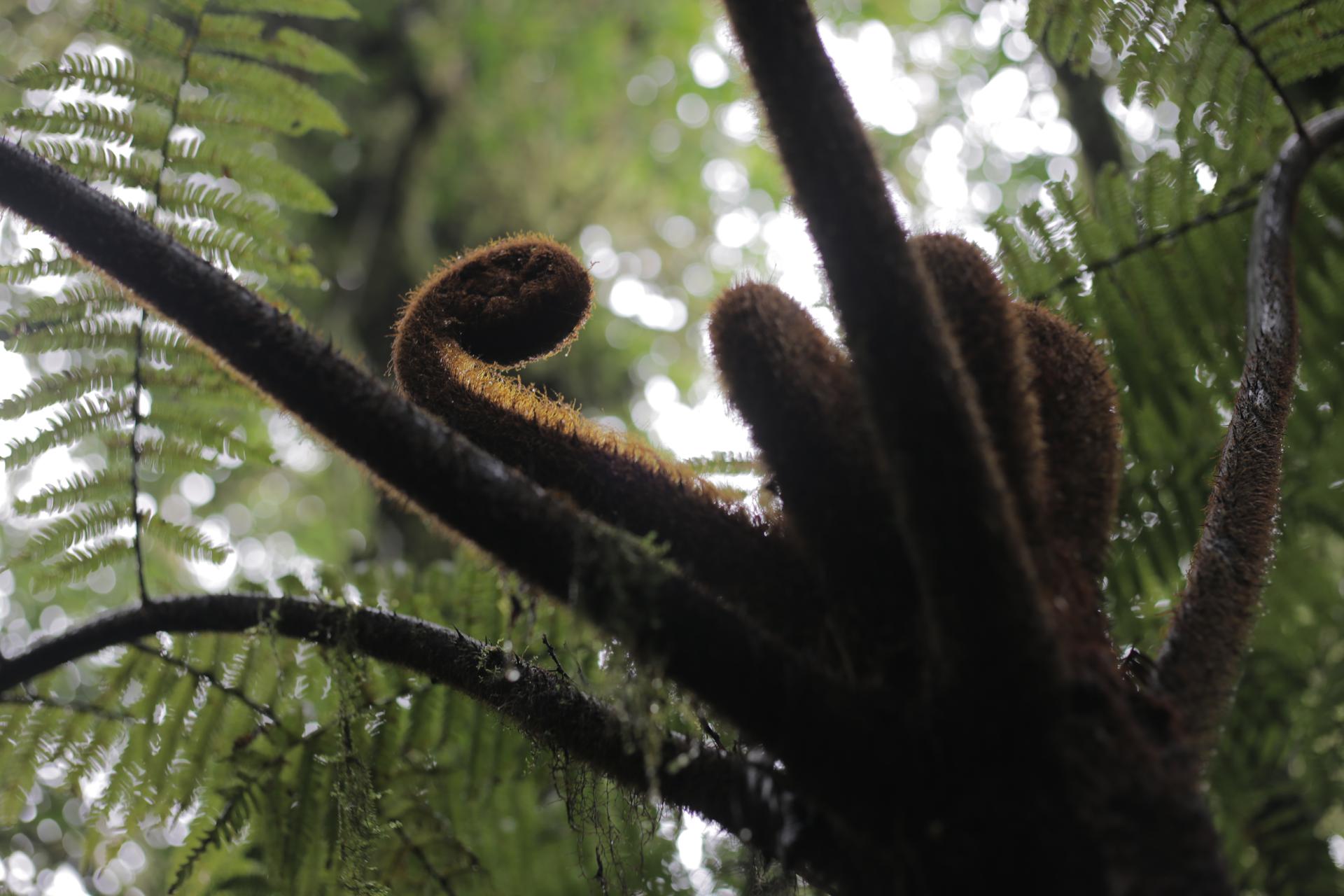
But it can’t be done alone. If other countries don’t also contribute, climate change will still affect Costa Rica.
“Climate change is not something that’s going to happen,” in the future, Tirimbina biologist Sergio Villegas said. “It already is happening and we’re witnessing the consequences.”
Related: Animal species are evolving to adjust to climate change, but scientists say time is running out
Sign up for The Top of the World, delivered to your inbox every weekday morning.

10 Most Beautiful Eco-Tourism Destinations To Visit In The Caribbean (& What To Do There)
- The Caribbean is a top eco-tourism destination due to its natural attractions like beaches and forests, as well as its commitment to eco-friendly experiences.
- Puerto Rico, St Kitts and Nevis, and Antigua and Barbuda are prominent destinations in the Caribbean for eco-tourism, offering breathtaking natural beauty and protected ecosystems.
- Anguilla, Trinidad and Tobago, Bonaire, Jamaica, Belize, Dominican Republic, and Costa Rica also provide stunning eco-friendly attractions and adventures for travelers seeking a connection with nature.
The Caribbean is renowned globally as one of the most sought-after destinations for eco-tourism and the reasons are not far-fetched. The destinations here have so much to offer particularly natural attractions like beaches and forest areas full of wildlife. Besides its natural attractions, the Caribbean also features several artificial attractions that are aimed at offering eco-friendly experiences.
In Costa Rica for instance, there are so many rainforest lodges whose sole aim, obviously, is to help connect people with nature. These are just a few reasons the Caribbean remains one of the top eco-tourism destinations in the world . For those looking for where to go, here are some of the best eco-tourism destinations in the Caribbean which also coincidentally fall under the category of most beautiful destinations in the world.
While visiting these destinations, here are some environmentally friendly tips to keep in mind .
Puerto Rico
Puerto Rico is an amazing Caribbean Island lavish with natural endowments ranging from rugged mountains, bioluminescent bays, and charming beaches to mangrove reserves, tropical reefs, and wildlife.
The island is also particularly committed to protecting these natural blessings which is why it has become one of the most prominent destinations for eco-tourists.
While in Puerto Rico, visit two of its most spectacular parks, the El Yunque National Park and San Cristobal Canyon Natural Protected Area, to witness the splendor of biodiversity.
- More Eco-friendly attractions to visit in Puerto Rico: Cambalache Forest Reserve, La Playela Beach, Flamenco Beach
Related: 10 Most Beautiful Eco-Tourism Destinations To Visit In The U.S. (& What To Do There)
St. Kitts And Nevis
St Kitts and Nevis islands are typical examples of nature’s show-off as they boast rich biodiversity and jaw-dropping natural beauty. More importantly, the islands are devoted to sustaining their natural blessings and environment, making them hot spots for eco-tourism.
To witness the magical beauty and wonder of unspoiled nature here, hike up the Nevis Peak and Mount Liamuiga in St Kitts or trek through its rich rainforest to enjoy an exciting eco-friendly adventure in the Caribbean.
- Top attractions to visit in St Kitts and Nevis : Timothy Hill, Turtle Beach, the Blak Rocks
Antigua And Barbuda
Antigua and Barbuda is a gorgeous eco-tourism epicenter in the Caribbean, with many natural endowments allowed to thrive across its tropical landscape. Over the years, the country has shown commitment to preserving its ecosystem with a ban on plastics and a focus on renewable energy, among other measures.
Today, so many attractions like the Hermitage Bay, Galley Bay Resort, the Wallings Nature Reserve, and Devil's Bridge National Park await to give visitors an unforgettable eco-friendly adventure.
- More eco-friendly attractions in Antigua and Barbuda: Valley Church Beach, Half Moon Bay, Darkwood Beach
Related: Eco-Tourism 101: What Is Eco-Travel, And Why Is It So Important?
The flat, low-lying island of Anguilla is renowned for its significant coral reefs, stunning beaches, and magnificent bays making it a top destination for eco-tourism. Visitors to this island will enjoy an exciting adventure by visiting the Rendezvous Bay which is famous for housing the Cuisinart Resort and Spa where an 18,000 square feet large greenhouse can be found.
The greenhouse grows most of its agricultural produce which ranges from tomatoes to eggplants, and herbs. For more eco-friendly adventures in Anguilla, stroll on a beach, go on a kayak tour, or engage on an eco-walking tour to catch the island’s wildlife.
- Eco-friendly attractions in Anguilla: Rendezvous Bay Beach, Prickly Pear Islands, Little Bay
Trinidad And Tobago
The twin islands of Trinidad and Tobago are eco-tourism hotbeds for eco-tourists and anyone seeking an escape from civilization. The beaches on the islands in this country are charming, boasting soft sand, and some of the world's largest corals.
Strolling along some of these beaches is a perfect way to begin an exciting eco-friendly vacation here. Next, visitors can head over to the Asa Wright Nature Center and Lodge which was established to protect part of the Arima Valley.
More than 200 bird species have been recorded in this resort making it a great place for bird-watching. Some more eco-friendly adventures to experience in Trinidad and Tobago include:
- Visit the Caroni swamp and the Nariva marsh to see the huge diversity of birds in the country.
- Explore Pitch Lake, the largest natural deposit of asphalt in the world.
Bonaire is known for its beautiful shorelines and its waters which are full of incredible reefs and a wealth of marine life. The island is particularly a hot spot for snorkeling and diving, two ideal eco-friendly adventures.
In addition, Bonaire offers features colorful buildings in its downtown areas, and so many interesting historic and cultural attractions.
Basically, Bonaire has everything needed for some exciting eco-tourism plus the country is also making remarkable efforts to become a carbon-neutral island by limiting gaseous emissions and focusing more on renewable energy.
- Top eco-friendly attractions in Bonaire: Bonaire National Marine Park, Klein Bonaire
Jamaica is famous all over the world for its abundance of beautiful white sand beaches many of which are tucked away in remote islands. Visiting one of the beaches in Jamaica is a cool thing to do plus it helps promote eco-tourism.
In addition to the beaches, Jamaica has rich wildlife, towering mountains, beautiful waterfalls, and interesting waterbodies and rock formations. These amazing natural attractions combine to make the country not just eco-friendly but also beautiful and worth visiting. Some eco-friendly things to do in Jamaica include:
- Going on a Black River Safari
- Hiking in the Blue Mountains
- Rafting on the Martha Brae River
On the east coast of Central America is the charming Belize, where nature lives undisturbed. Standing as the most amazing eco-friendly attraction in the country is the world-famous Belize Barrier Reef which is the second-largest coral reef in the world.
Visiting this attraction alone can easily pass as one of the best eco-tourism experiences a person can have. The reef is home to a wealth of biodiversity and incredibly beautiful corals, and it is worth noting that Belize is investing heavily to preserve natural endowments such as the Barrier Reef.
- More eco-friendly attractions to visit in Belize: Mayan King Falls, St Hermans Blue Hole, Cockscomb Basin, Great Blue Hole
Dominican Republic
Dominican Republic comes with unspoiled nature and incredible natural beauty making it an ideal spot for eco-tourism in the Caribbean . The island country is home to many natural attractions from waterfalls to dense forests, beaches, rocks, and more.
The country also commits to eco-tourism by moving from energy consumption to energy conservation and aims to achieve 100% energy efficiency soon.
For a wholesome eco-friendly vacation in this country, stay at one of its eco-lodges some of which include Casa Bonita Tropical Lodge, Natura Cabanas, and the Attabeyra Spa.
Then spend the day beach hopping, tasting some of its best food, and hiking some of its popular trails to get familiar with the island’s fauna and flora.
- Eco-friendly attractions to visit in Dominican Repulic: Dunes of Bani, Peninsula of Samana, Saona Island
Costa Rica is arguably the best destination for eco-tourism in the Caribbean and one of the best in the world. This island country ticks all the boxes with bold ink as it is home to everything from beautiful beaches to incredible wildlife diversity , and hectares of forest areas cut through by trails and zip lines.
Rivers that are perfect for rafting and canoeing , trails that lead to picturesque attractions, and eco-lodges designed to keep people in nature all await in this country. Basically, everything in Costa Rica screams eco-tourism, and it is even more refreshing to know that more than 25% of the country is protected from future exploitation.
- Eco-friendly attractions to visit in Costa Rica: Arenal Volcano National Park, Manuel Antonia National Park, Monteverde Cloud Forest Reserve
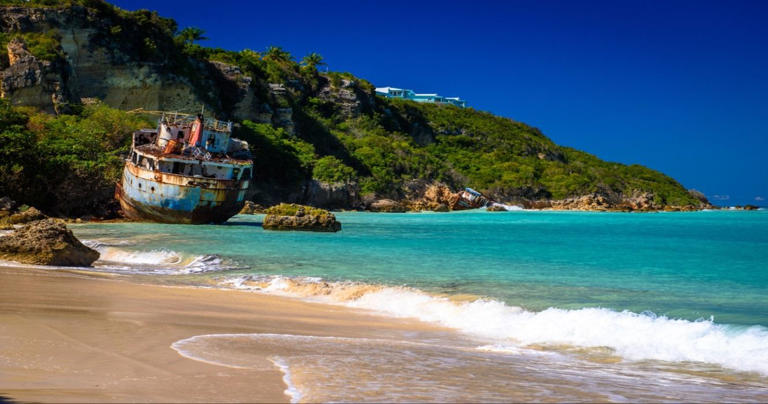
- Travel Guides
- Hotels and Resorts
Celebrate Earth Day At One Of These Year-Round Eco-Friendly Hotels Across North America

Earth Day, an occasion of activism encouraging people to help protect the planet and promote environmental achievement, takes place every April 22 in the United States. The first Earth Day occurred in 1970 in the U.S., and now, nearly 200 countries around the globe use it to promote better stewardship of the world. Of course, taking care of the Earth should be at the top of people's minds beyond just one day out of the year, both in their native countries and while abroad.
If you love to travel, you should consider making environmental conservation one of your main priorities, as you won't have the opportunity to visit many of the world's natural wonders if they no longer exist. However, determining whether a destination prioritizes sustainability can prove challenging. While all places have room for improvement, some do much better than others regarding environmental impact. From California and Connecticut to Costa Rica and more, these five hotels across North America go above and beyond when it comes to sustainability, and a stay at any of them will support the ethos of Earth Day year-round.
Inn at Laurel Point - Victoria, British Columbia
British Columbia's Vancouver Island is an excellent island for ecotourism . In Victoria, on the island's southern end, the Inn at Laurel Point leads the charge of sustainability. Overlooking Victoria's Inner Harbour, it became the province's first-ever carbon-neutral hotel in 2009. "We are true believers in regenerative travel, committed not only to minimizing our impact on the environment, but to restoring balance for our climate," Eda Koot, general manager of Inn at Laurel Point, told Forbes . A big part of what makes the hotel so sustainable remains out of sight from guests and goes back to its initial design — a hydrothermal system efficiently controls the hotel's temperature, which keeps its energy usage down.
Other sustainably-minded initiatives at the Inn at Laurel Point include donating unused bath products, upcycling old linens, and composting. Plus, its gardens house 60,000 honeybees, which play a vital role in the ecosystem as pollinators. If the presence of bees makes you nervous, don't worry; the property keeps them tucked away in a corner of the gardens. The inn also supports several local environmental organizations that help with Vancouver Island's reforestation and protecting vital habitats for wildlife in the Great Bear Rainforest. So, when you stay at the Inn at Laurel Point, you help safeguard the coastal rainforest.
'Alohilani Resort - Honolulu, Hawaii
Hawaii has struggled with managing tourism's environmental impact. However, environmentally-minded travelers don't have to stop visiting entirely; they should just do so more mindfully, such as staying at a property committed to sustainability. One option is 'Alohilani Resort in Honolulu's Waikiki neighborhood, which has one of the world's most famous beaches. It was the first Hawaii hotel to pledge to be internationally certified as carbon neutral. It has already achieved one step in that direction: all its electricity comes from renewable sources — an impressive feat for a property with two towers, 39 floors, 839 guest rooms, a spa, and a rooftop pool.
'Alohilani Resort has partnered with the Hawaiian Legacy Reforestation Initiative to plant 100,000 indigenous trees on Oahu, donating a portion of every guest's stay towards that cause. Plus, it doesn't utilize single-use plastics, takeout containers from its restaurants are compostable, and the landscaping consists of drought-tolerant and native plants. 'Alohilani Resort has also participated in the Mālama Hawaii program in the past, where guests get incentives for giving back and volunteering during their trip to Hawaii. At one point, guests who booked the Unforgettable, Soulful Hawaii package received a $200 credit to use at the resort's multiple restaurants and the chance to plant a tree at Gunstock Ranch on the North Shore, among other benefits.
Hotel Belmar - Monteverde, Costa Rica
If you want to plan an incredible family vacation to Costa Rica that is also planet-friendly, consider booking a stay at the Hotel Belmar in the Monteverde Cloud Forest. The 26-room family-owned boutique property is Costa Rica's first-ever carbon-neutral certified hotel. You can even make your visit carbon-negative by donating to its "Offset Your Footprint" program. Guests will find the minibar stocked with local and organic items and biodegradable and organic bath products in their rooms. Throughout the property, you'll also have a hard time finding any plastic.
The hotel's commitment to sustainability extends to its Restaurante Celajes , where it serves farm-to-table food and drinks using ingredients from its organic farm and garden. It composts all the kitchen leftovers and uses them as animal feed to help complete the cycle. Touring the hotel's farm, Finca Madre Tierra , you can learn more about its regenerative agriculture program. You can also embark on a birding experience or climb ficus trees — taking time to connect with nature can help inspire greater care for the environment.
Two Bunch Palms - Desert Hot Springs, California
Two Bunch Palms in Desert Hot Springs in California's Coachella Valley is a picturesque adults-only retreat where you can soak in the area's natural mineral-rich water; it's been a wellness destination for decades. The resort isn't just about wellness for the guests; it's also dedicated to wellness for the planet. Two Bunch Palms is North America's first-ever carbon-neutral resort, thanks to the energy provided by its 4-acre solar farm.
The company has installed energy- and water-efficient fixtures throughout the resort and uses biodegradable cleaning products. The restaurant at Two Bunch Palms utilizes local ingredients in its seasonal menu whenever possible—some as local as from its own gardens—and guests get reusable water bottles for their stays. Beyond the resort's buildings, it has worked to update the landscaping to remove invasive, water-hungry plants like tamarisk trees in favor of more native, drought-resistant plants.
Hotel Marcel - New Haven, Connecticut
From the outside, the Hotel Marcel in New Haven, Connecticut, doesn't exactly shout eco-friendly, thanks to its brutalist architectural design — it was built in the 1960s to be the headquarters for the Armstrong Rubber Company. However, sustainability played a significant role in converting the former office building on the National Register of Historic Places into a hotel in the 2020s. Thanks to its energy efficiency, it's platinum LEED certified and the country's first certified Passive House hotel. Hotel Marcel stands out in terms of sustainability in multiple ways: all the electricity in the 165-room hotel comes from its solar panels rather than fossil fuels, it composts uneaten food and kitchen scraps, and it bypasses single-use plastic whenever possible.
Creating the hotel out of an already existing building went a long way towards achieving its impressive eco-friendly status. Bruce Becker, whose architecture firm Becker + Becker owns and worked on the design of the Hotel Marcel, told CNN , "You have to reuse, recycle and reinvent existing buildings to be truly sustainable." The renovation utlized the materials already there whenever it could, repurposing aspects like light fixtures and using locally sourced materials and furniture as much as possible, which also helped reduce its carbon footprint.
Recommended

IMAGES
VIDEO
COMMENTS
Explore Costa Rica's extraordinary biodiversity and natural wonders with ecotourism activities. Learn about the country's 29 national parks, 19 wildlife refuges, 8 biological reserves and other protected areas that preserve 25% of the national territory.
Discover the best places to visit, things to do, and tips for ecotourism in Costa Rica, one of the world's best ecotourism destinations. Explore its diverse ecosystems, wildlife, culture, and history with this comprehensive guide.
Costa Rica is the perfect destination for ecotourism: ethical tourism designed to respect and protect threatened natural areas and wildlife. Twenty-five percent of the country is a protected with over 32 beautiful national parks within just 19,730 sq. miles. Four percent of all species on Earth live within Costa Rica's lush, verdant landscape.
Whitewater Rafting. Whitewater rafting is another exhilarating activity that allows visitors to explore Costa Rica's pristine rivers and vibrant ecosystems. With a range of difficulty levels available, from gentle Class I rapids to challenging Class IV rapids, there is an option suitable for all ages and skill levels.
With the country aiming for carbon neutrality by 2050, eco-tourism's role is more crucial than ever. As travelers, our choices can support this vision, ensuring that Costa Rica remains a lush, vibrant, and eco-friendly destination for generations to come. Conclusion. Eco-tourism in Costa Rica is more than a travel trend—it's a reflection of ...
Sustainable Destinations in Costa Rica: Arenal and Monteverde. Hanging bridges in La Fortuna, near Arenal. Established in 1991, Arenal Volcano National Park protects 29,850 acres and at least 131 ...
Check out our list of the Best Eco-Lodges in Costa Rica . 2. EXPLORE LOCAL FARMS. Among all the eco-tourism activities in Costa Rica, a tour around Costa Rica's organic farms is still the best way to not only enjoy local fare but learn about how the nation produces its fresh ingredients.
Costa Rica was a pioneer in ecotourism. By the early 1990s, ecotourism had become a key component of the tourism industry in Costa Rica. Many of the first ecotourists to visit Costa Rica were academics and field biologists who came to study ecology. The many habitats of Costa Rica, such as rainforests, tropical forests, marine areas and ...
Ecotourism in Costa Rica. Cocos Island is a prime ecotourism destination in Costa Rica. A World Heritage Site, ranked among the top 77 nominees for the New 7 Wonders of Nature. [1] Ecotourism is a key component of the tourism industry in Costa Rica. By the early 1990s, Costa Rica became known as the poster child of ecotourism. [2]
Ecotourism throughout Costa Rica. Ensuring excellent ecotourism, Costa Rica has devoted an estimated 26% of its land to national parks, wildlife reserves and protected lands. For a tiny country of just 19,730 sq. miles (51,100 sq. km), it has a lot to offer. There is so much to see and do in Costa Rica. Sight various exotic birds as you hike ...
Welcome to Costa Rica! This beautiful country is known for its stunning beaches, lush rainforests, and incredible wildlife. Whether you're looking for adventure or relaxation, Costa Rica has something for everyone. Some of the top attractions include Arenal Volcano, Manuel Antonio National Park, La Paz Waterfalls, Papagayo Peninsula ...
Ecotourism is the idea of creating a travel experience that emphasizes conserving the environment, protecting natural areas through minimal impact travel, education of the traveler, and improving the lives of local people. Costa Rica has been a popular ecotourism destination since the 1990's.
Costa Rica ecotourism destinations are lesser-known and include regions with great natural attractions, but often lack tourism infrastructure, like paved roads and an abundance of accommodation and restaurant options. Stay in Eco Lodges. Staying in an eco lodge in Costa Rica is a wonderful way to travel sustainably. Although they can often be a ...
Costa Rica's history as an ecotourism destination can tenuously be traced to 1963, when Cabo Blanco Absolute Nature Reserve on the Nicoya Peninsula became the country's first major conservation area. But Cabo Blanco wasn't created as a place for visiting - it was designed entirely to protect the threatened forest.
Ecotourism in Costa Rica has been developing for several years, making it currently one of the world's leading countries in this type of tourism. The fundamental pillar of ecotourism is the observation and enjoyment of natural places while causing the least possible impact, bringing benefits to tourists, local communities, and the environment ...
A Little History. Costa Rica's push towards ecotourism began with the establishment of the Cabo Blanco National Reserve in 1963 and the first national parks in 1971. The trend continued and today the Costa Rican park system includes 70 entities and protects over 3,221,000 acres (1,303,492 ha).
Pacific Edge Eco Lodge. Overlooking the sea and featuring a captivating pool with scenic views, Pacific Edge Eco Lodge stands as a sustainable haven in Dominical, merely 2.4 km from Playa Dominicalito. The accommodation, offering mountain-view balconies, provides a unique and eco-conscious experience.
written by admin 2024/03/27. In the lush landscapes of Costa Rica, a shift is occurring, drawing eco-tourists away from well-trodden paths to the emerging hotspots of Upala, Los Chiles, and the ...
Eco-tourism is one of the hallmarks of Costa Rica, which has become a world-renowned destination for travelers looking to experience the country's rich biodiversity and natural beauty in a sustainable way. Here are some of the key aspects of eco-tourism in Costa Rica: National Parks and Protected Areas Costa Rica has a network of national parks and protected areas that cover nearly 25% of the ...
Costa Rica's ecotourism success is demonstrated through the awards for sustainable tourism that the country has won. The most notable of these was the Champion of the Earth award from the United Nations. Furthermore, Costa Rica is well on its way to being the first carbon-neutral country in the world.
Costa Rica, often called the Rich Coast, is a paradise for eco-conscious travelers seeking thrilling adventures amidst breathtaking natural beauty. With its lush beaches, and a commitment to ...
Costa Rica is an eco-tourism hub due to its rich biodiversity. The nation thrills with beaches, volcanoes, and unique culture. Top spots include Arenal Volcano, Tamarindo, and the Nicoya Peninsula.
At Eco Tours Costa Rica, our vacation packages are crafted to inspire, but we believe in flexibility. Explore our website for ready-to-go adventures, or let us tailor any package to fit your unique preferences and budget. Your dream vacation, your way—because personalized memories last a lifetime. Check more packages.
The strong emphasis on sustainable practices and development of protected areas has boosted ecotourism in Costa Rica to a large degree. This is a mission close to My Costa Rica's own philosophy and our Costa Rica Ecotourism nature packages are perfect for the environmentally aware Ecotourist. Those looking to experience an incredible degree ...
Costa Rica. Known as an eco-tourism pioneer, Costa Rica is home to diverse animals, beautiful jungles, and a dedication to sustainability. It offers an outstanding selection of eco-lodges and ...
The government of Costa Rica recognized China Kichá as Cabécar territory back in 1956. But it annulled that decision in 1982, claiming that too many of its Indigenous residents had migrated away ...
In Costa Rica, ecotourism plays a pivotal role in both the tourism sector and the overall economy. With its abundant biodiversity and commitment to sustainable practices, the country has become a prime destination for eco-conscious travelers seeking authentic and nature-based experiences.
The tiny Central American country of Costa Rica is known as a green paradise. But climate change is hitting the country in a multitude of ways, including increasing its risk from storms and natural disasters. Nowhere is the shifting planet being felt more than in some of the country's most iconic parks and reserves, where ecosystems are changing rapidly.
Basically, everything in Costa Rica screams eco-tourism, and it is even more refreshing to know that more than 25% of the country is protected from future exploitation.
British Columbia's Vancouver Island is an excellent island for ecotourism. In Victoria, on the island's southern end, the Inn at Laurel Point leads the charge of sustainability. Overlooking Victoria's Inner Harbour, it became the province's first-ever carbon-neutral hotel in 2009. ... The 26-room family-owned boutique property is Costa Rica's ...